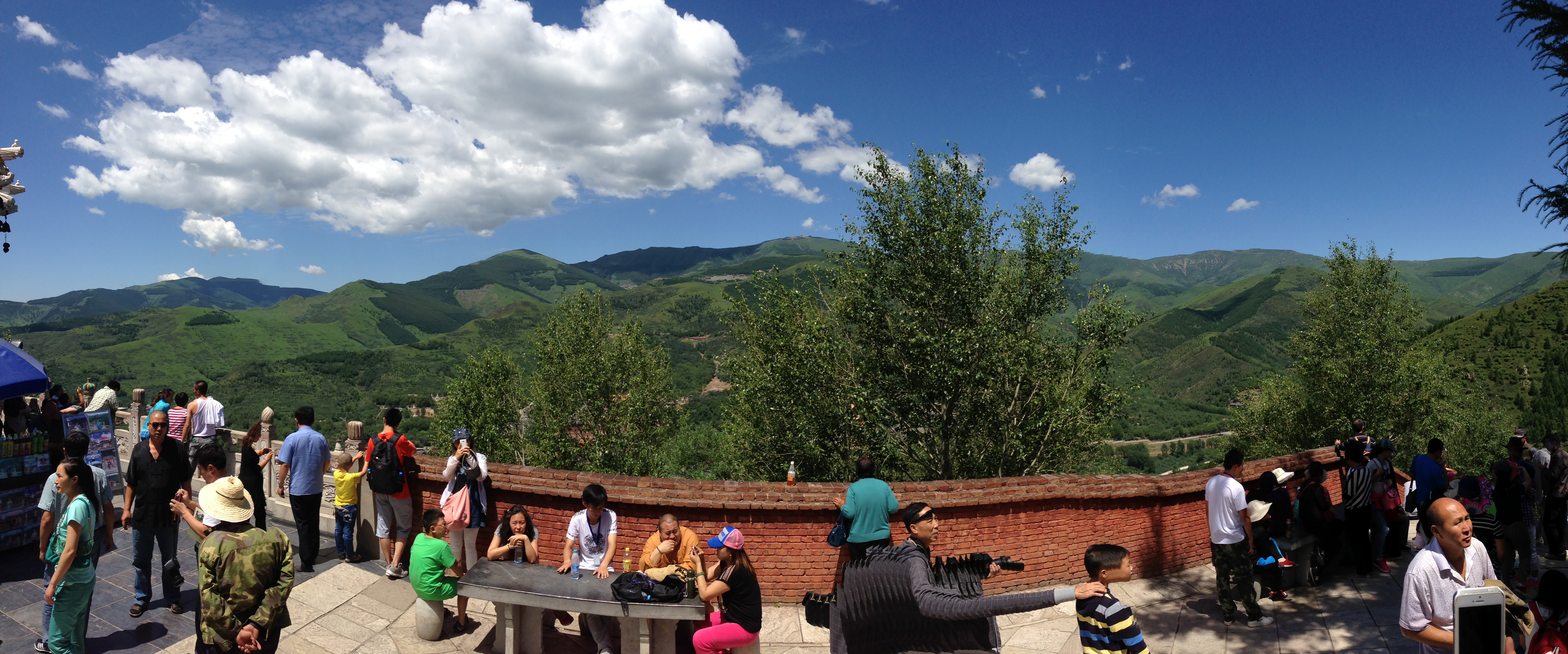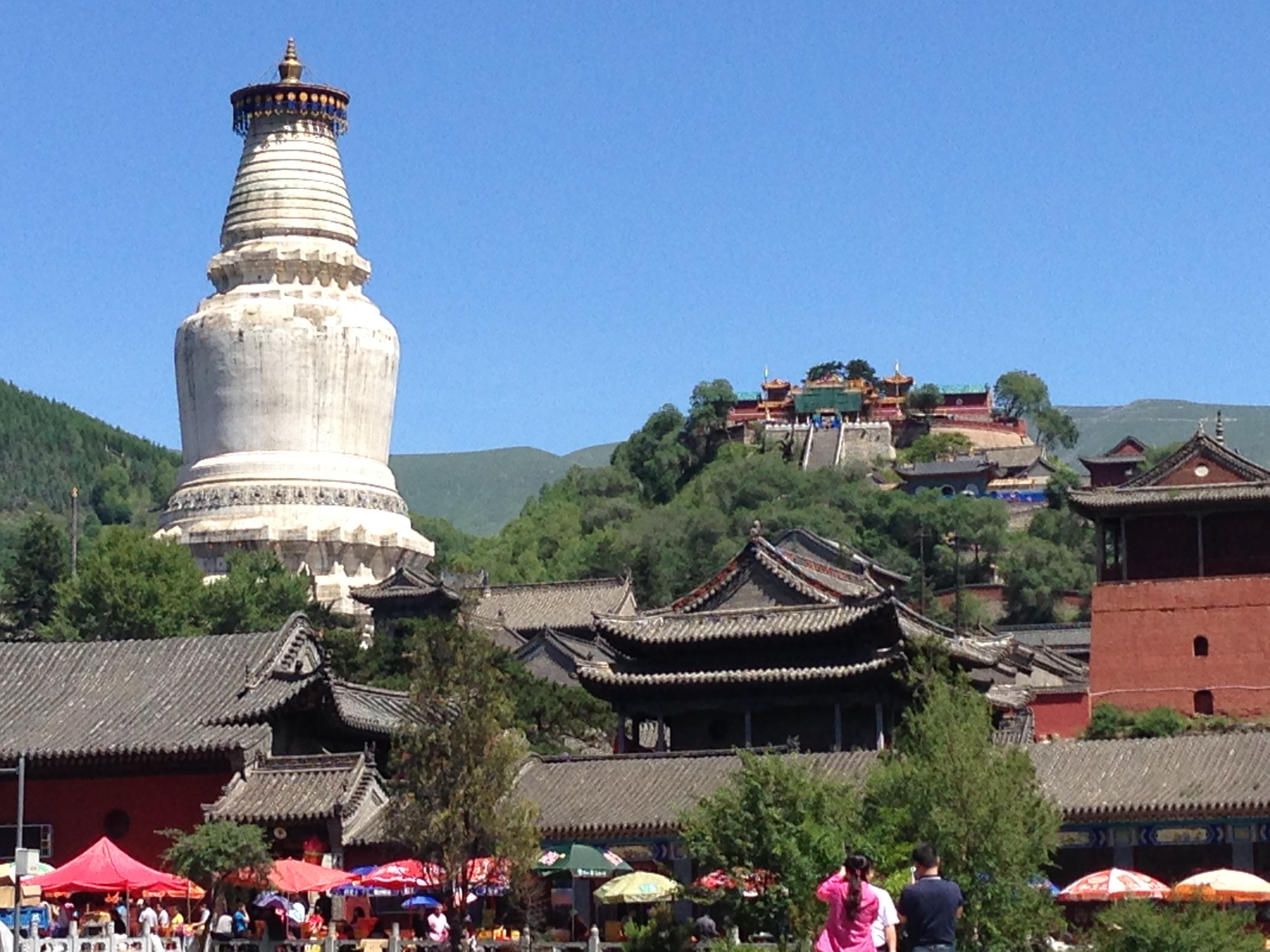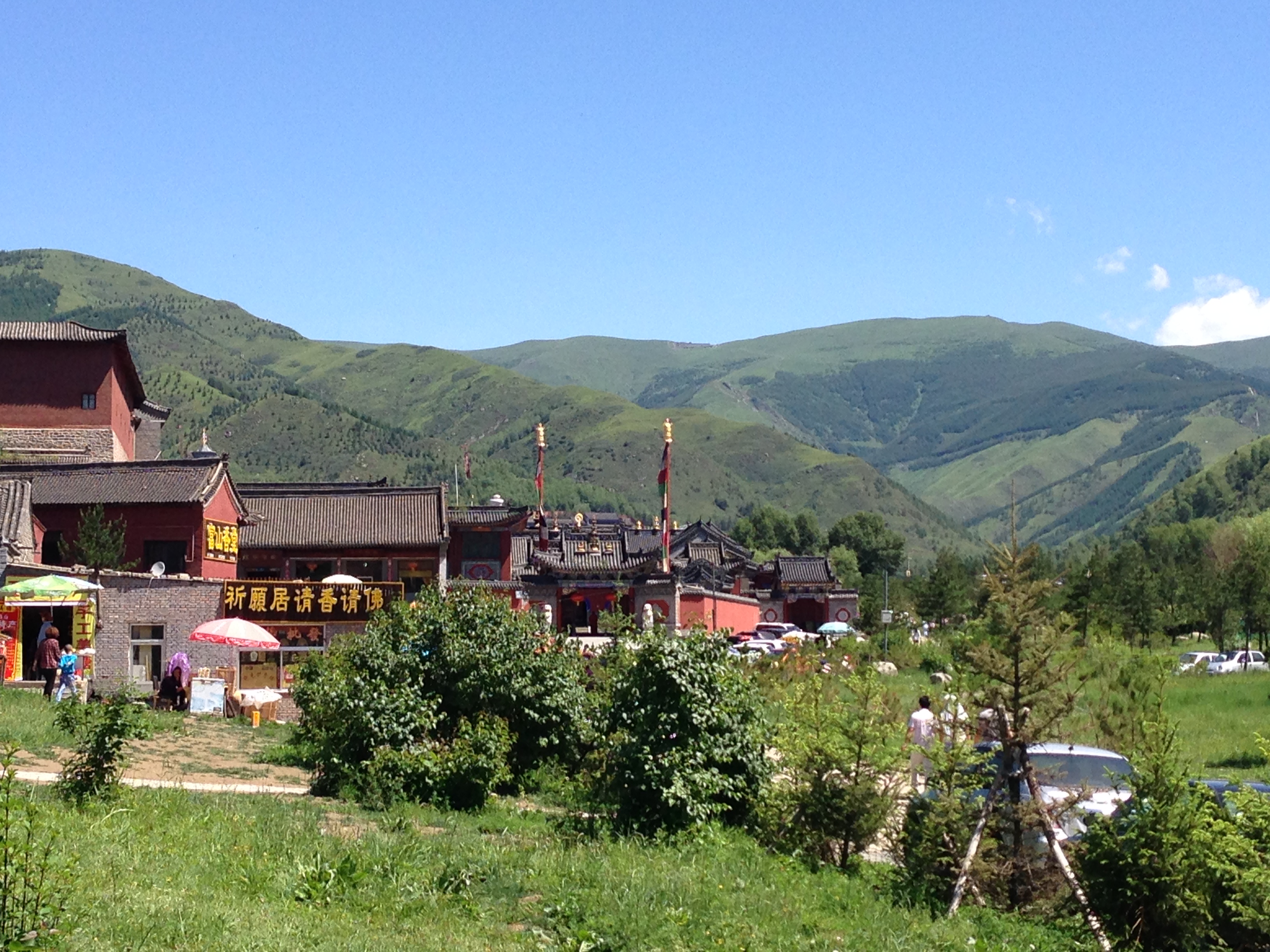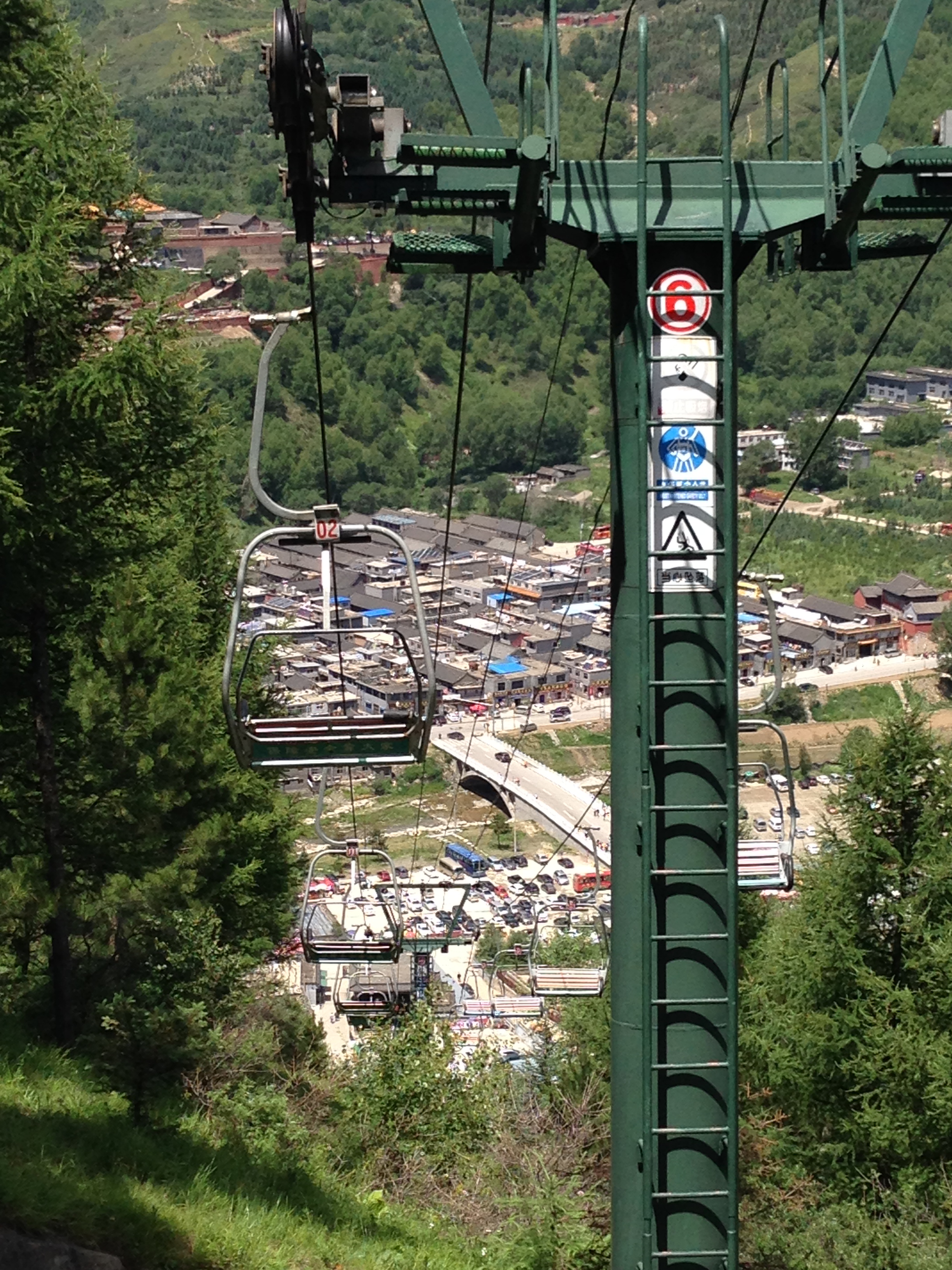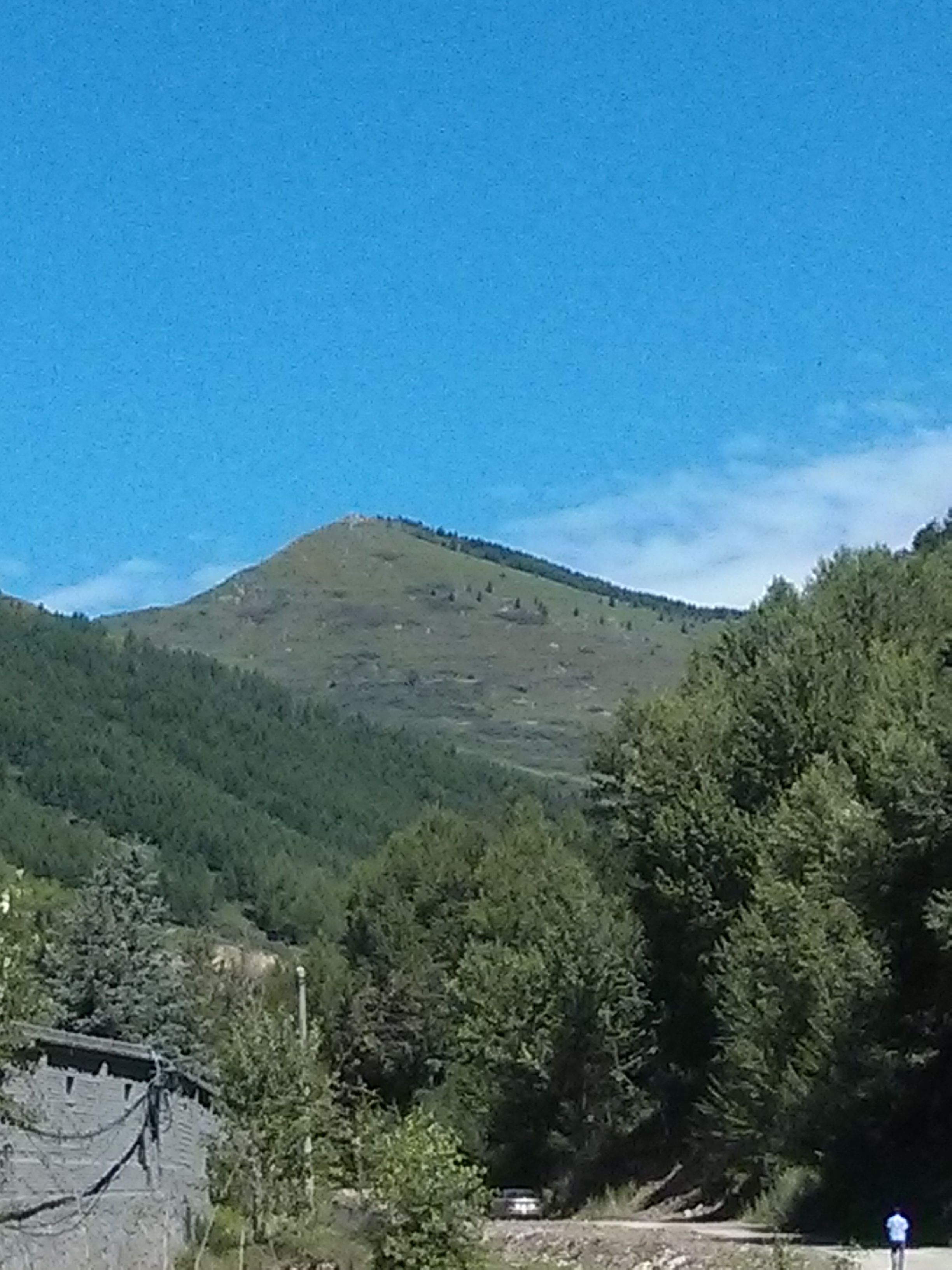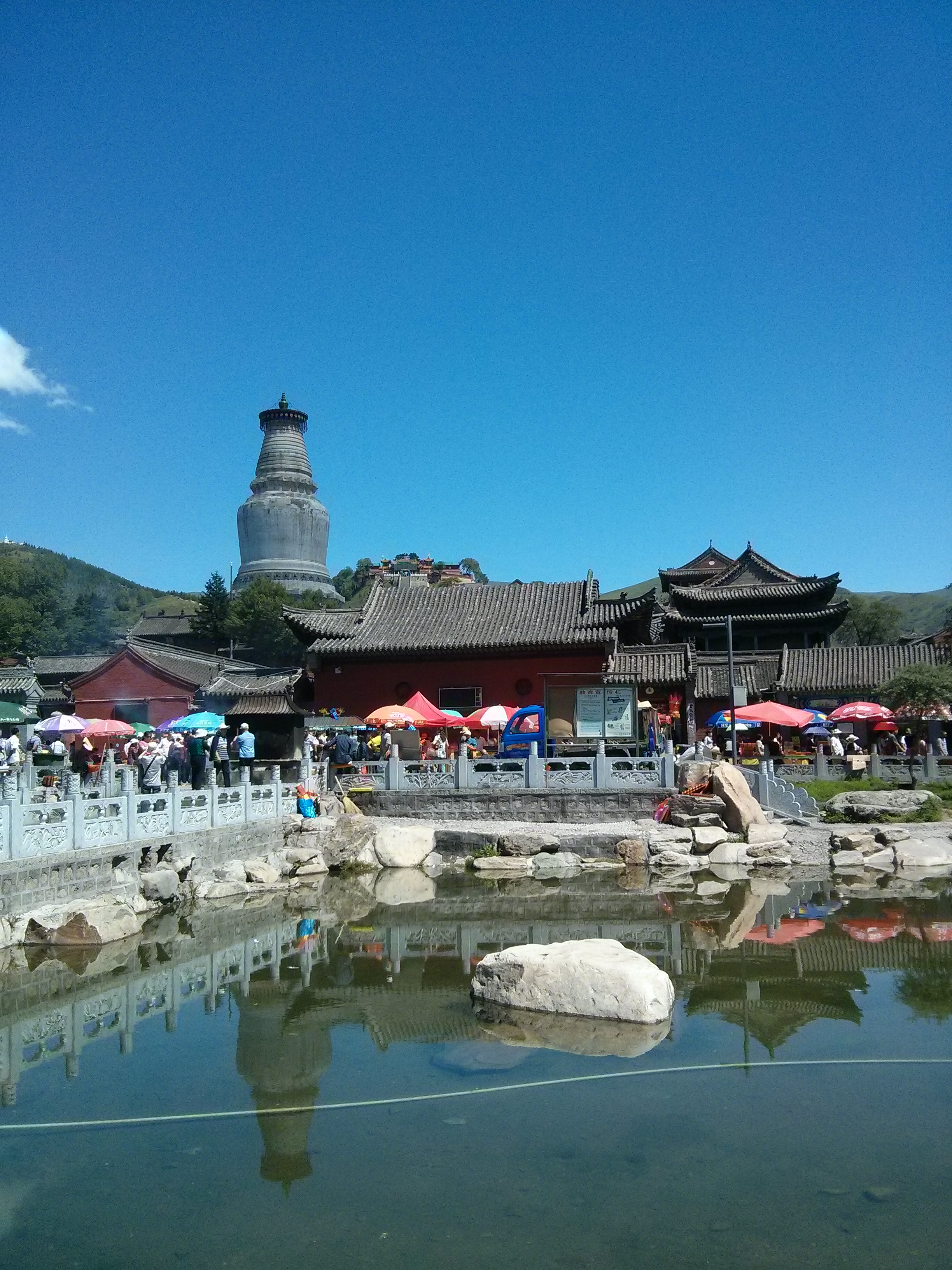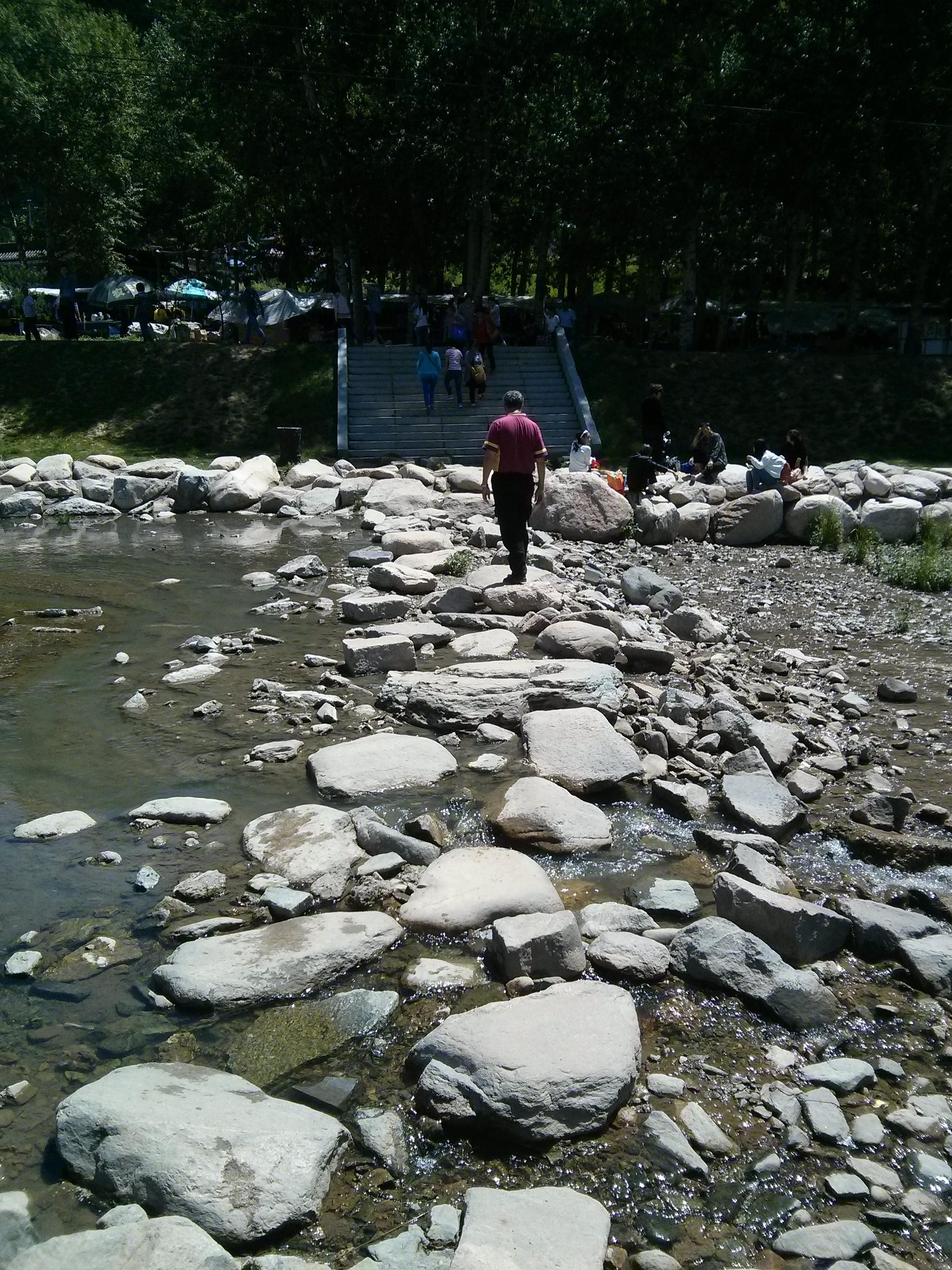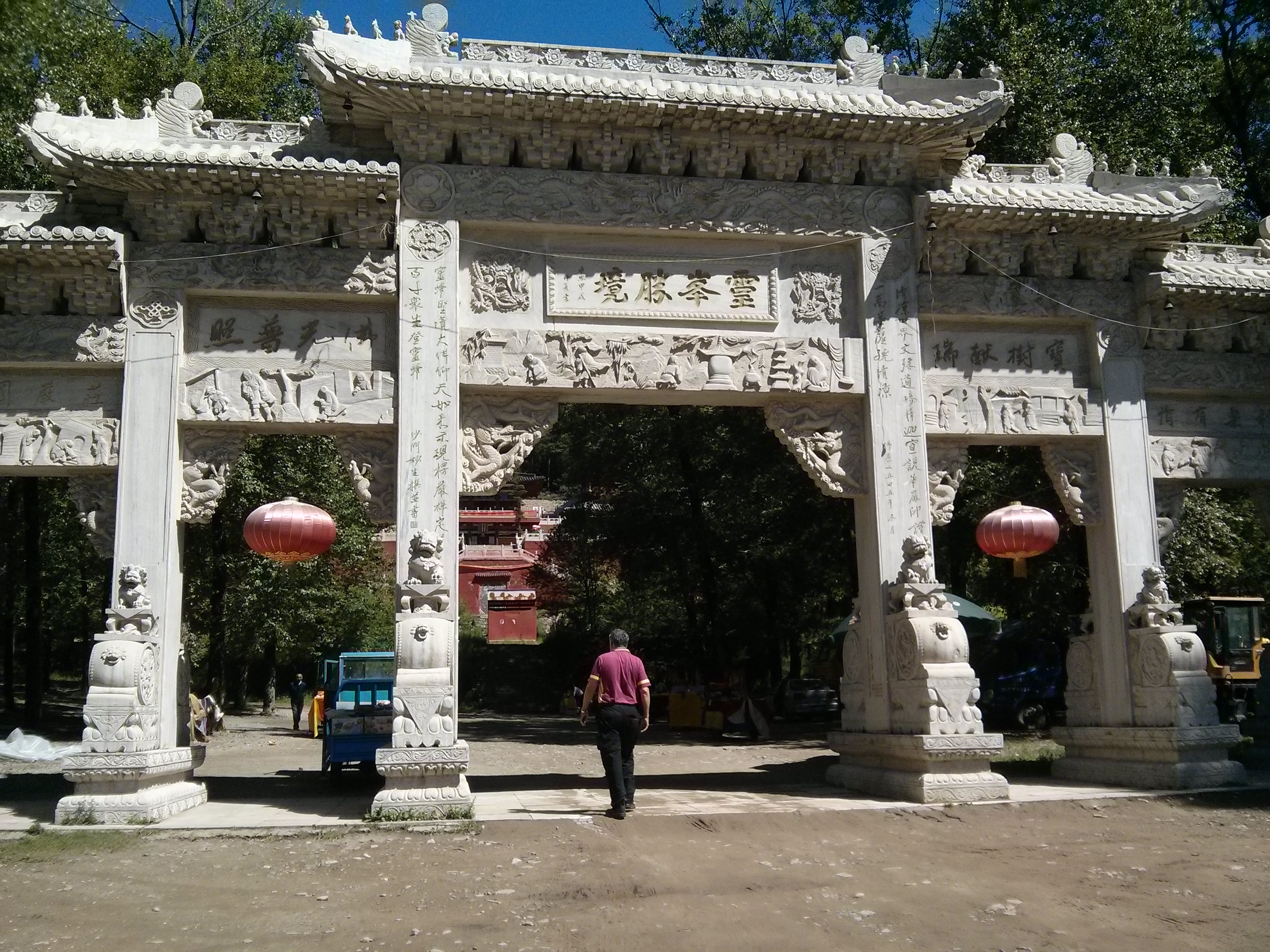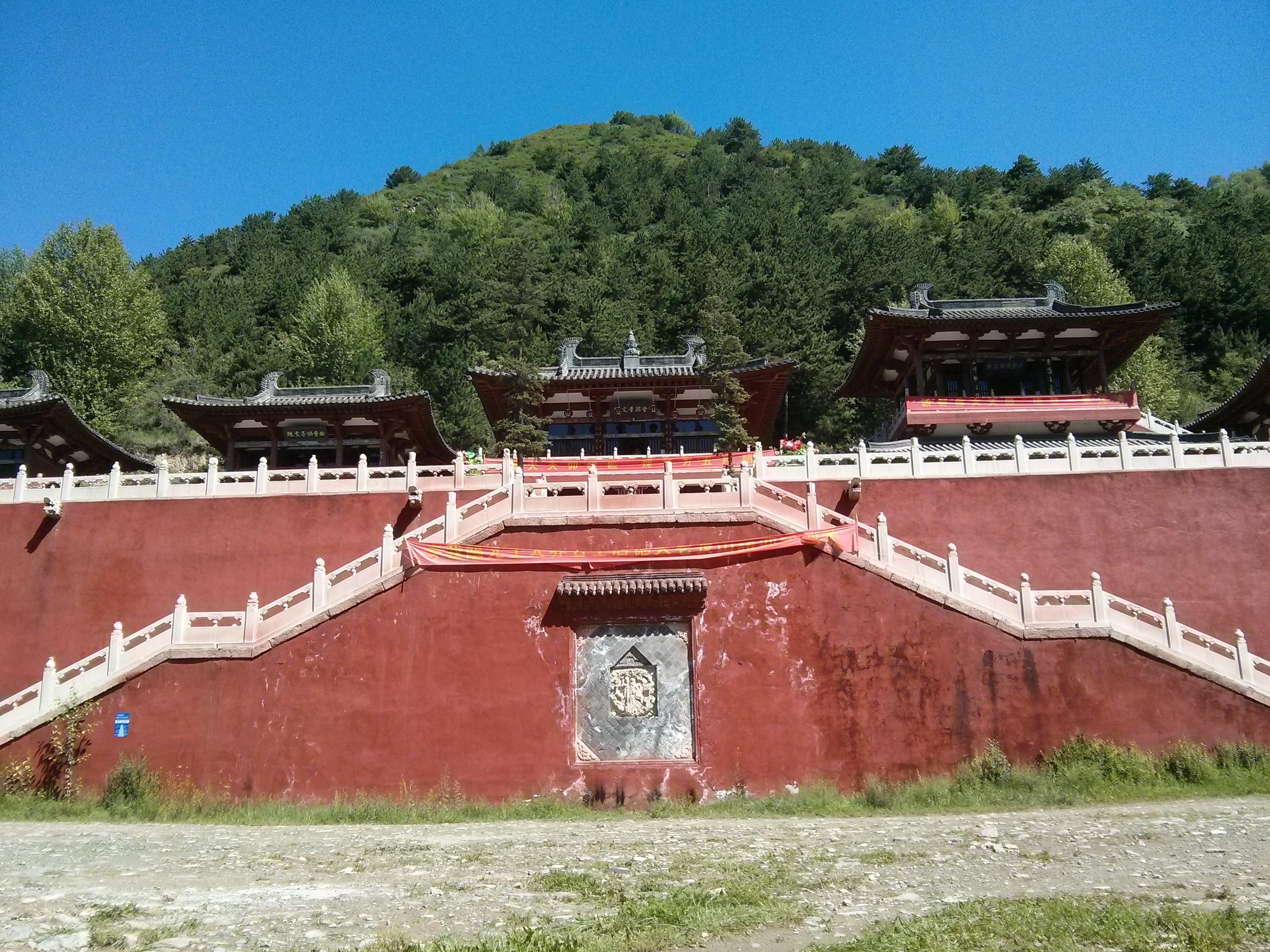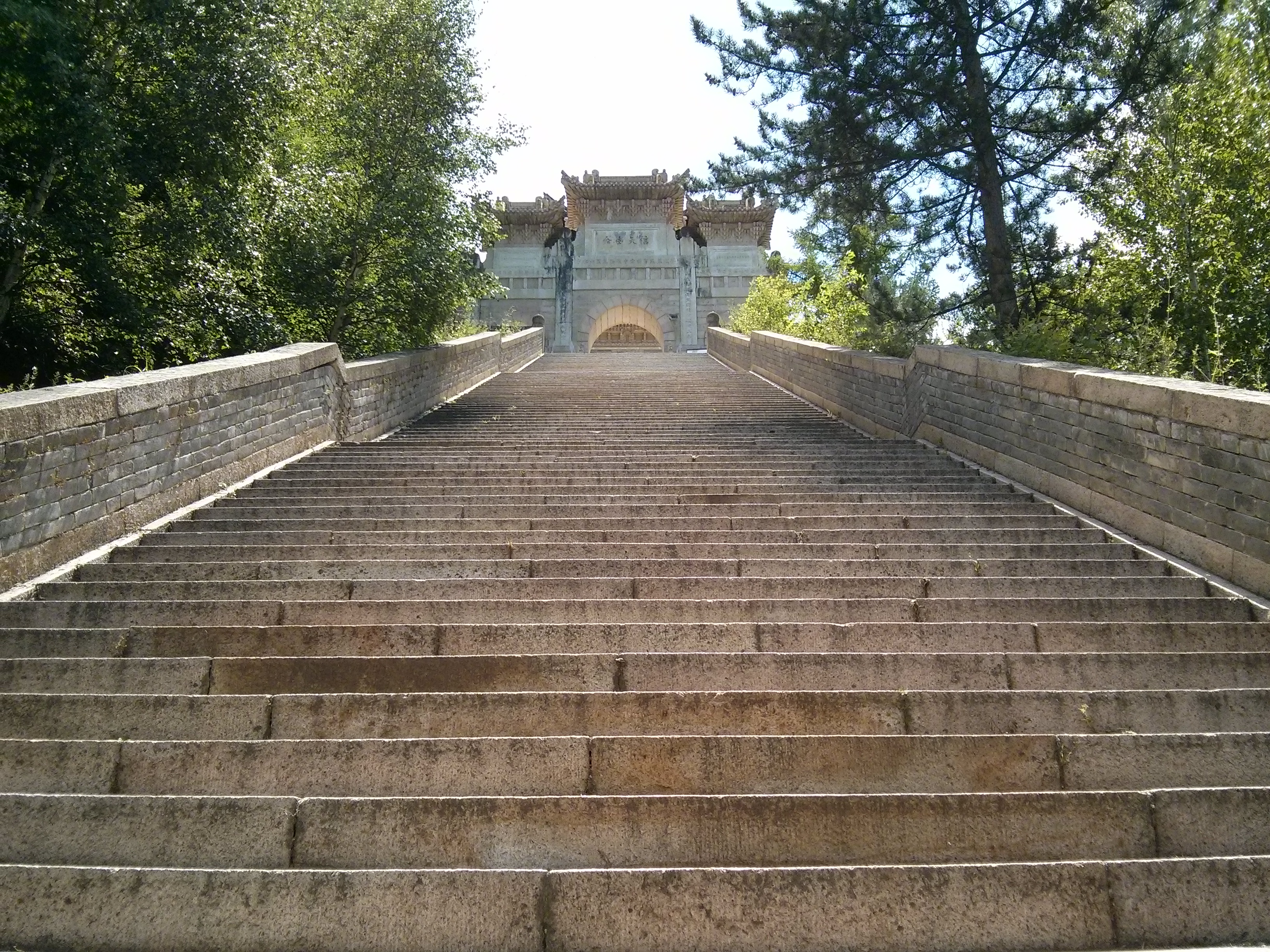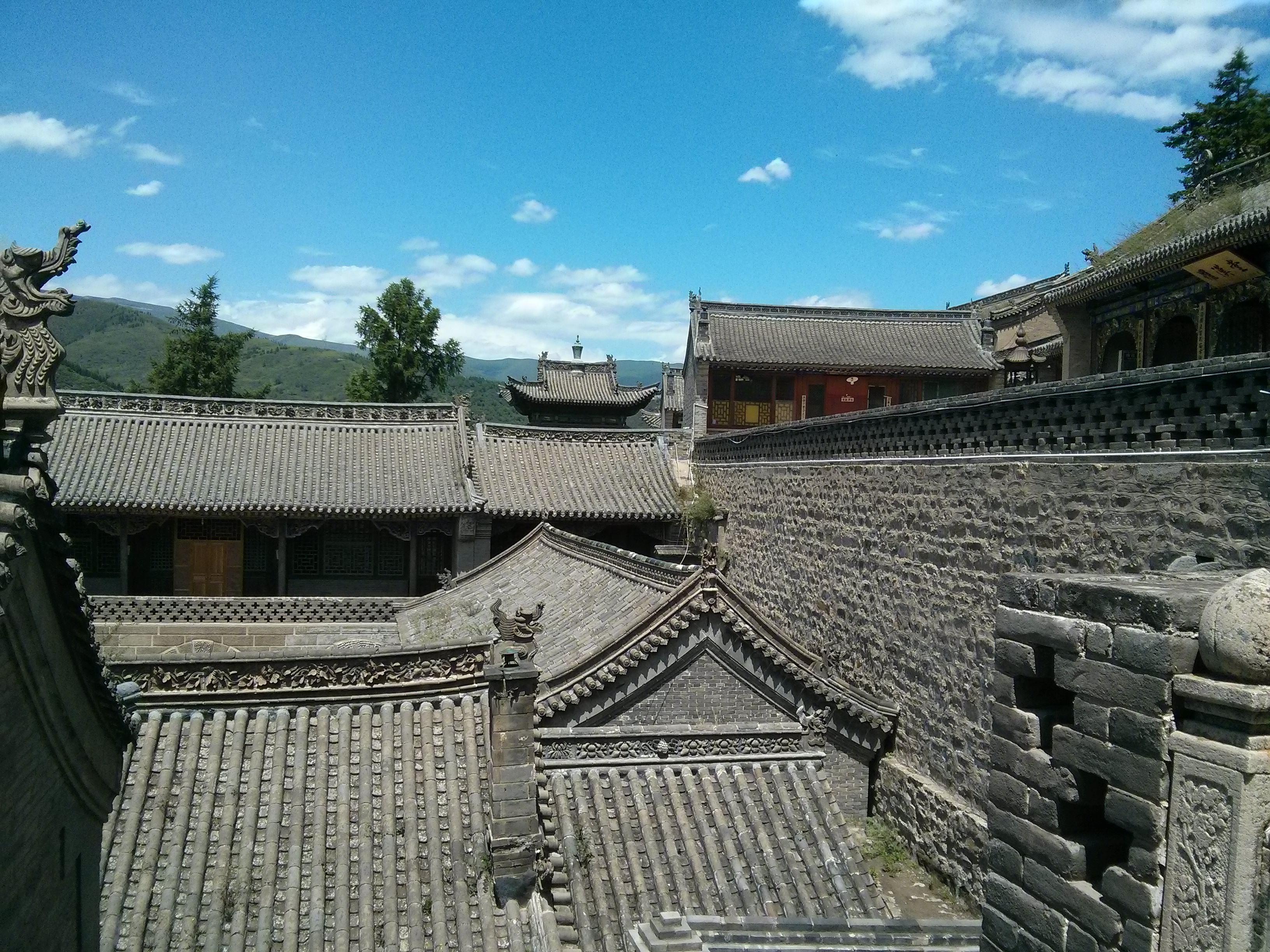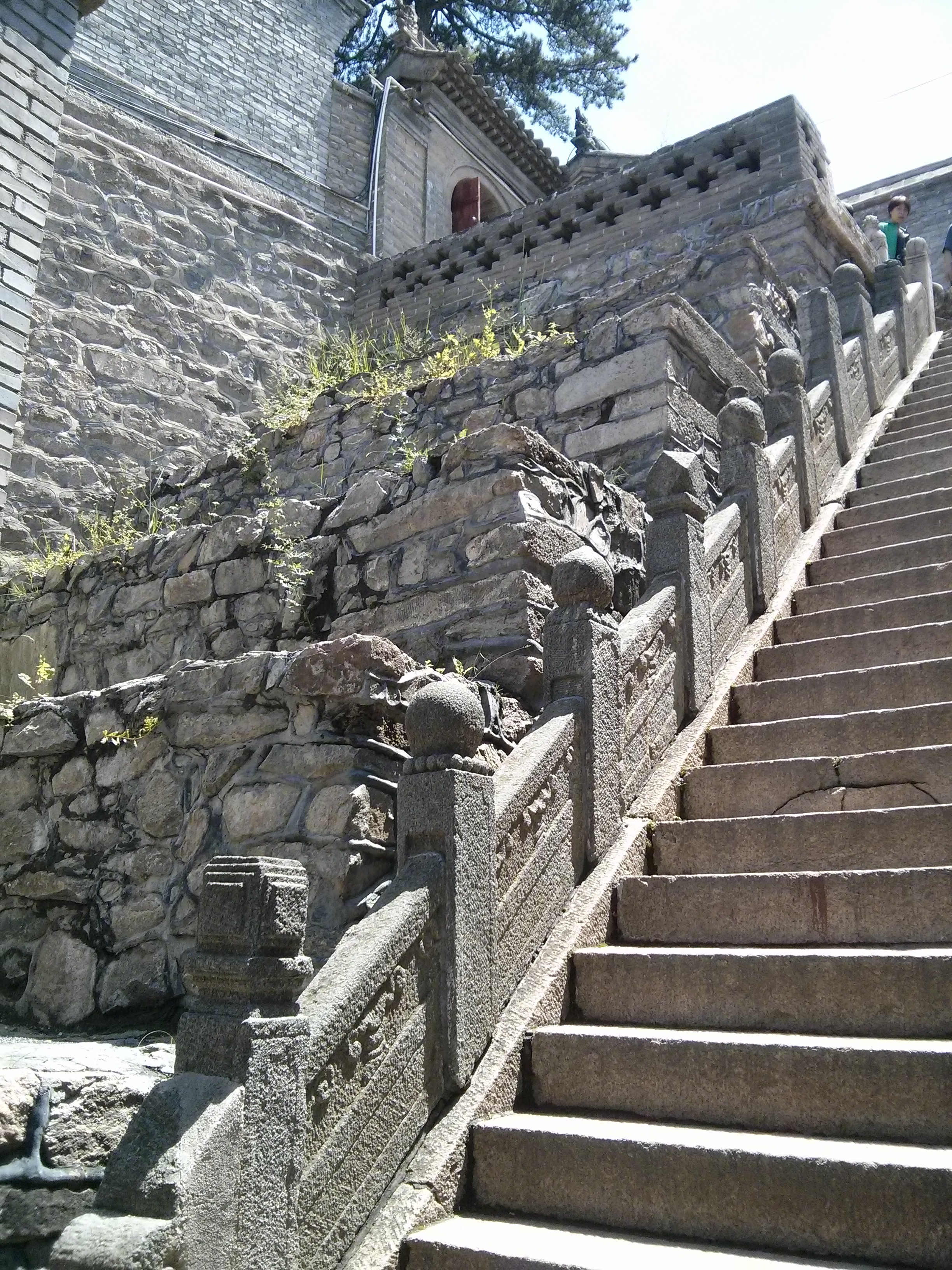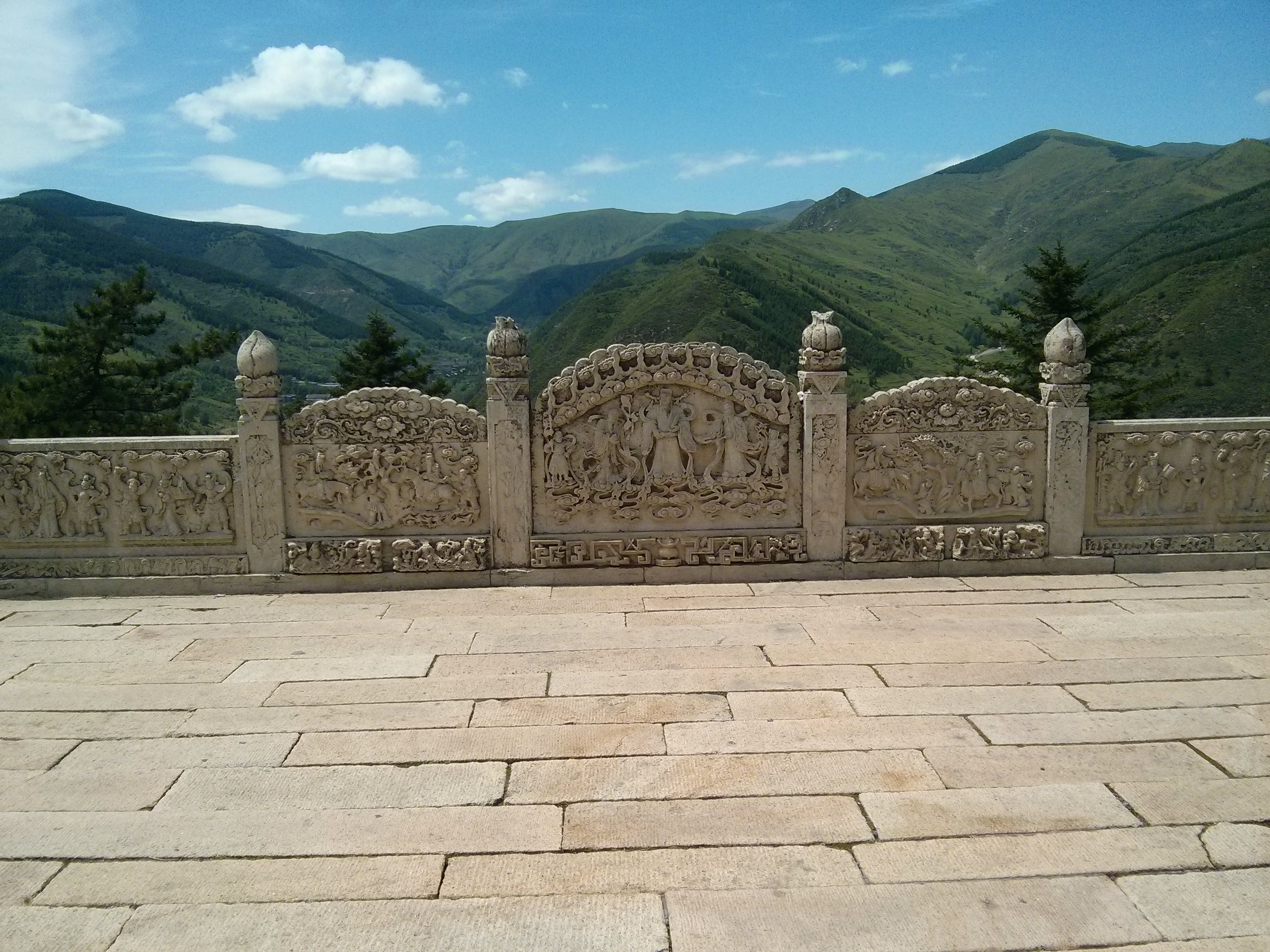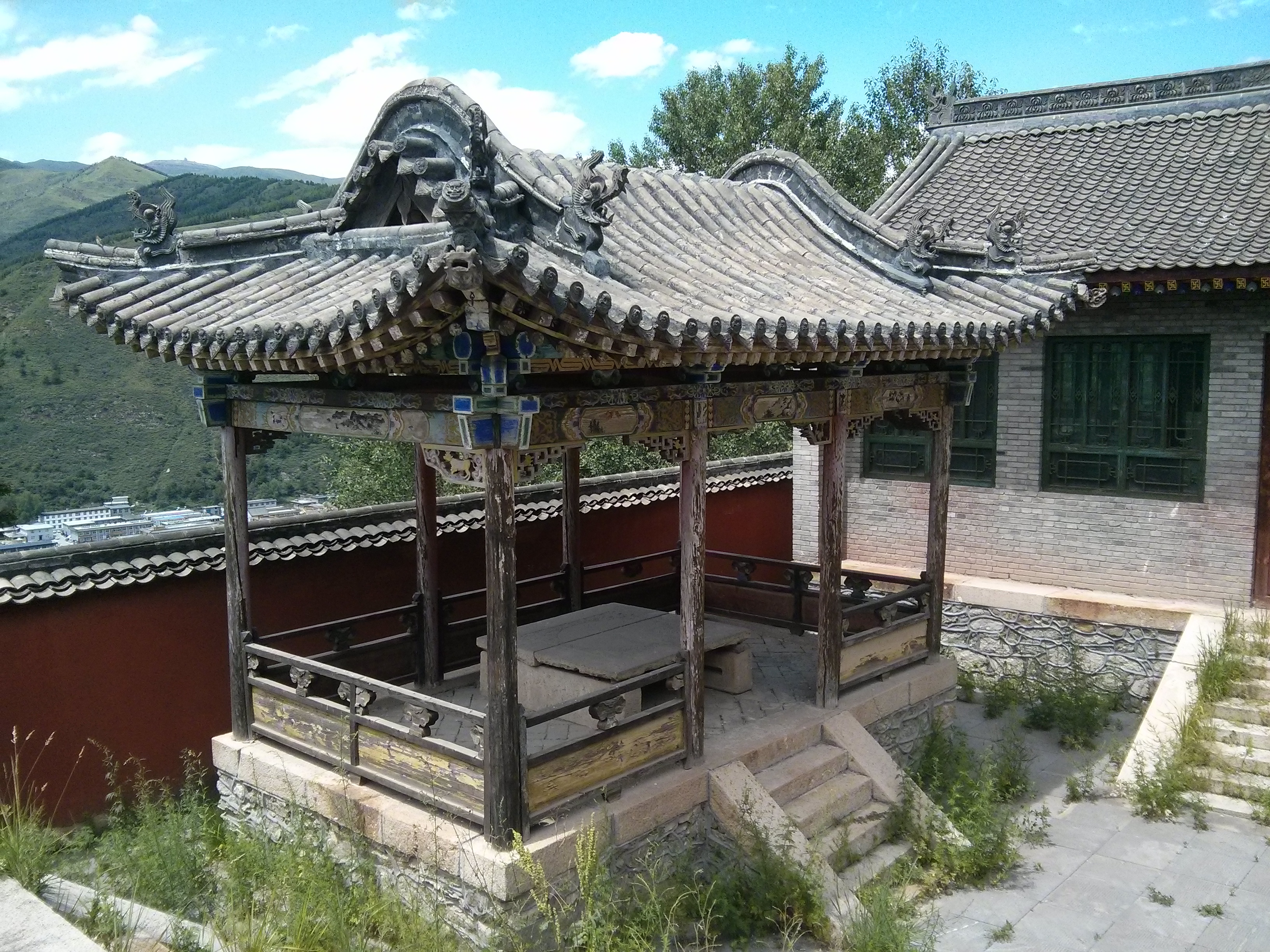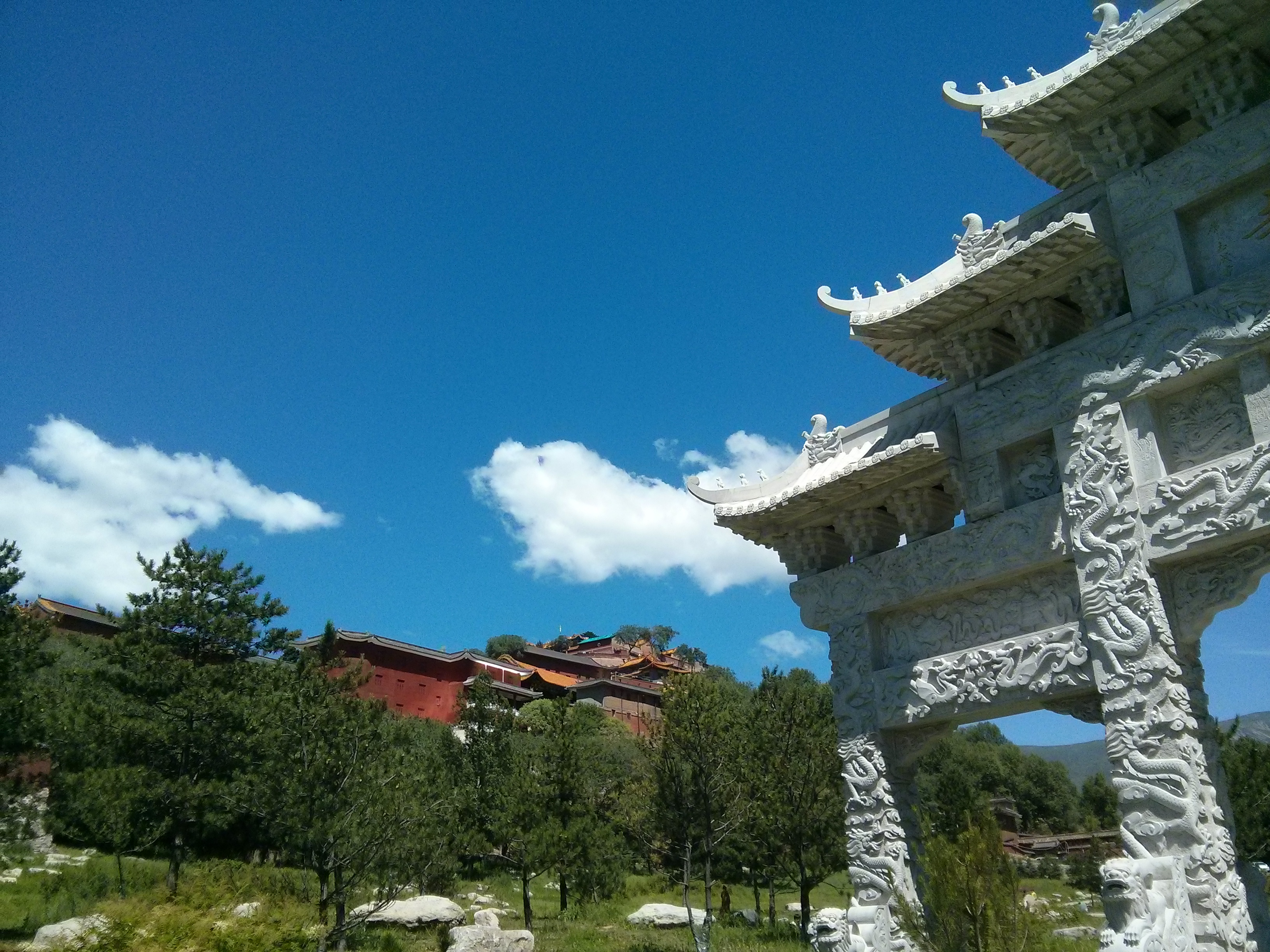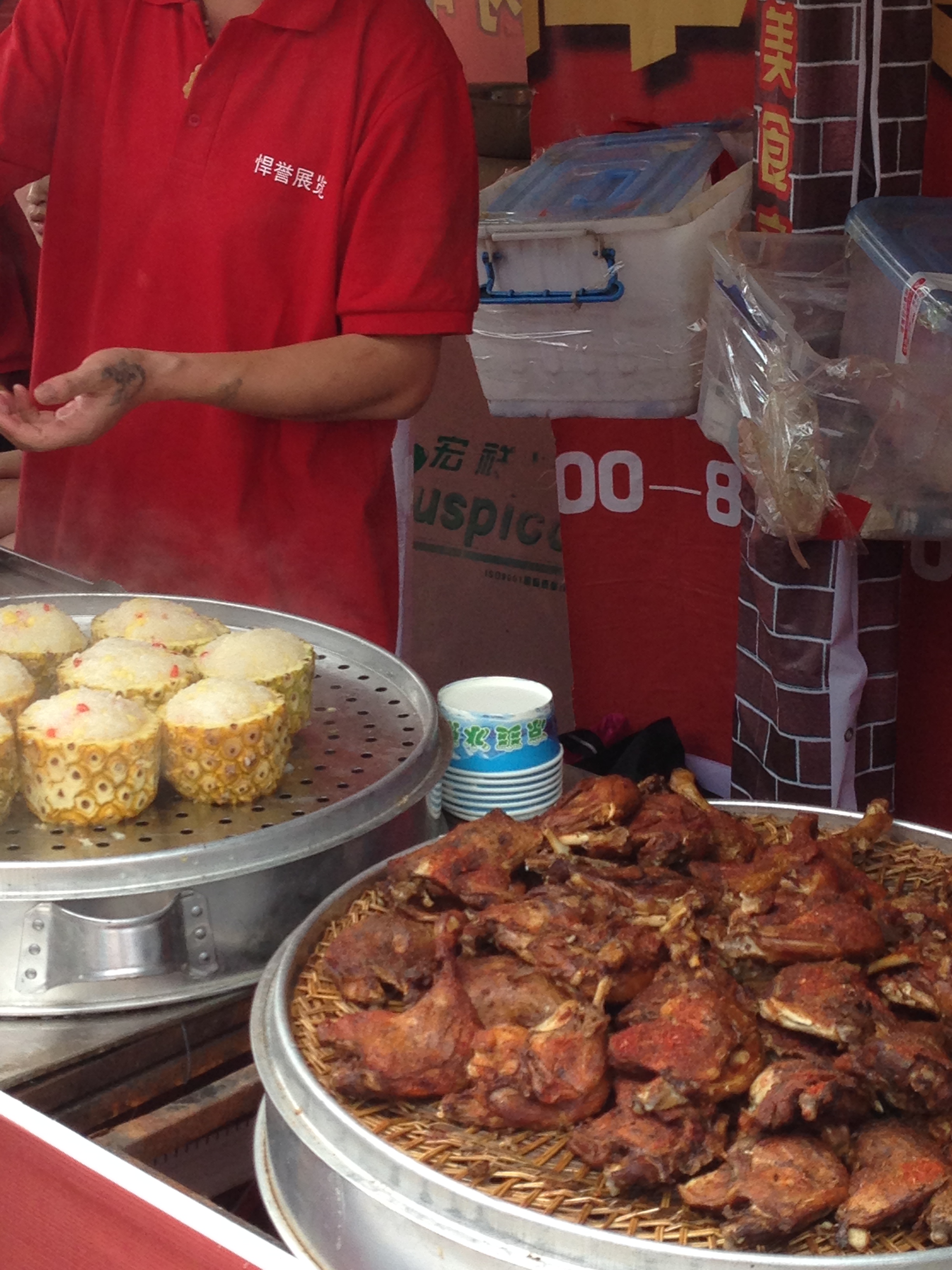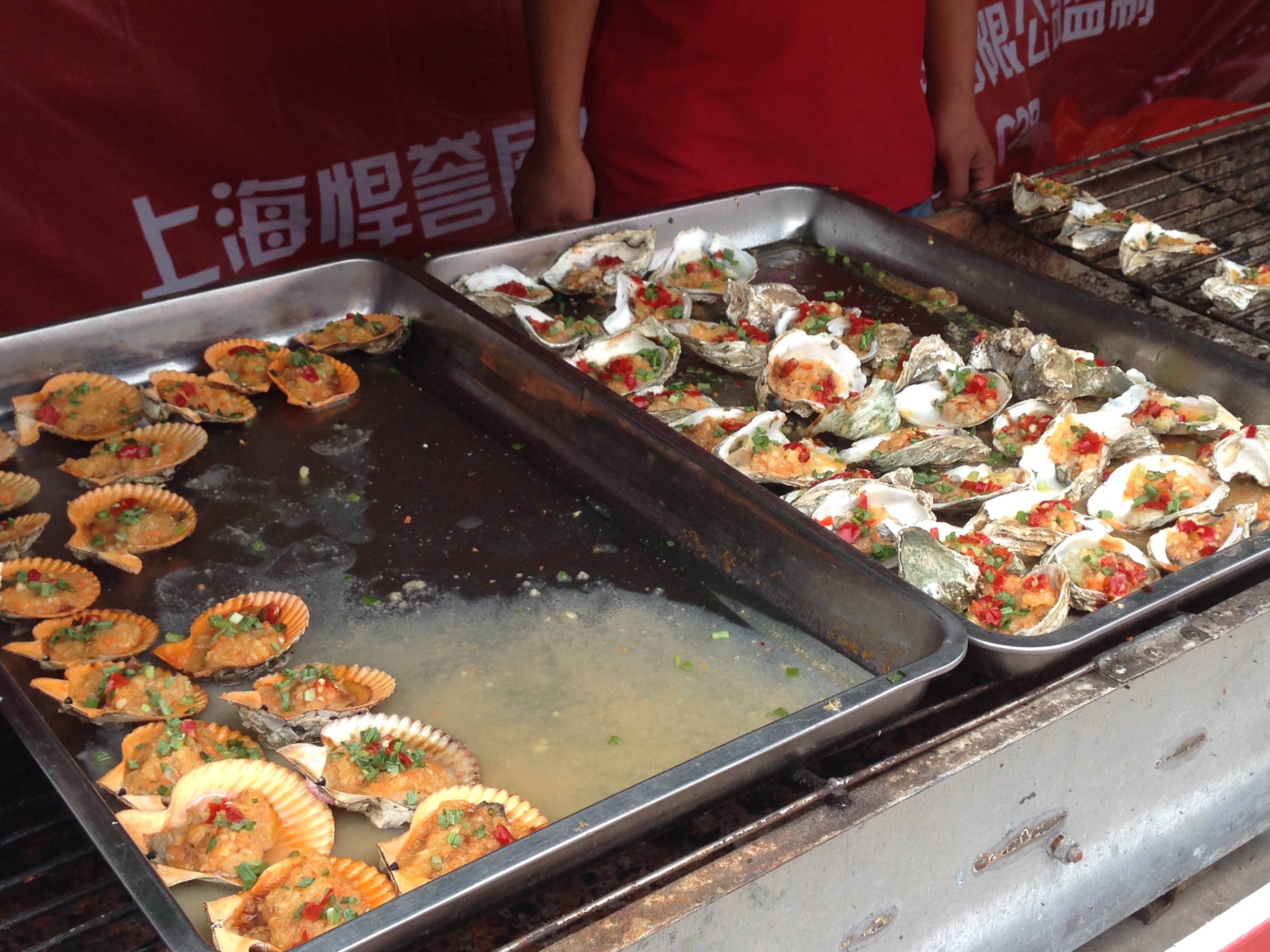From Sukhothai, we had to get a car back to Phitsanulok (transport hub and all) and hang around to catch the train down to Ayutthaya. This was another of those pronunciation nightmares, but with none of the odd derivations, just a mouthful. We went phonetic on the pronunciation (Ay you thay a) to find out how very wrong we were when trying to tell the train person where we wanted to get off. They pronounce it Ay yutie ya.
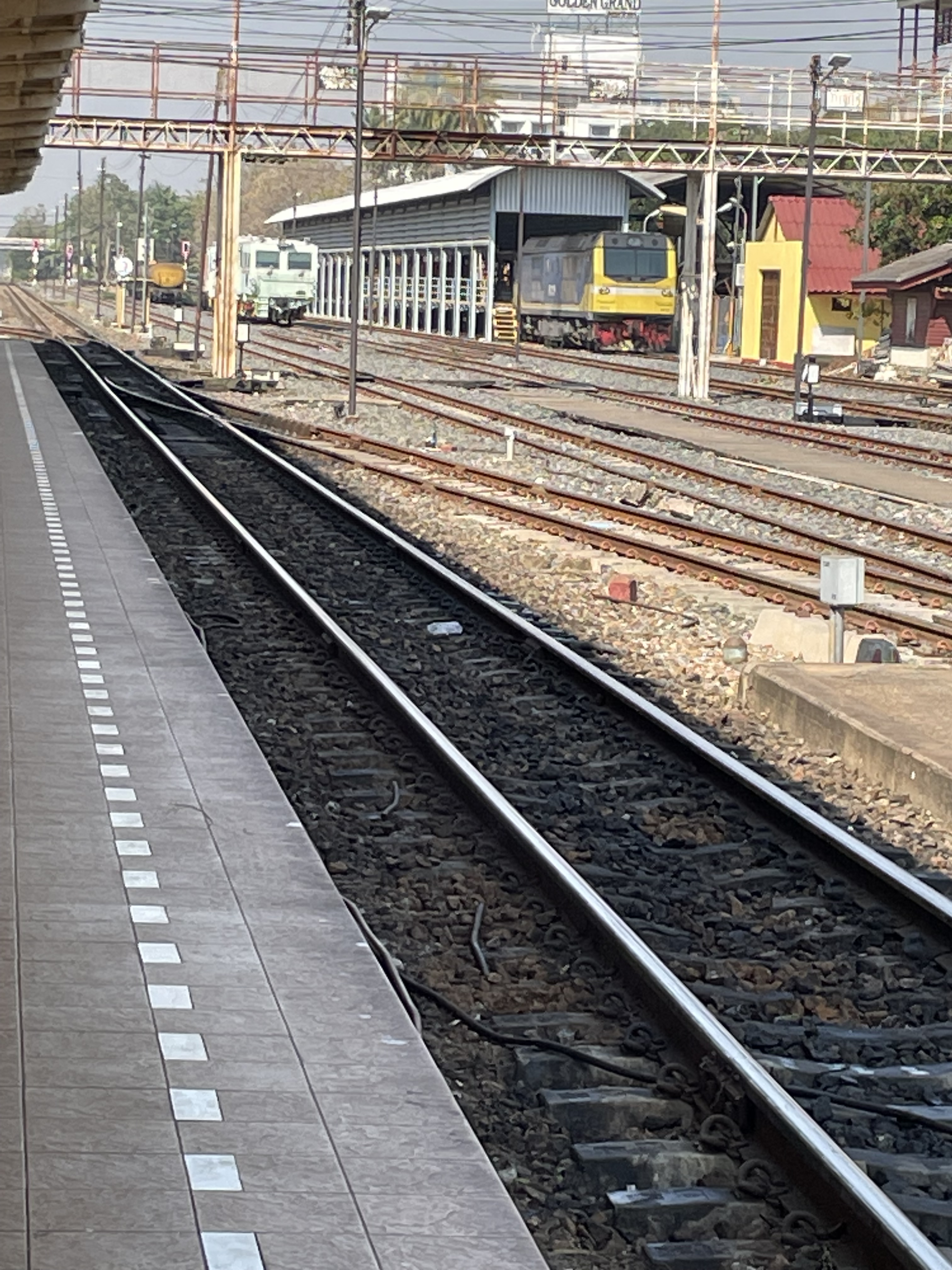
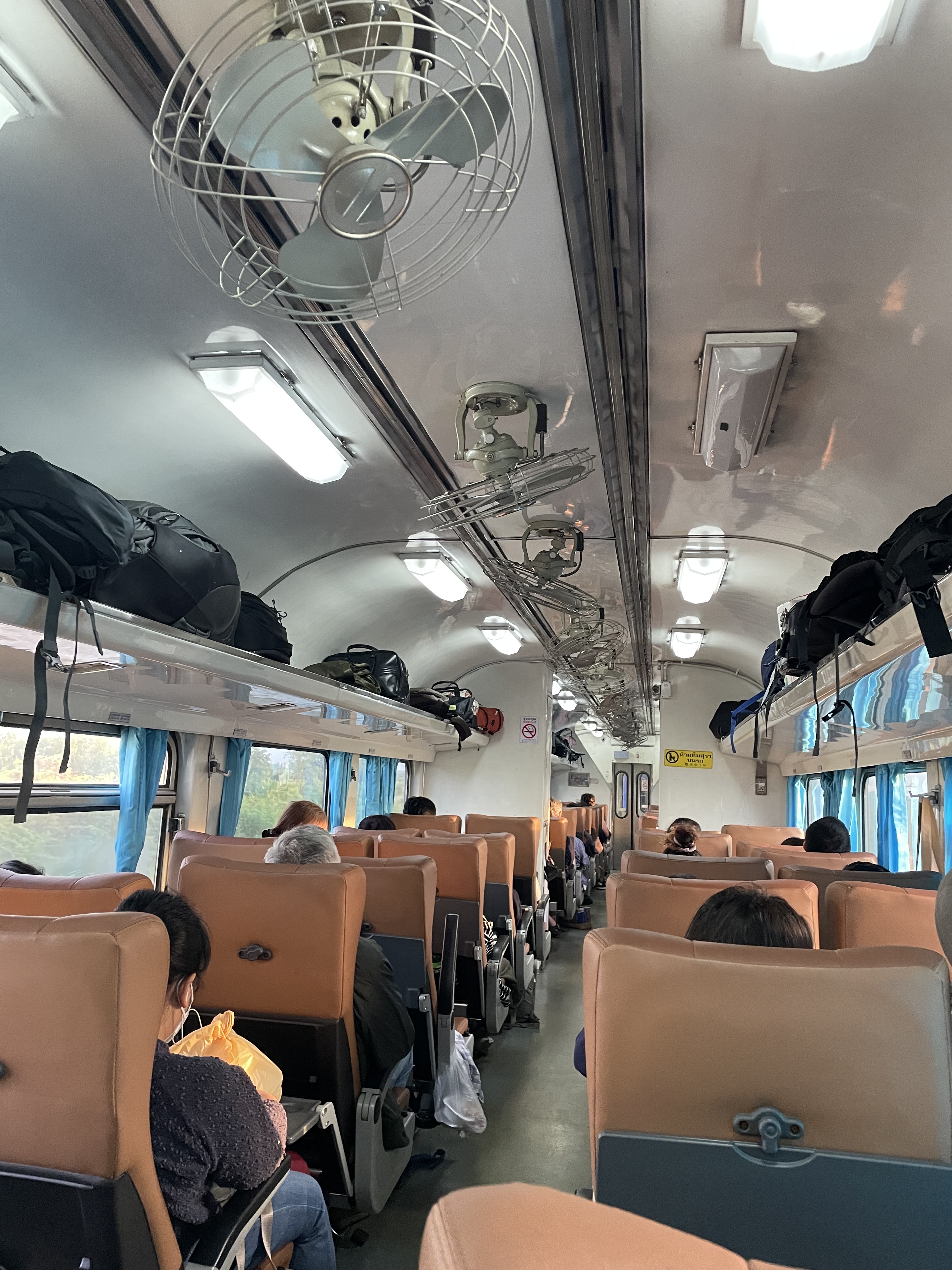

The train journey was fairly simple, cheap and uneventful. We did around 300km for $20 a head and it took us about 3 and a half hours. Not particularly fast, but comfortable enough with them trying to feed us (several times) on the journey.
Anyway, having got here, Ayutthaya is about 80 kilometres north of Bangkok and was the second capital of the Kingdom of Siam after Sukhothai. It is located on an island surrounded by three rivers that connect the old city to the sea. It operated as the capital from 1350 until it was razed by the Burmese in 1767. The ruins of the old city now form the, UNESCO listed , Ayutthaya Historical Park’, an archaeological site that contains palaces, Buddhist temples, monasteries and statues.
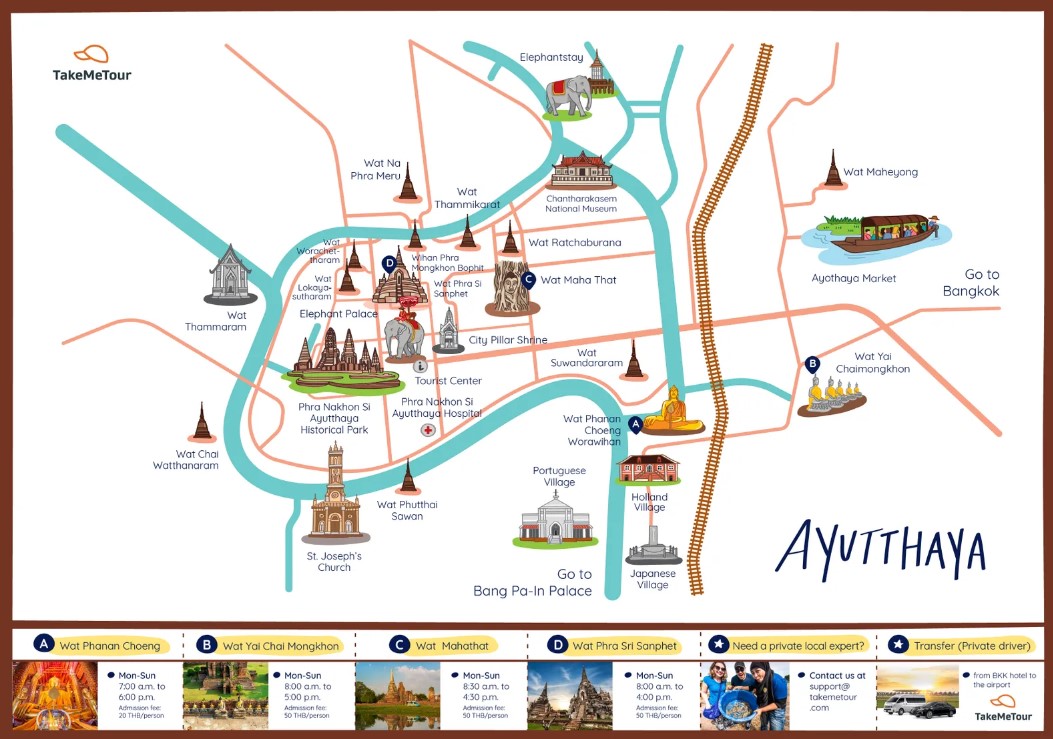
The UNESCO site claims, once an important center of global diplomacy and commerce, Ayutthaya is now an archaeological ruin, characterized by the remains of tall prang (reliquary towers) and Buddhist monasteries of monumental proportions, which give an idea of the city’s past size and the splendor of its architecture.
Being only 80 km north of Bangkok Ayutthaya is a regular location for day trippers. So if you are staying here (and I suggest that you do) go to see the temples early, add to this the fact that it is hot here and you don’t want to be trekking in the 36 degree heat of the day. By about 10am the first of the busses from Bangkok start arriving and flock towards temple one on the list.
Wat Mahathat
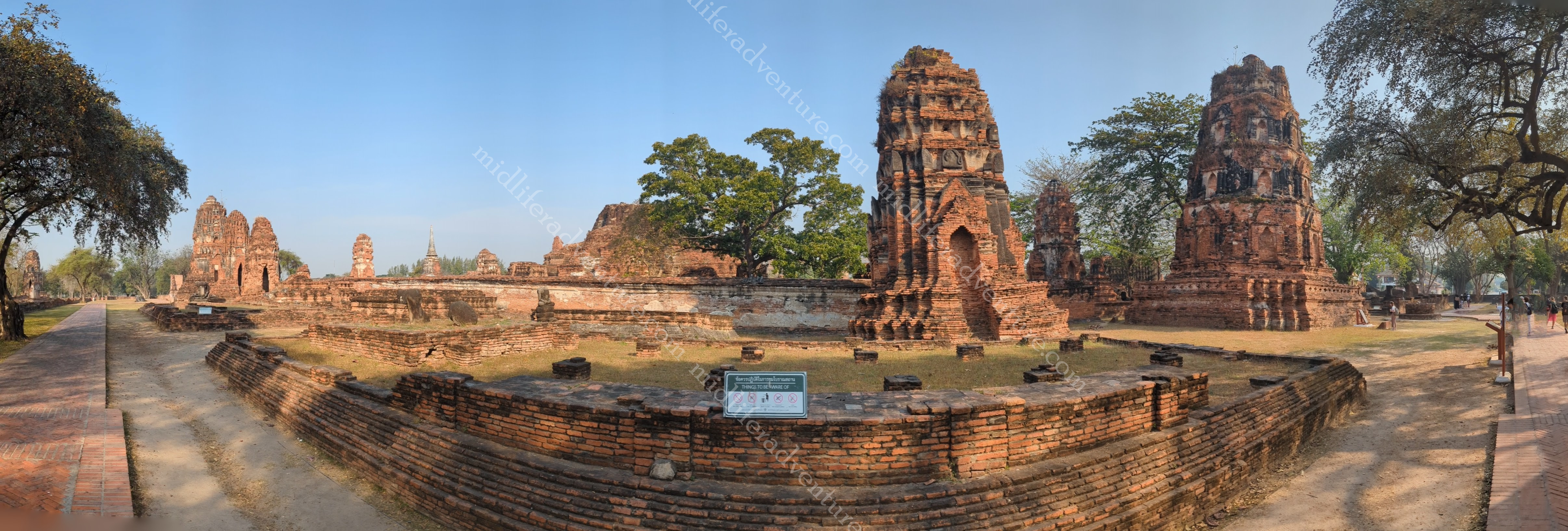
Wat Mahathat is one of Ayutthaya’s oldest temples, possibly built by King Boromaraja I (1370-88) and is said to have housed one of the buddha holy relics. Many important royal ceremonies of the Ayutthaya era were hosted here. When the Ayutthaya Kingdom failed in 1767, it was severely damaged by fire and abandoned.
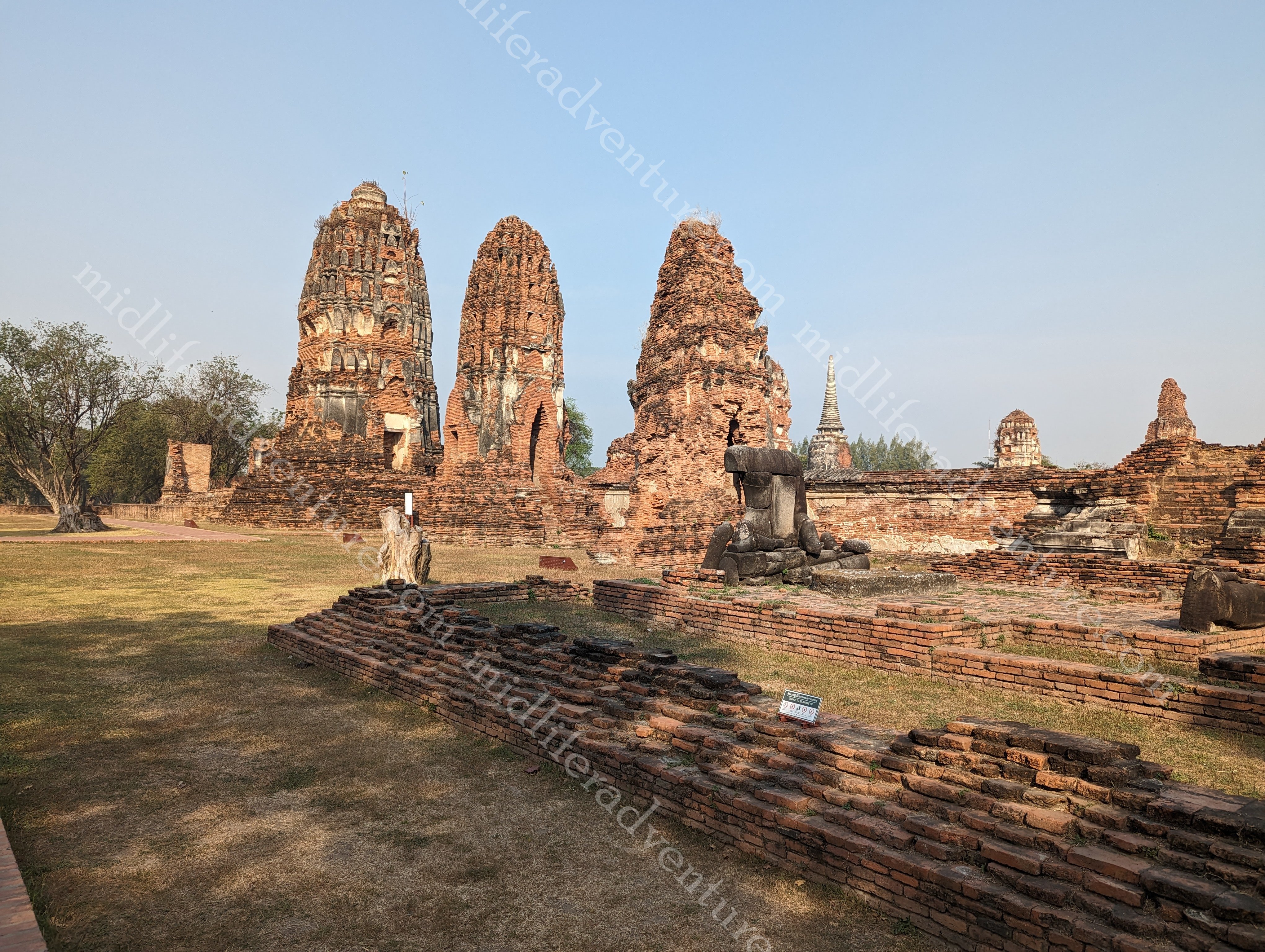
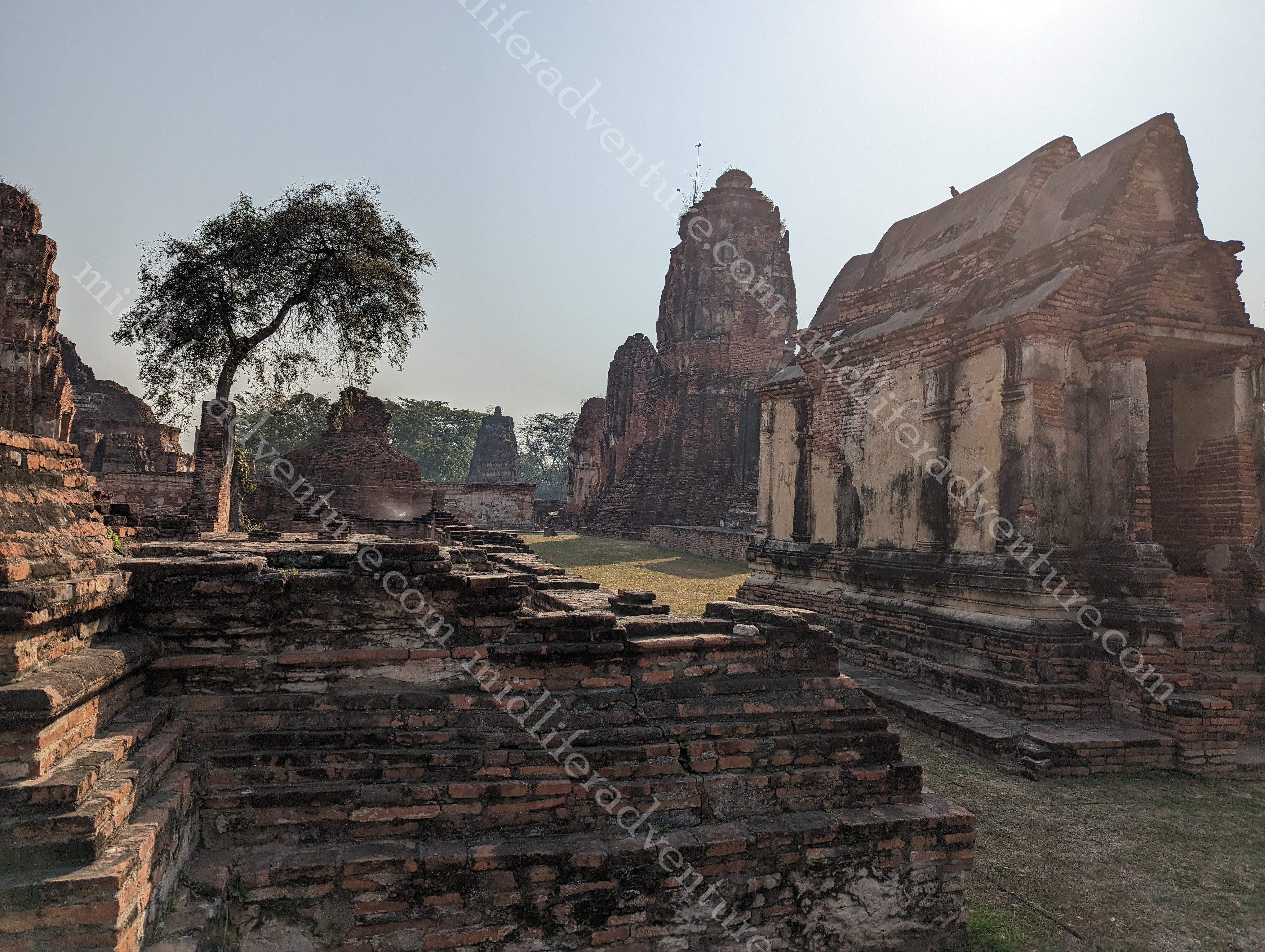
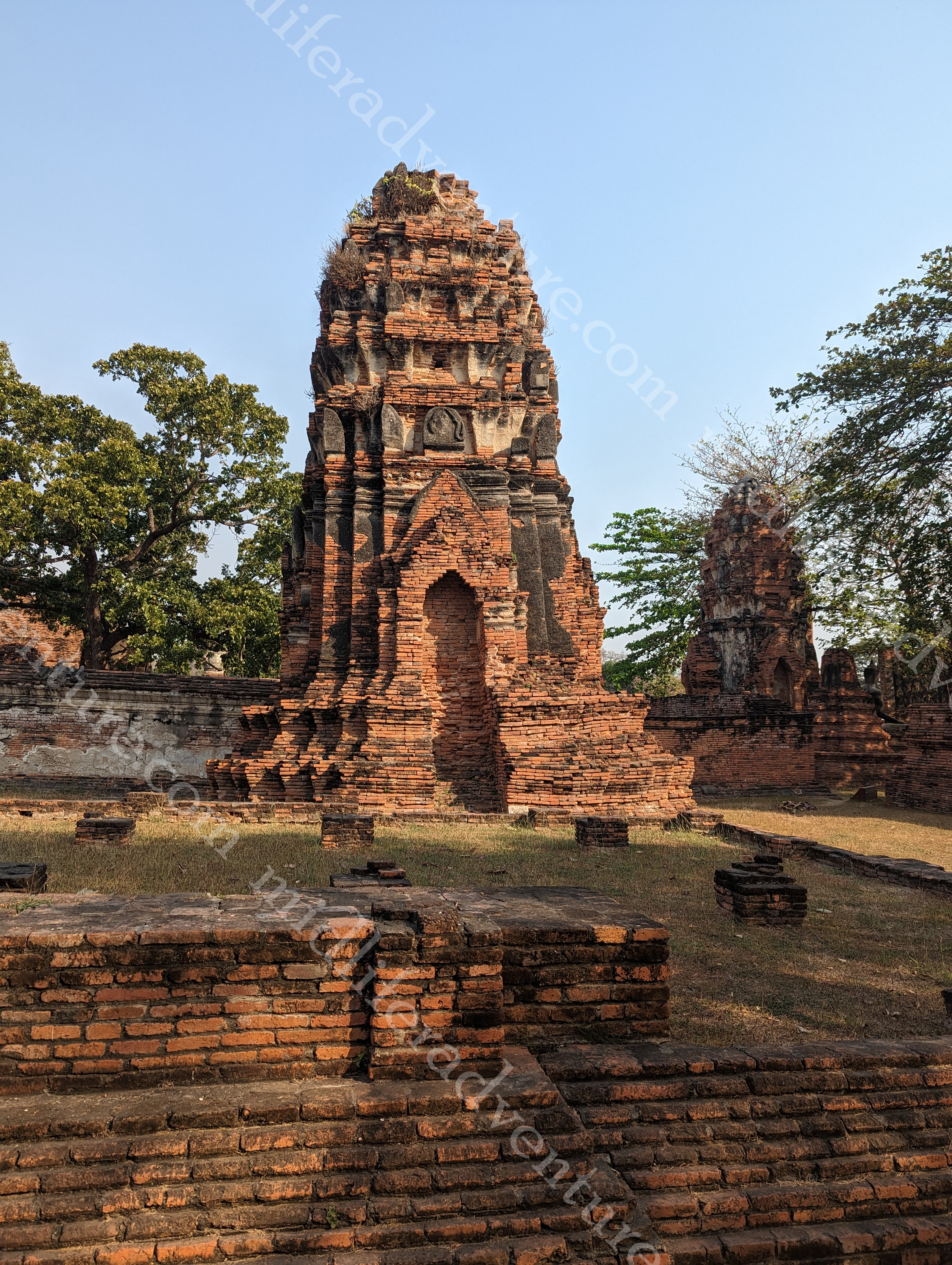
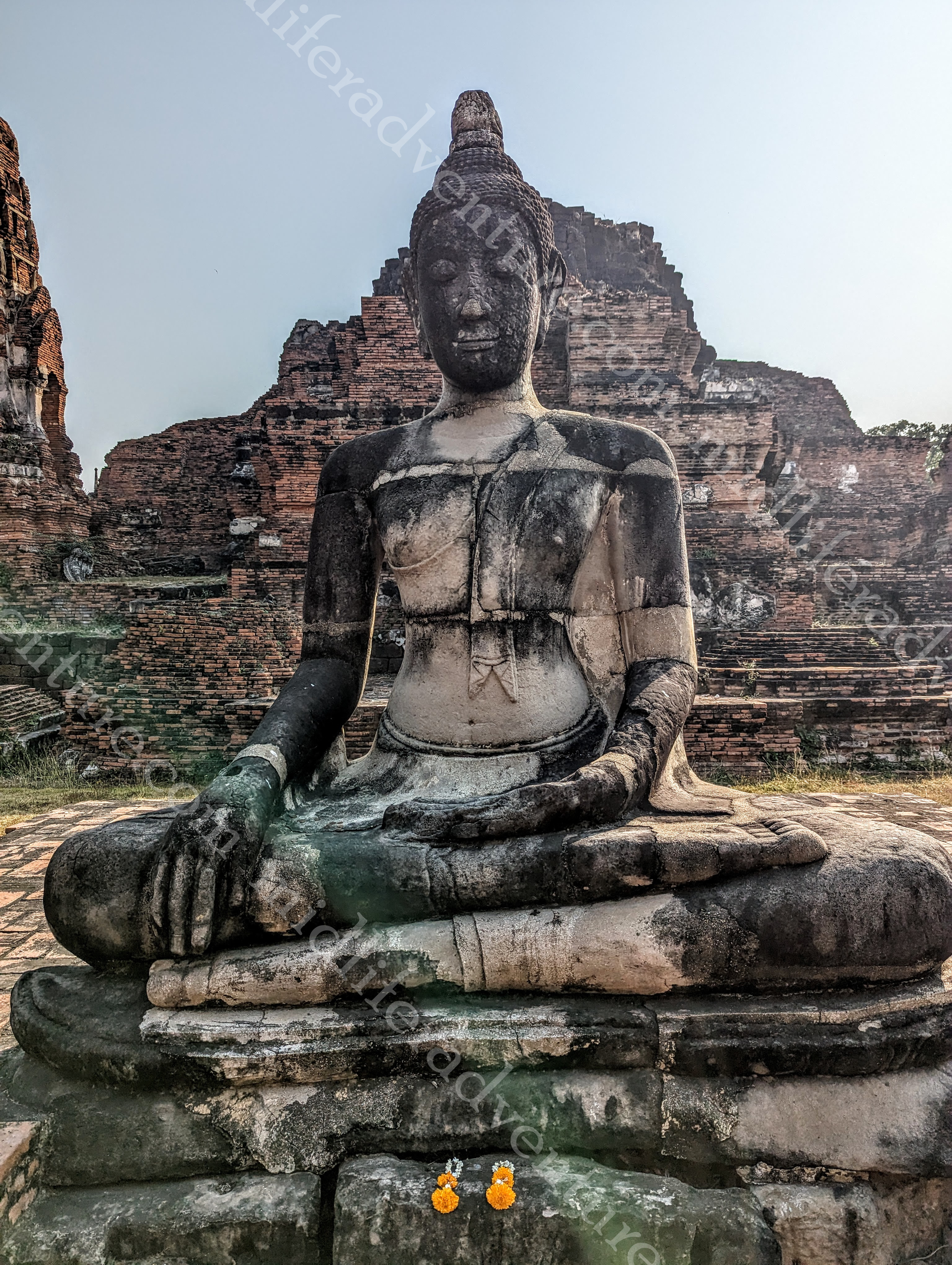
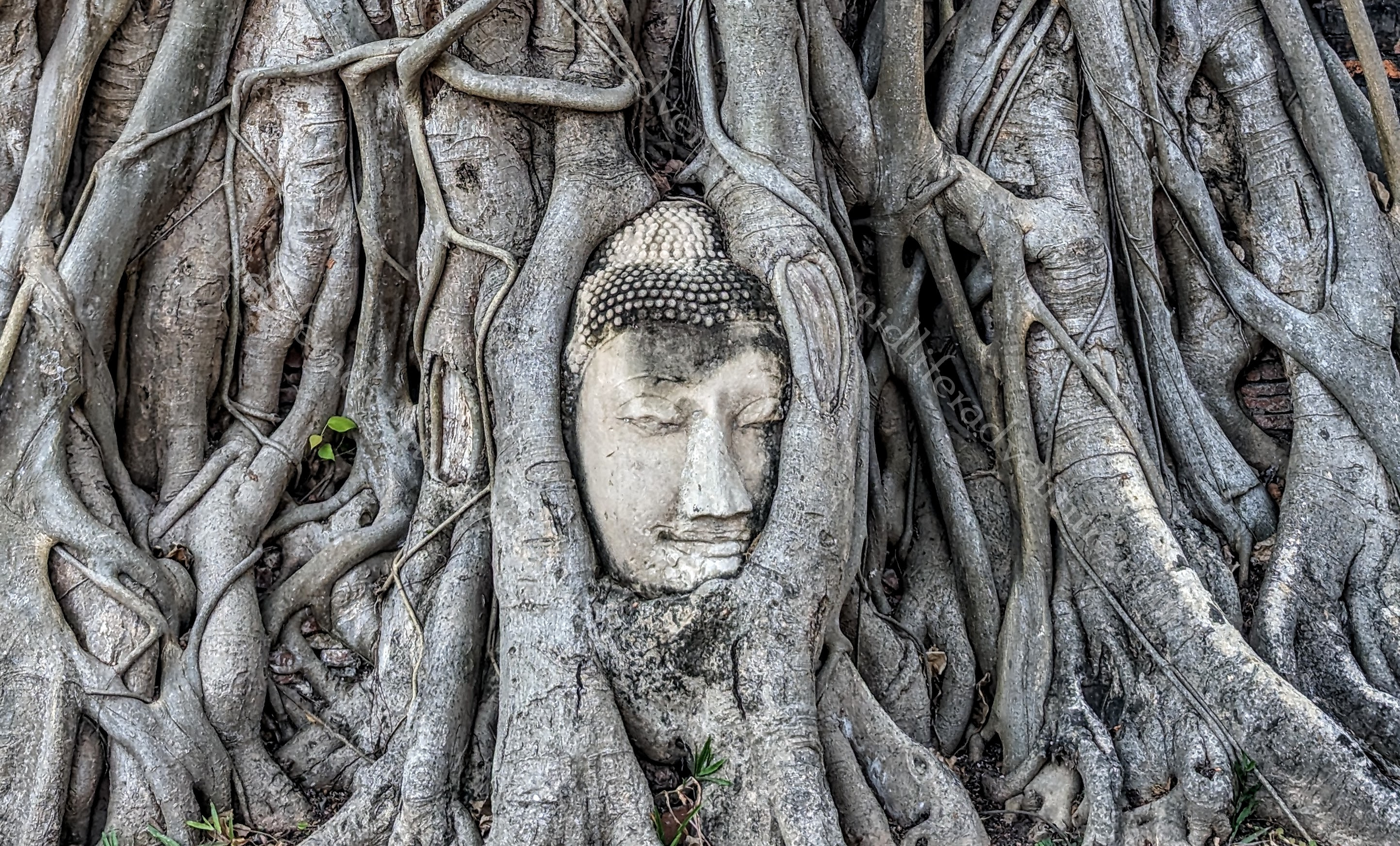

The temple is most famous for the Buddha head situated in a Bodhi tree root. But the site now holds the remains of numerous towers and Buddhist monasteries giving modern day visitors an idea as to the size of the original city.
From the first Wat, Jill and I wandered through the rest of the place virtually alone for the next hour or so as the tourist busses only tend to hit the big three or four and then head back to Bangkok. So we saw Wat Nok, Wat Lankhadum, Wat Langkhakhao and Wat Phong without really seeing anyone else.
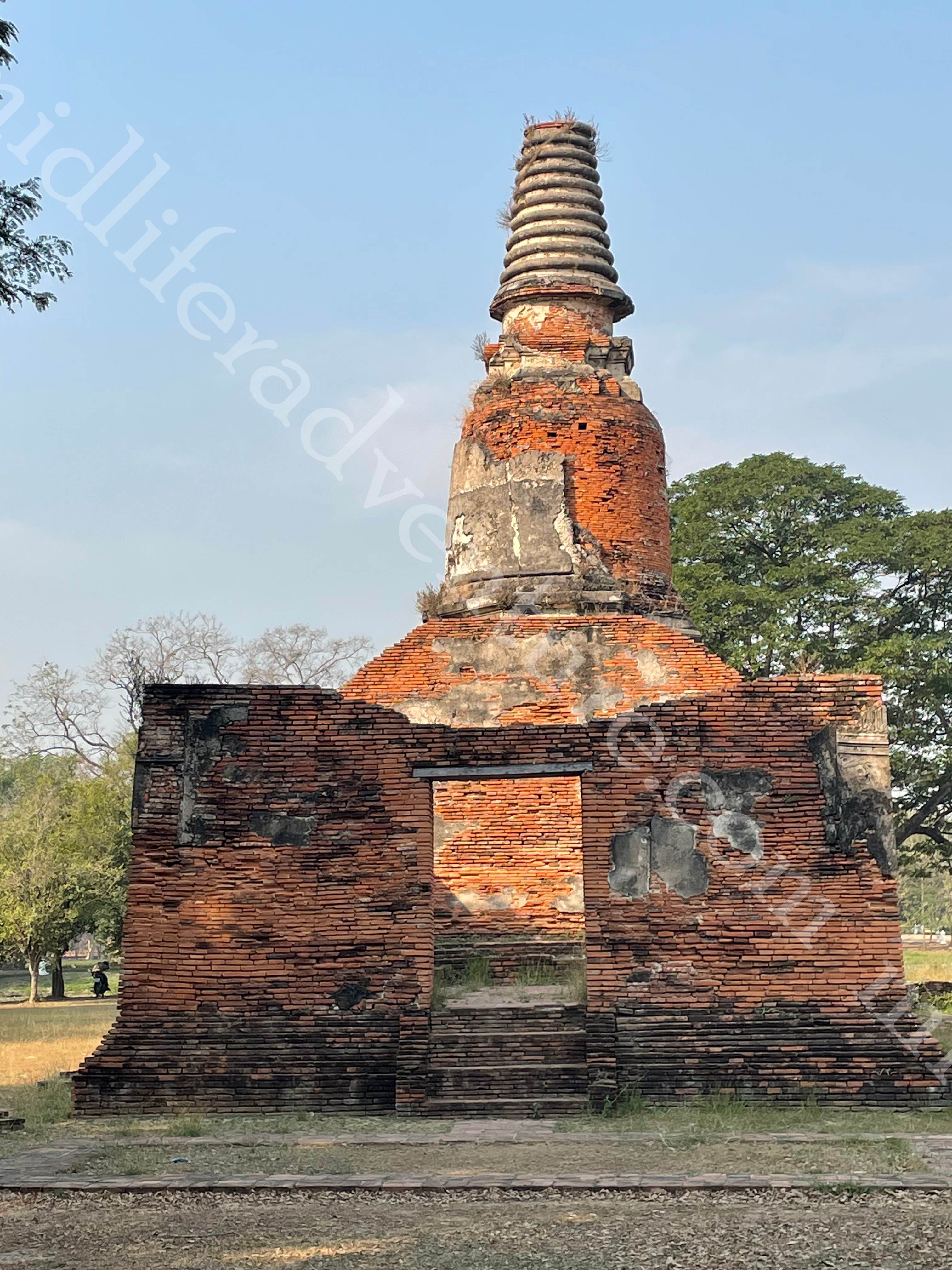

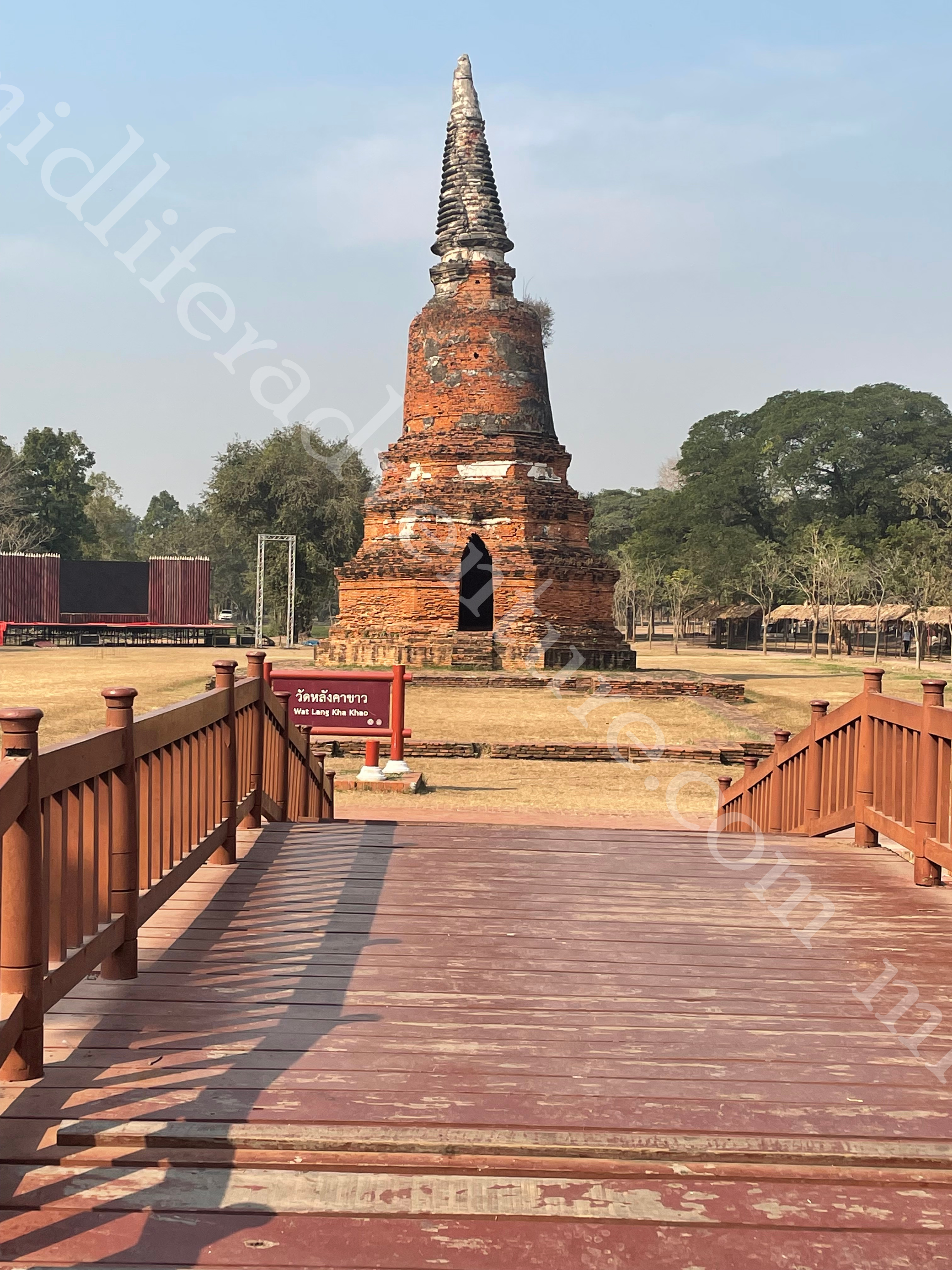
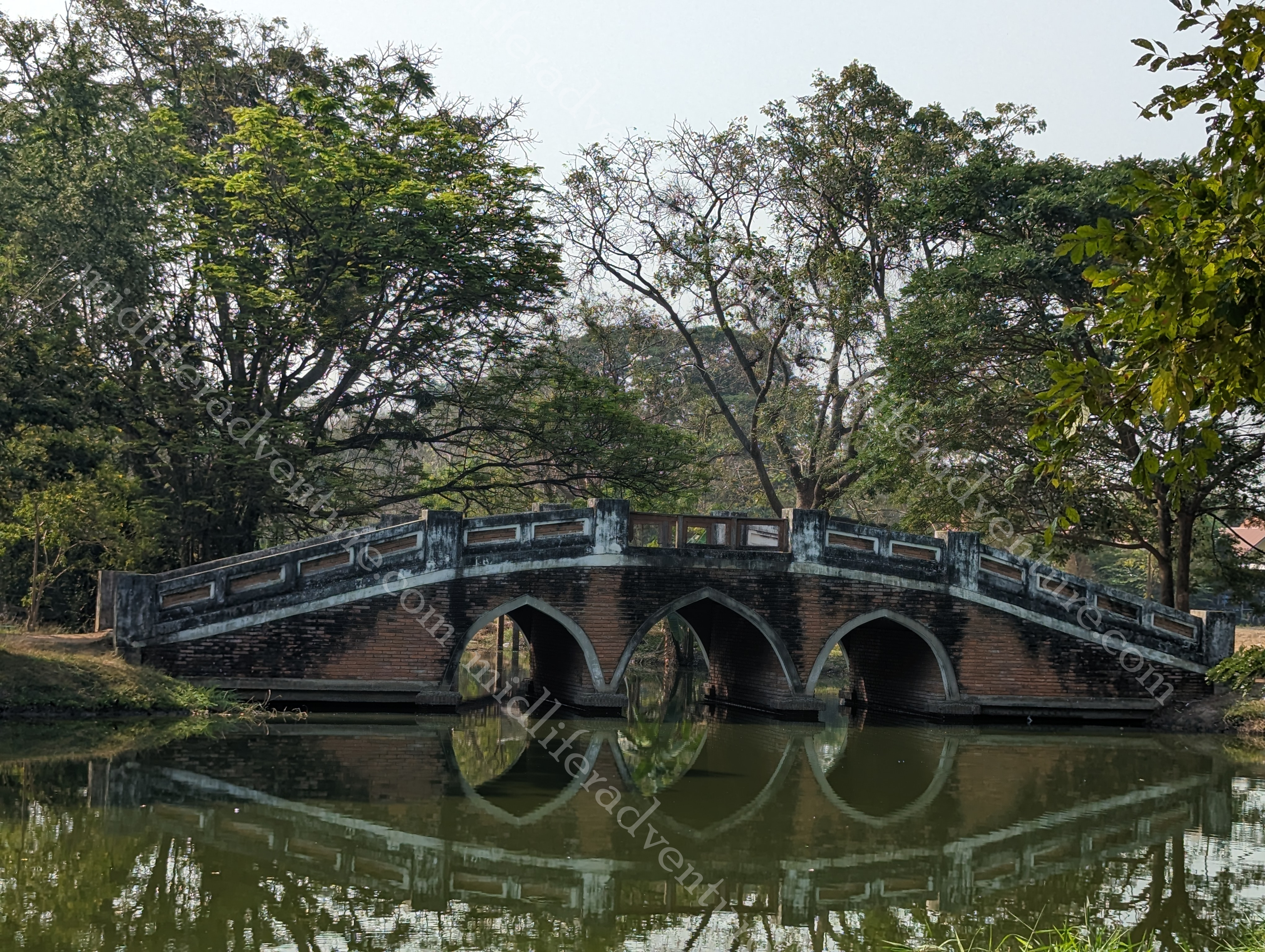
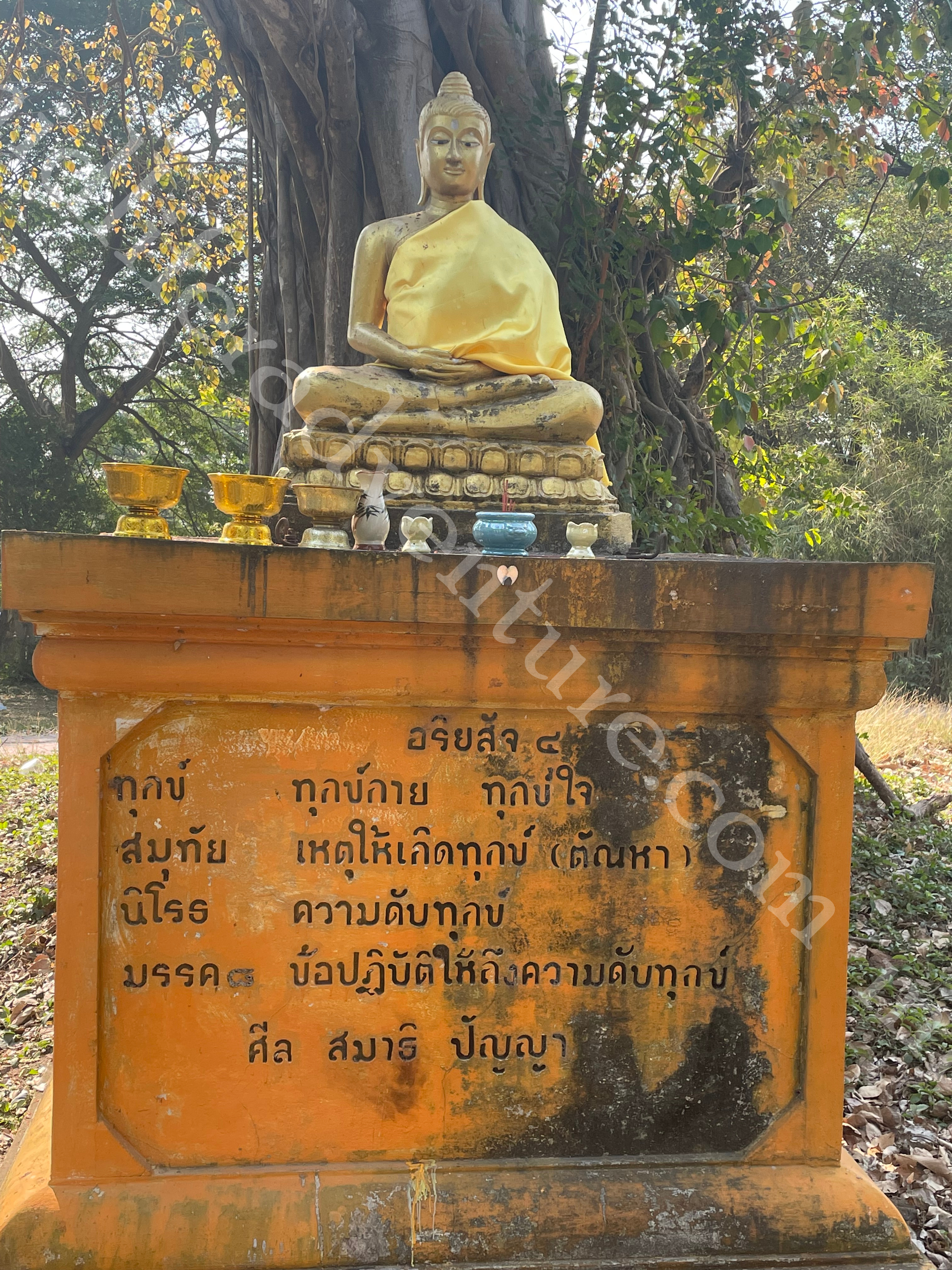
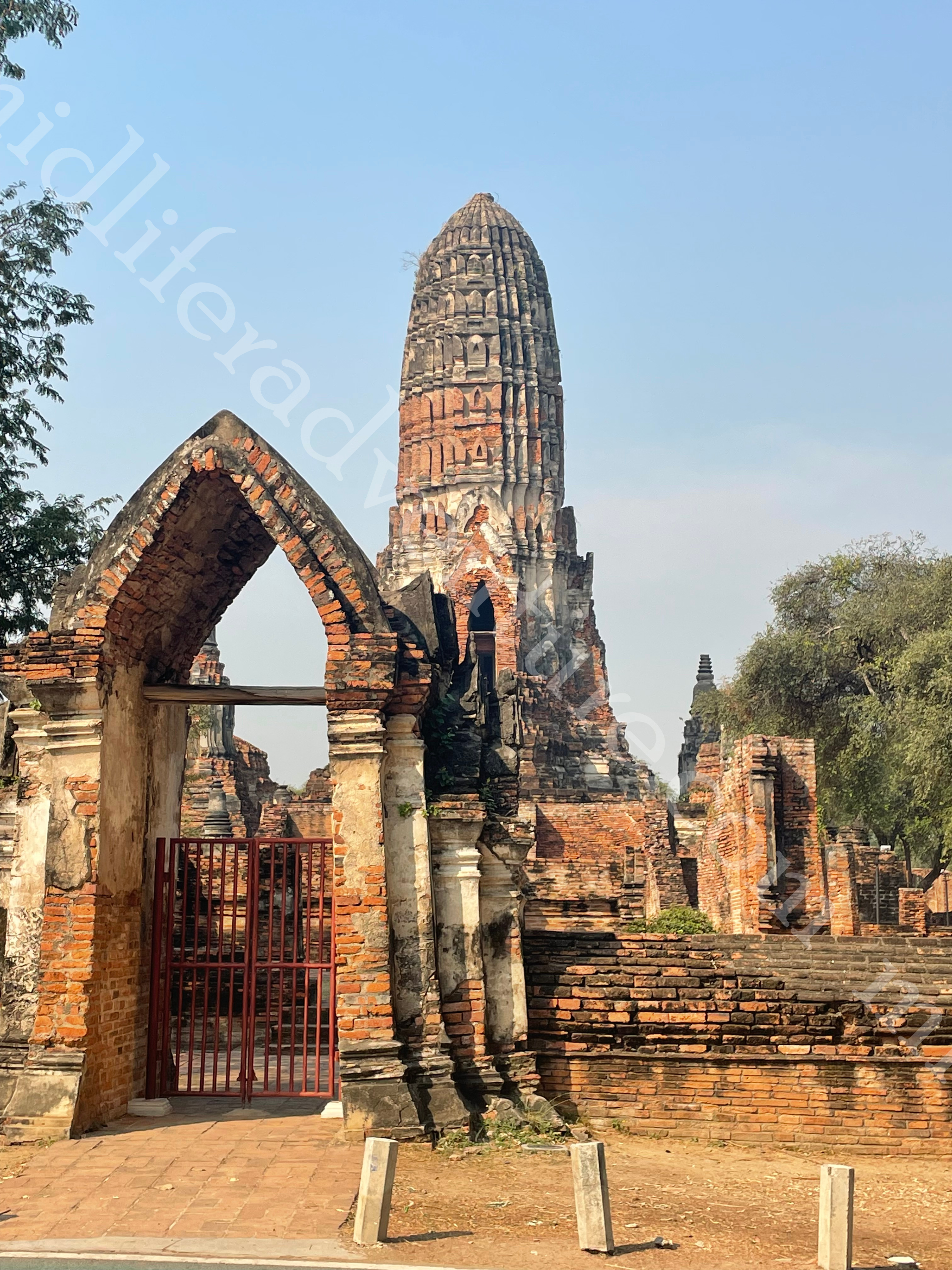
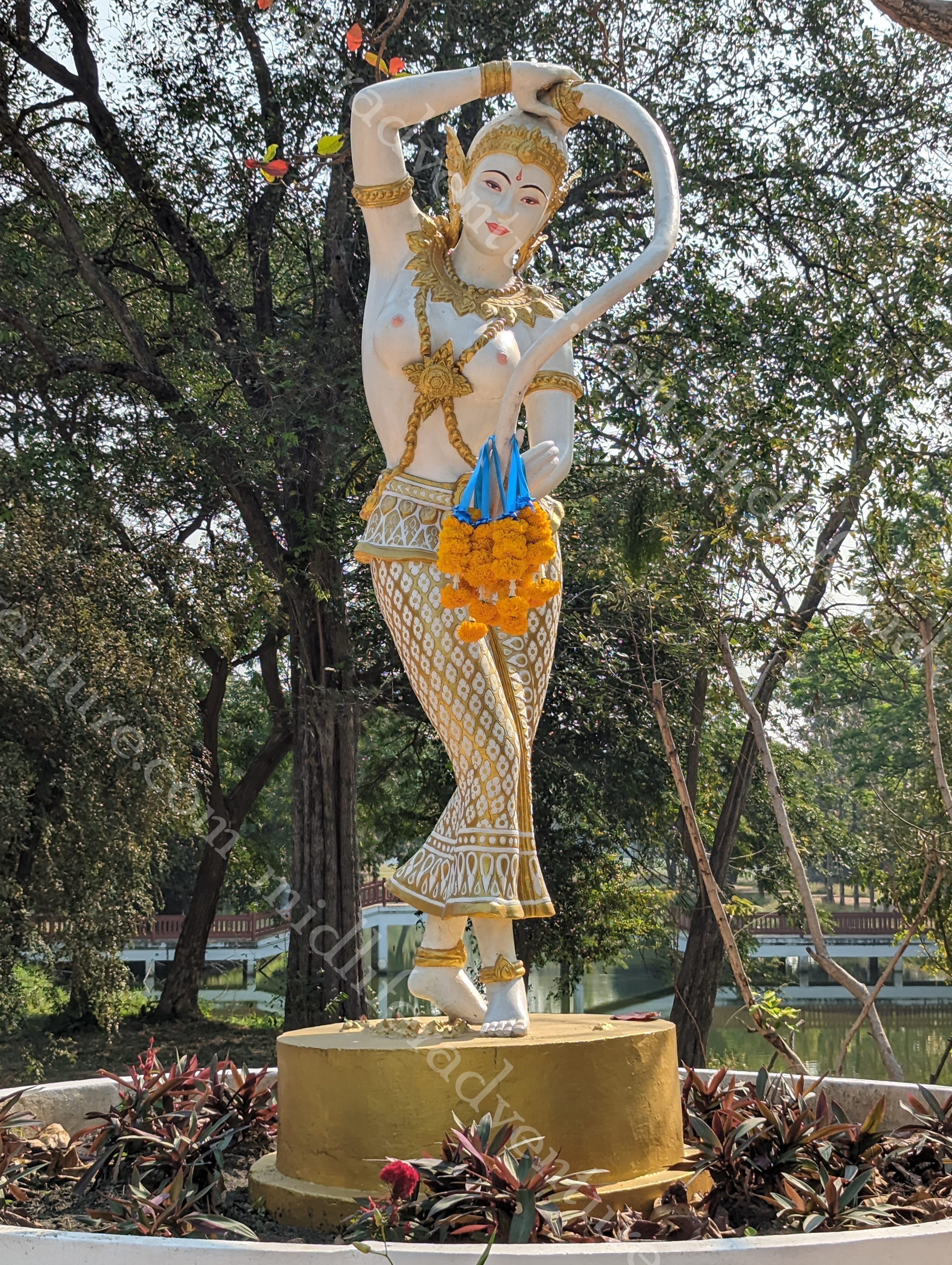
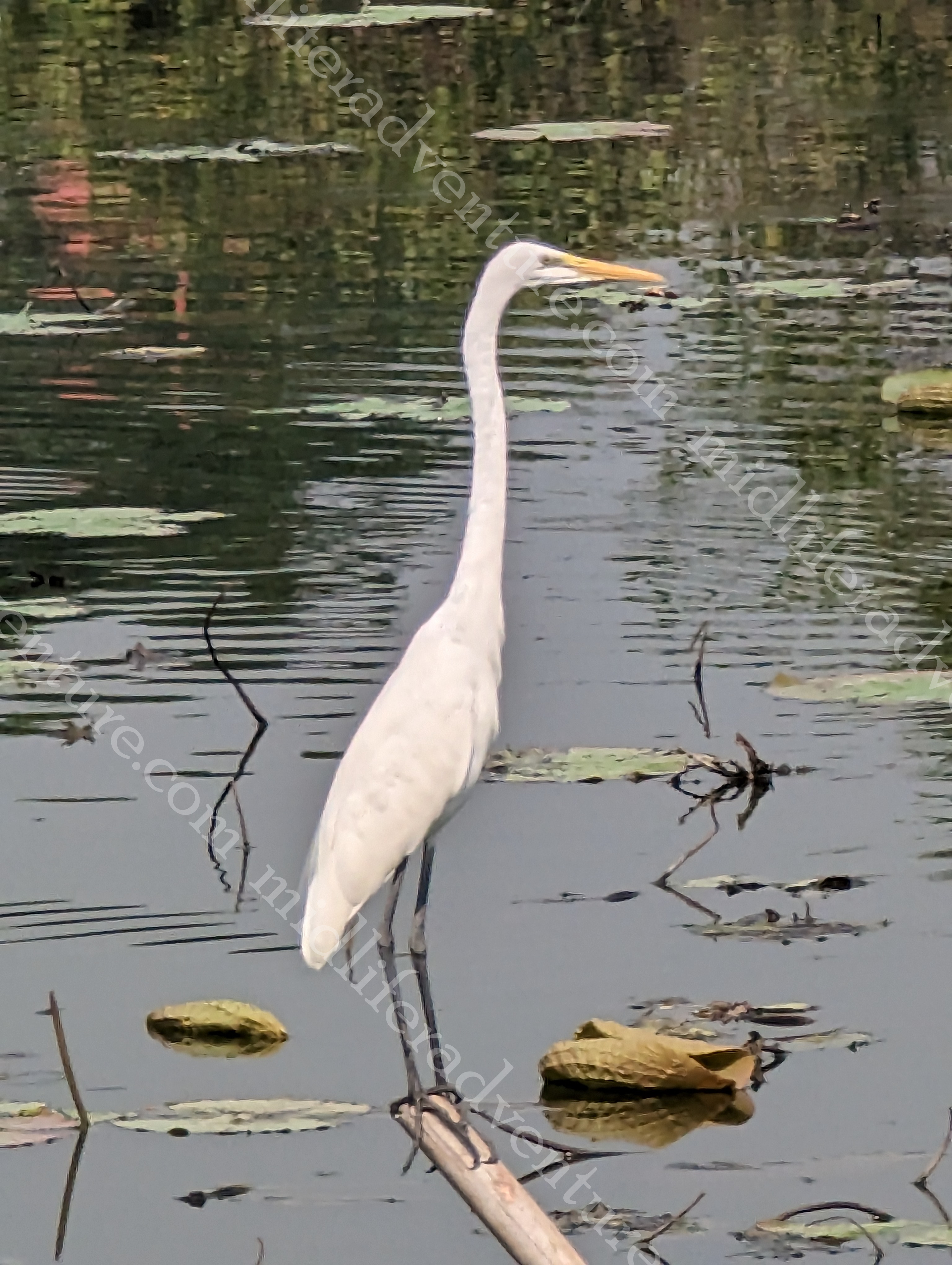
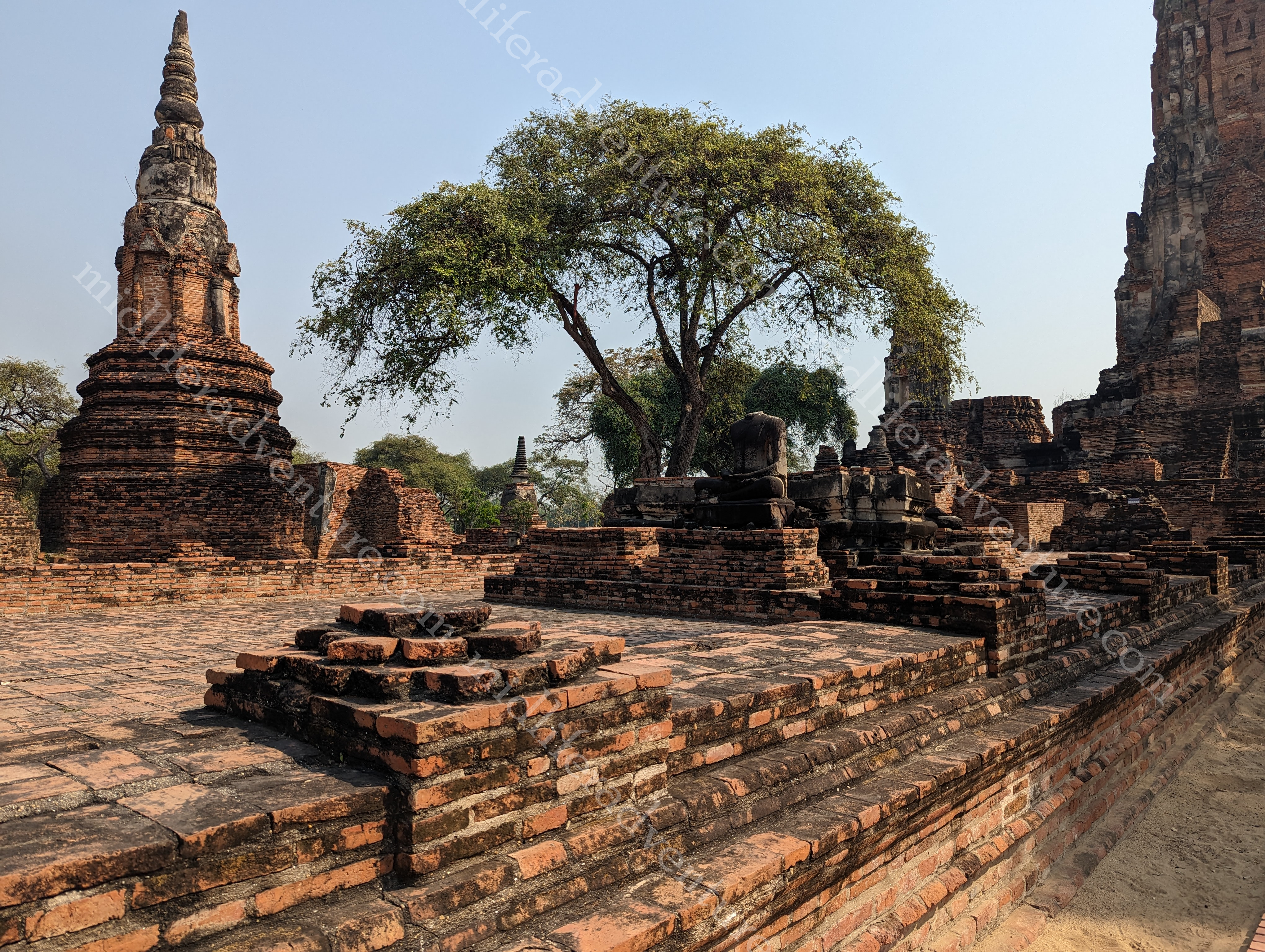
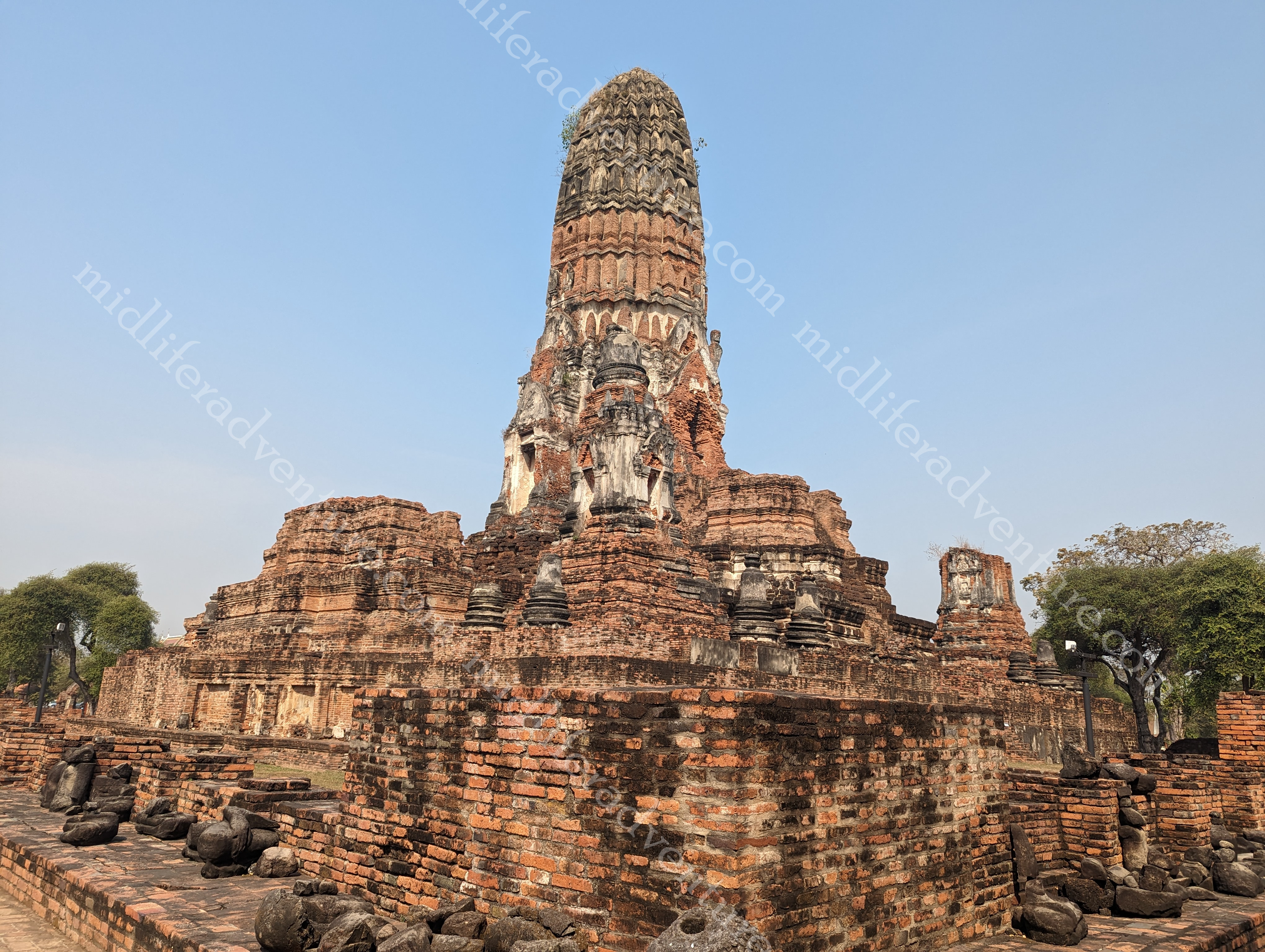
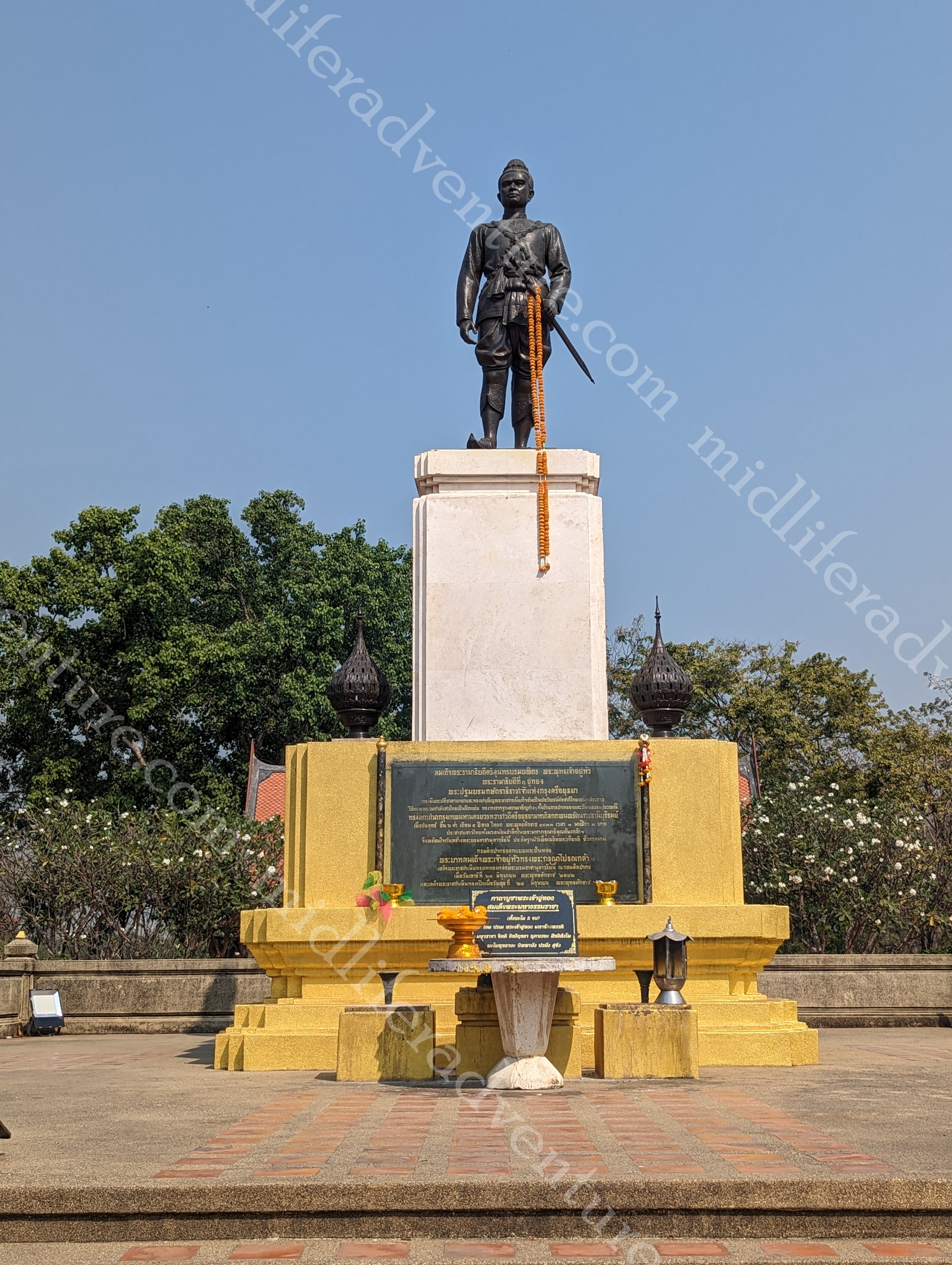
Wat Phra Ram
This one saw the return of some of the crowds. Its main feature is a well-proportioned prang situated on a stepped terrace adorned with chedis. Some of the prang’s stucco decorations, including Buddha images in the walking and standing poses, still remain.

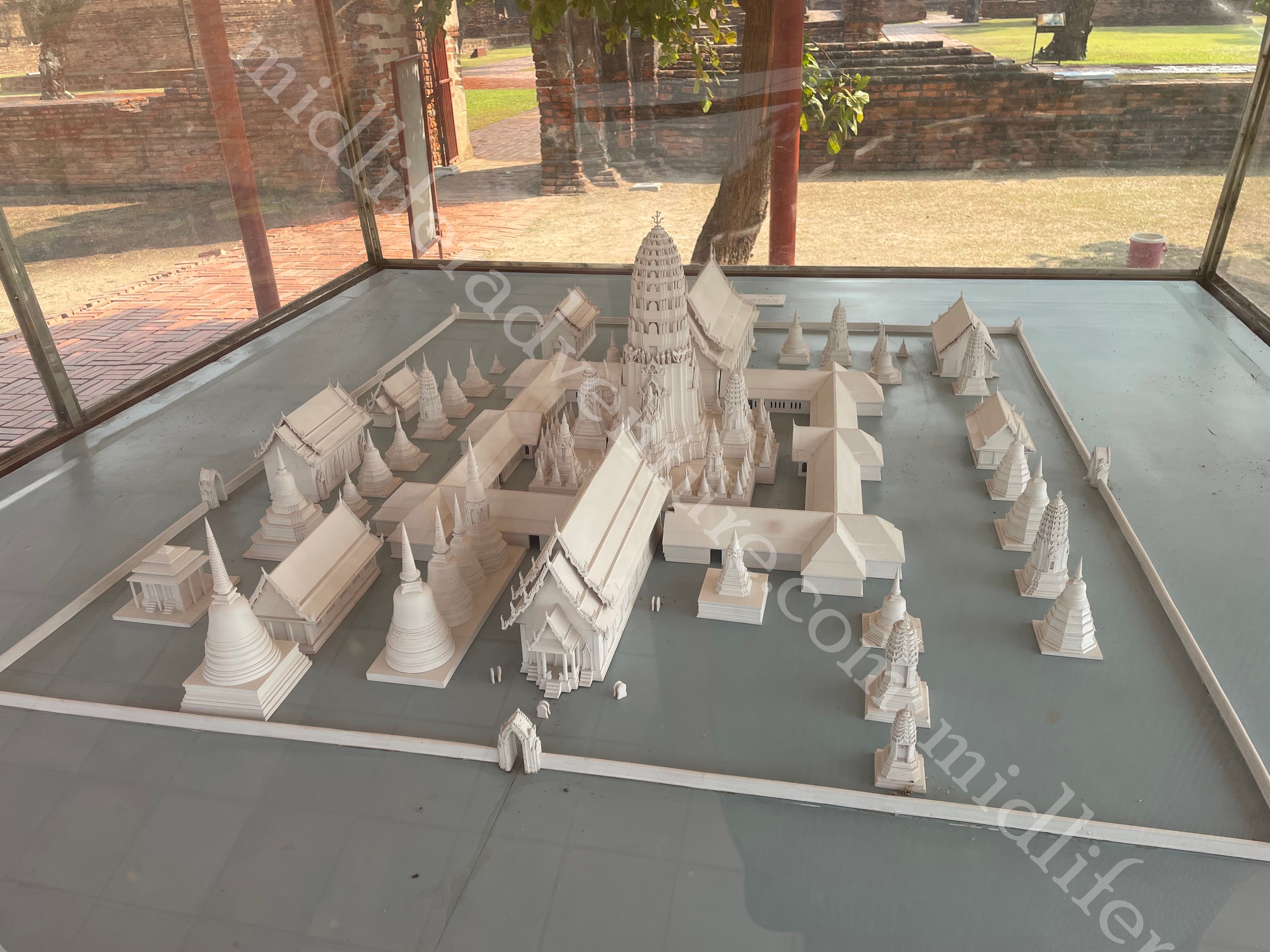
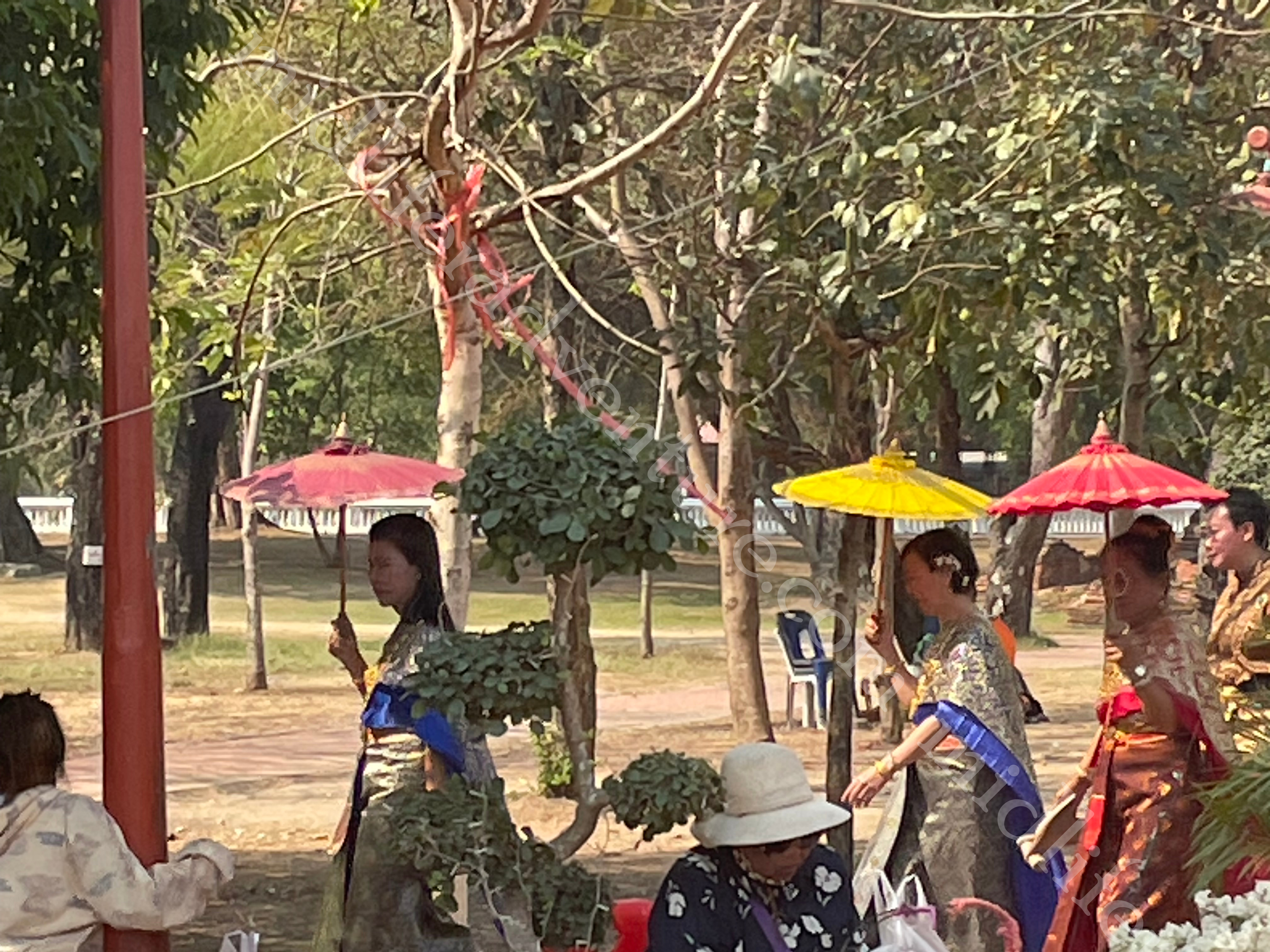
Wat Phra Si Sanphet
You are in the middle of the crowds now, Wat Phra Si Sanphet is the most historically important temple in old Ayutthaya. Its three large chedis and numerous smaller ones make this wat – also known as the King’s Temple – one of the most impressive sights in the ruined city. Two of the large chedis, the eastern and central ones, were built in 1492 by King Ramathibodi II to house the ashes of his father and elder brother. His own ashes are interred in the third chedi, built in 1530 by his son and royal successor, King Boromaraja IV.
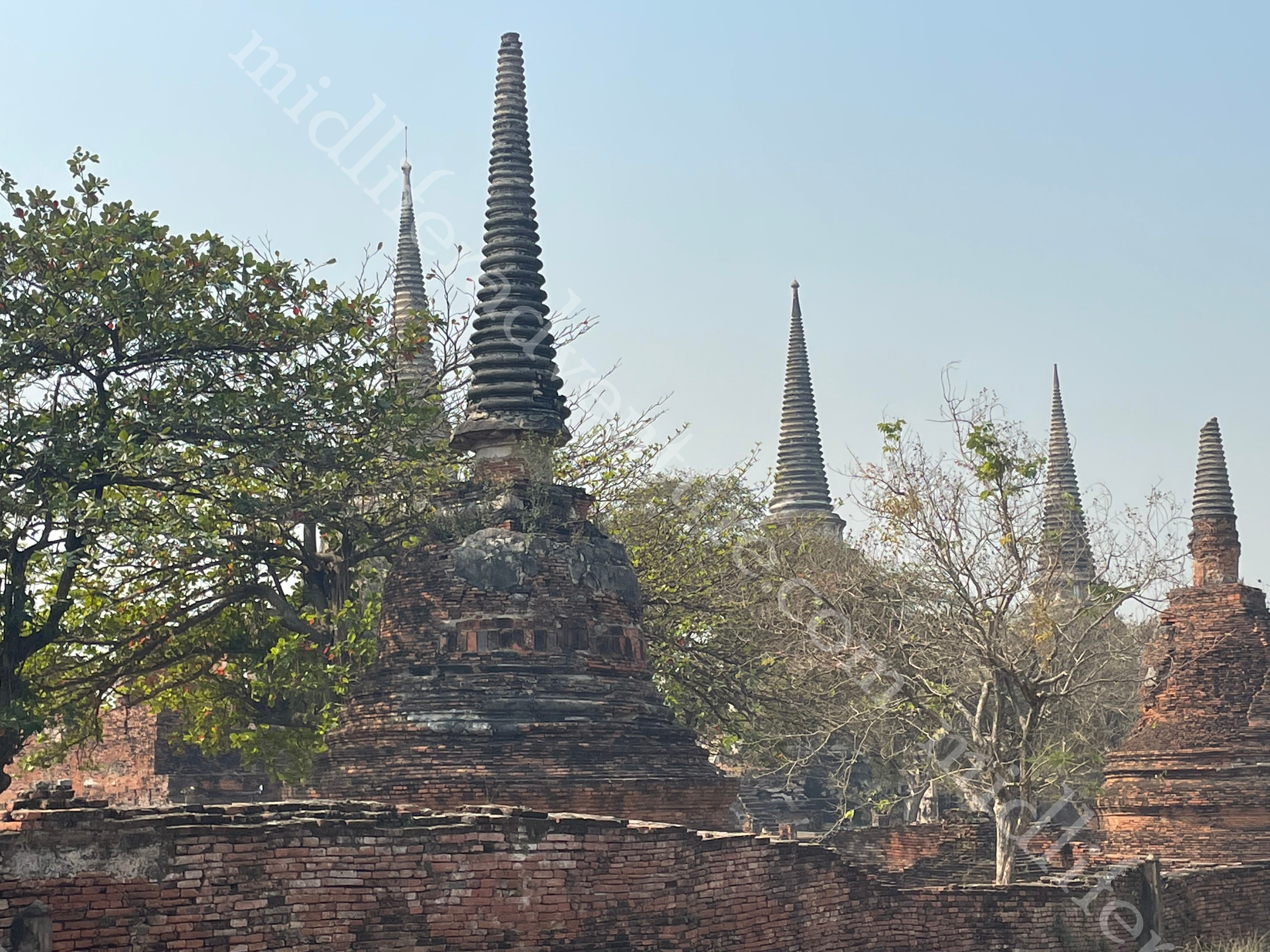
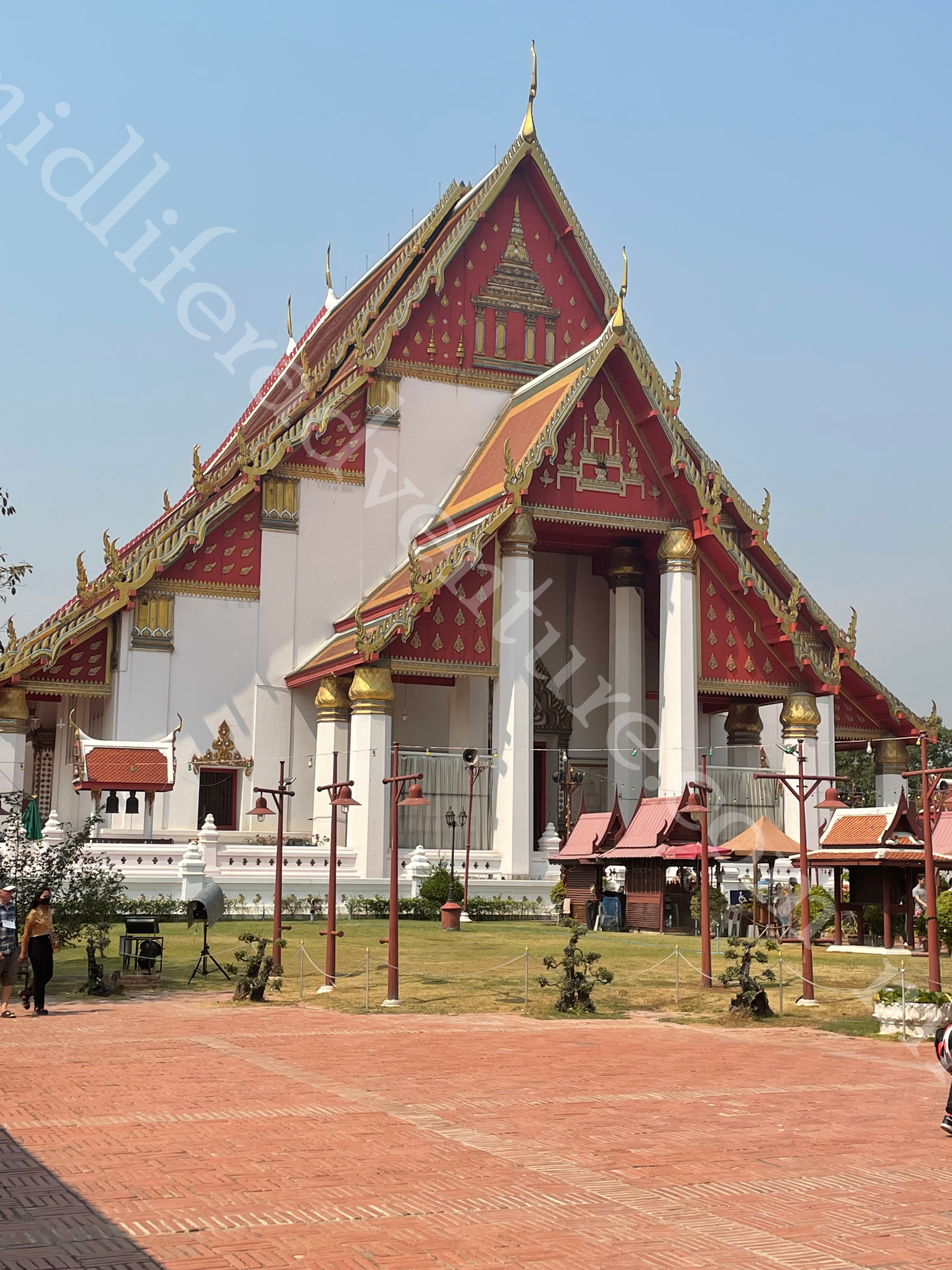
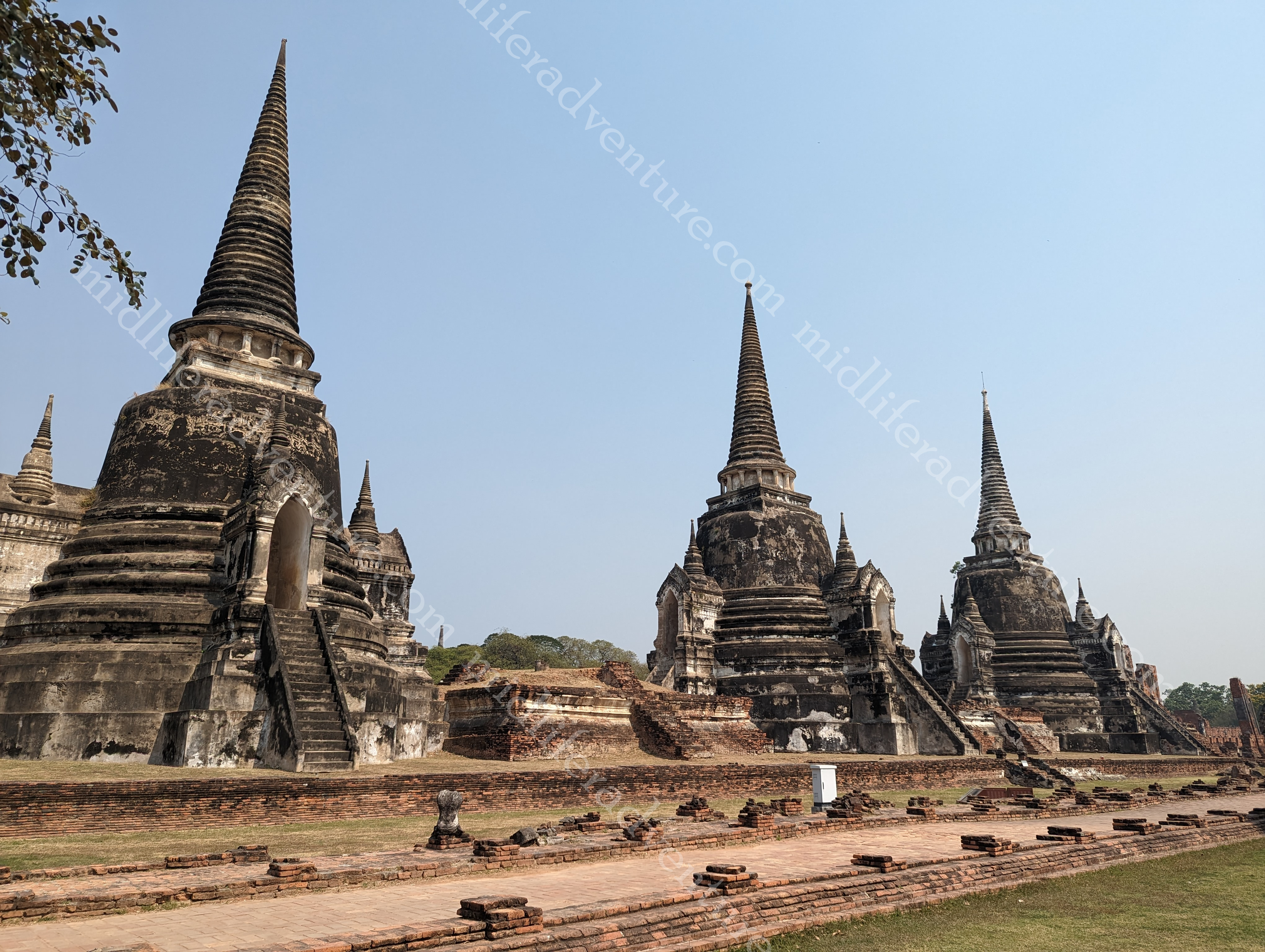
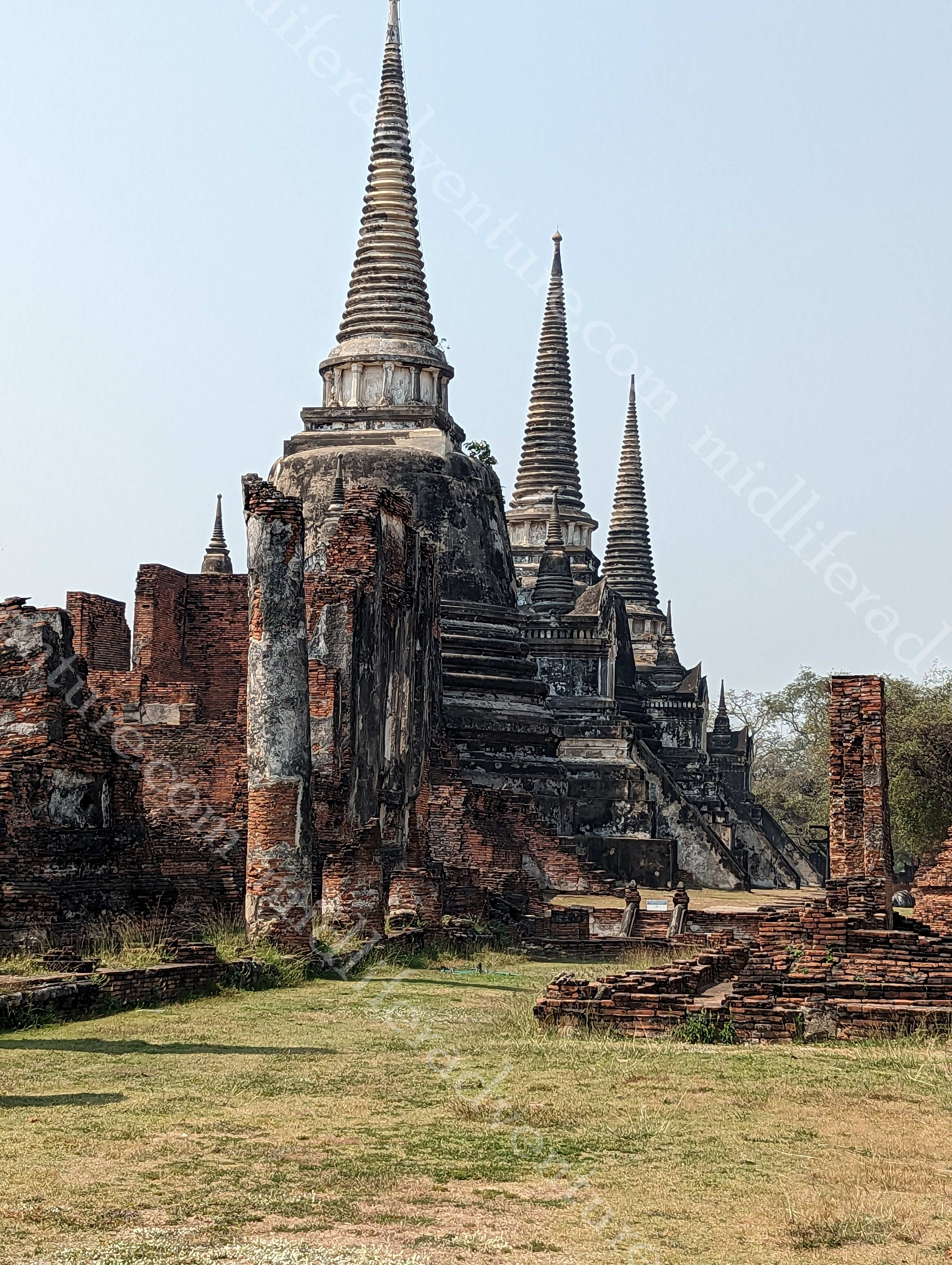
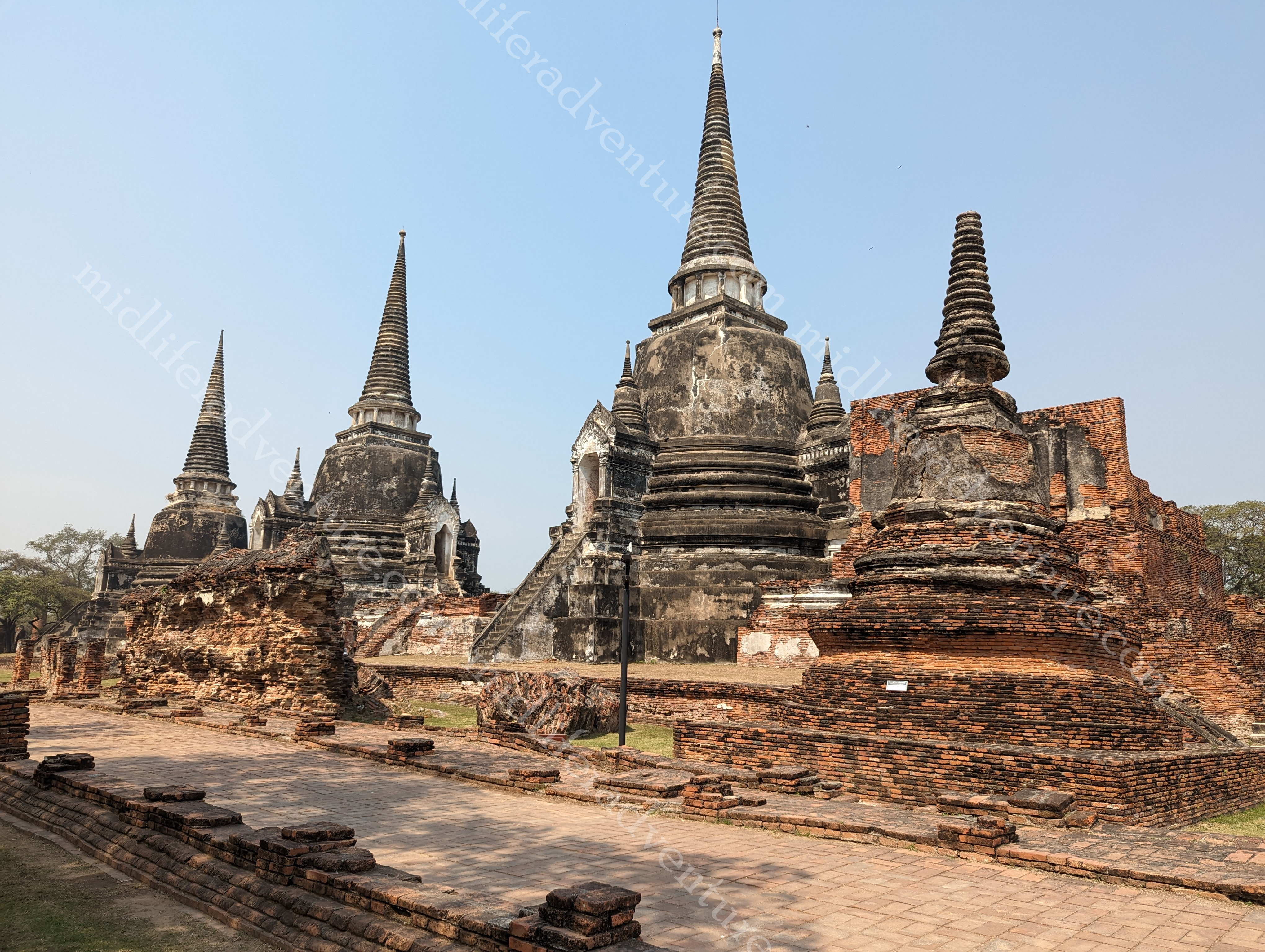
Elephant Palace and Royal Kraal
This was my favourite bit of day one and is the highlight of this palace. The front of the elephant yard is a small elephant shelter where visitors can get a picture of the elephants and even feed them. There is an opportunity for elephant rides too.
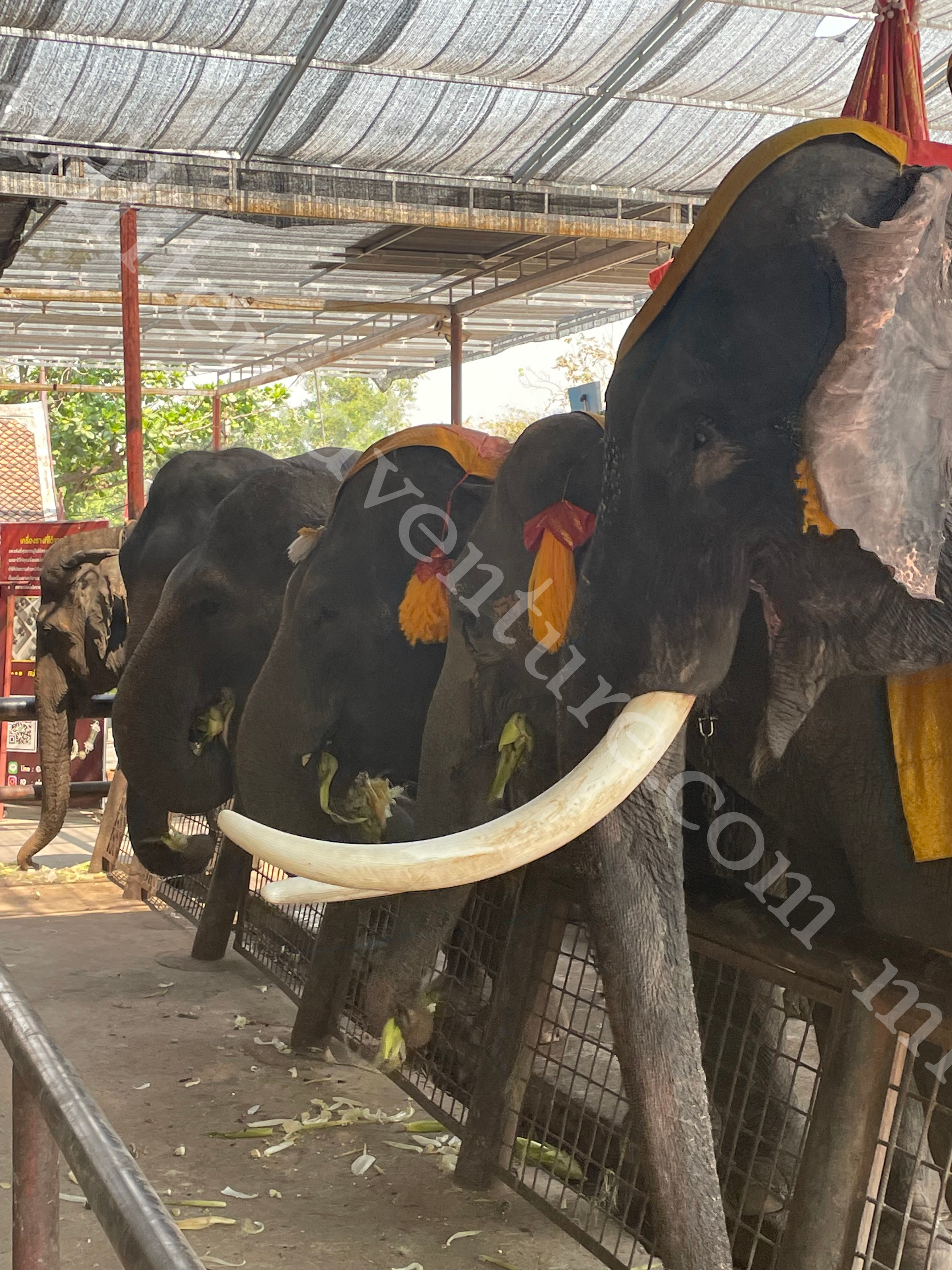
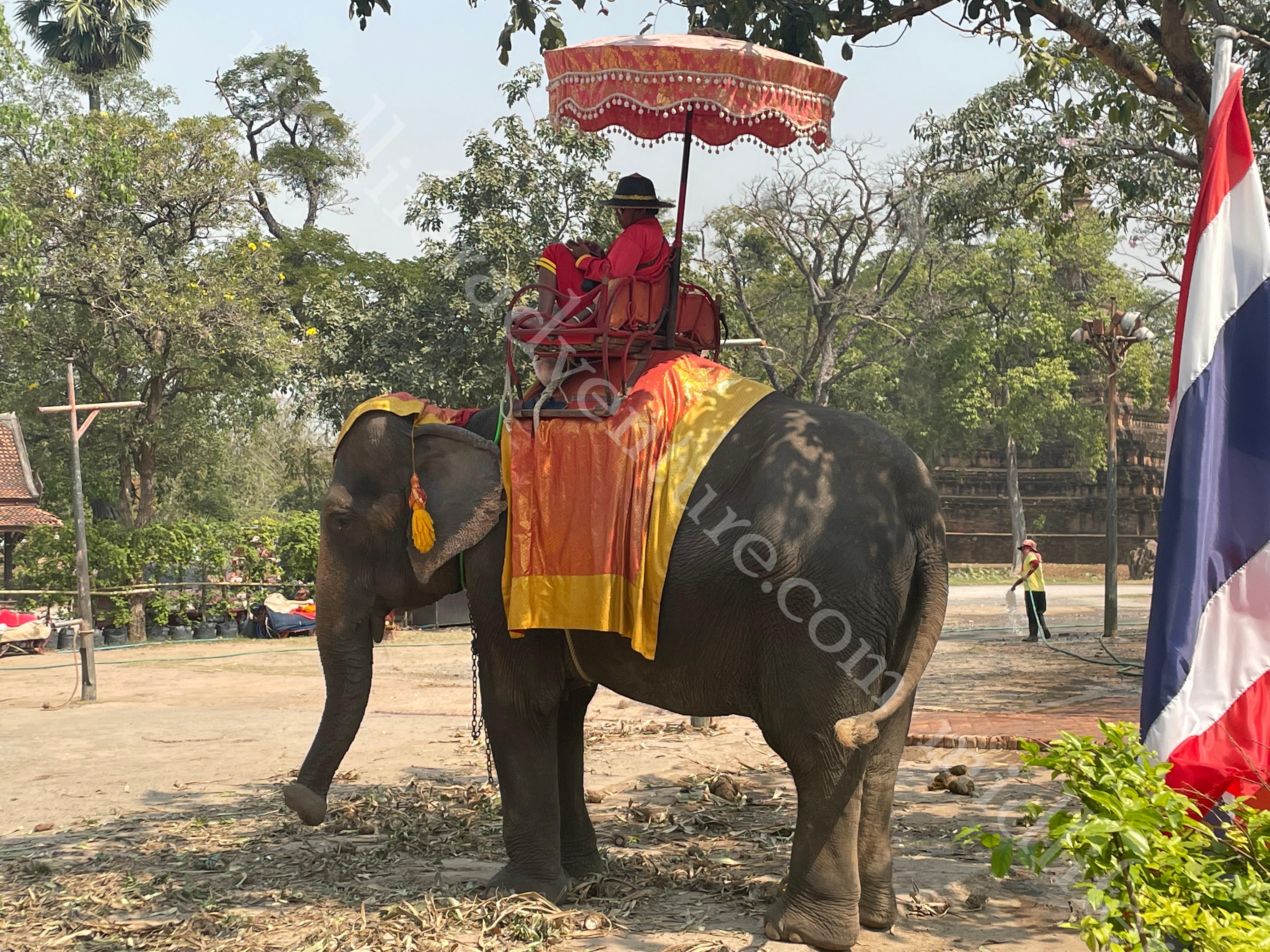
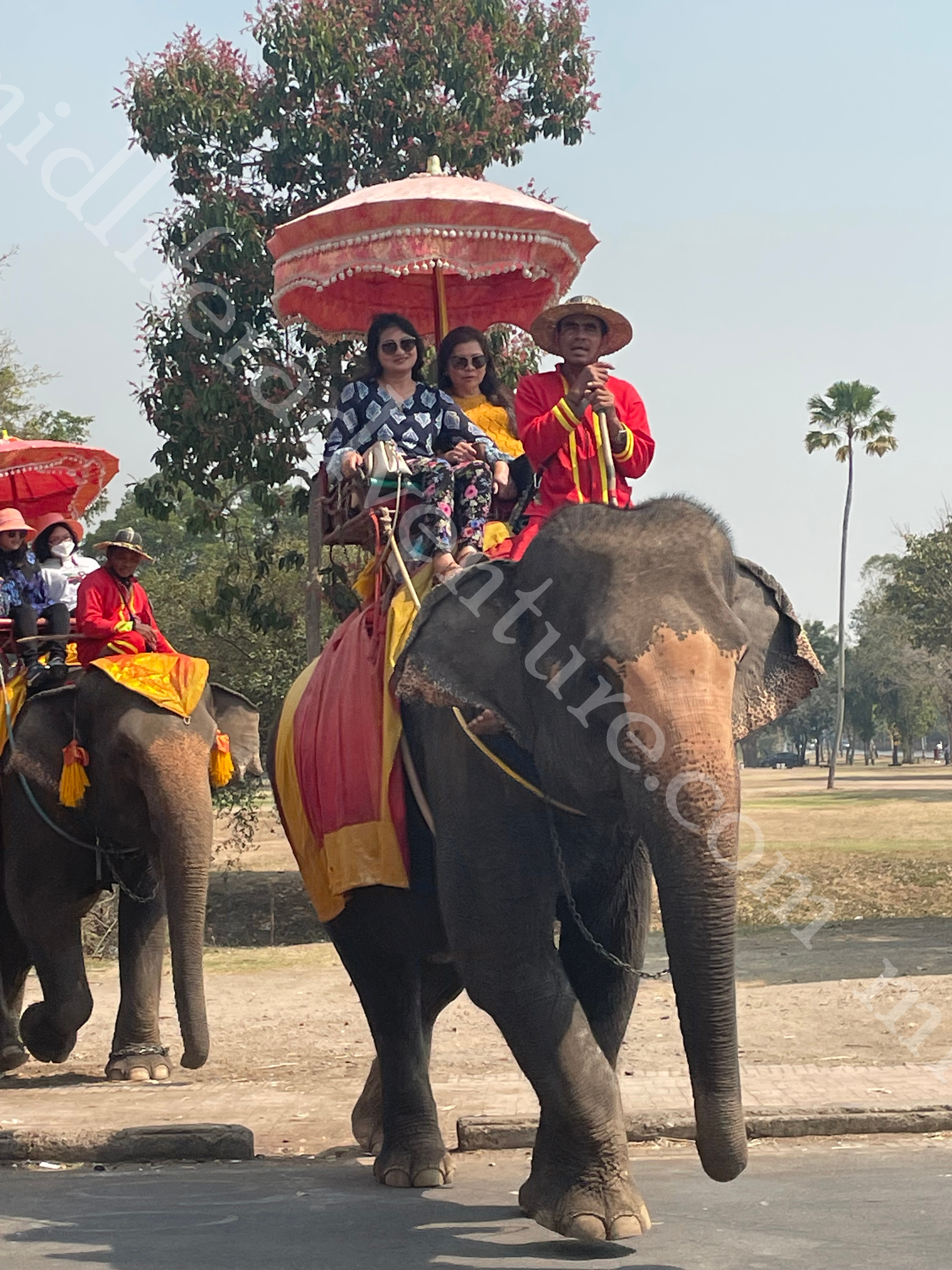
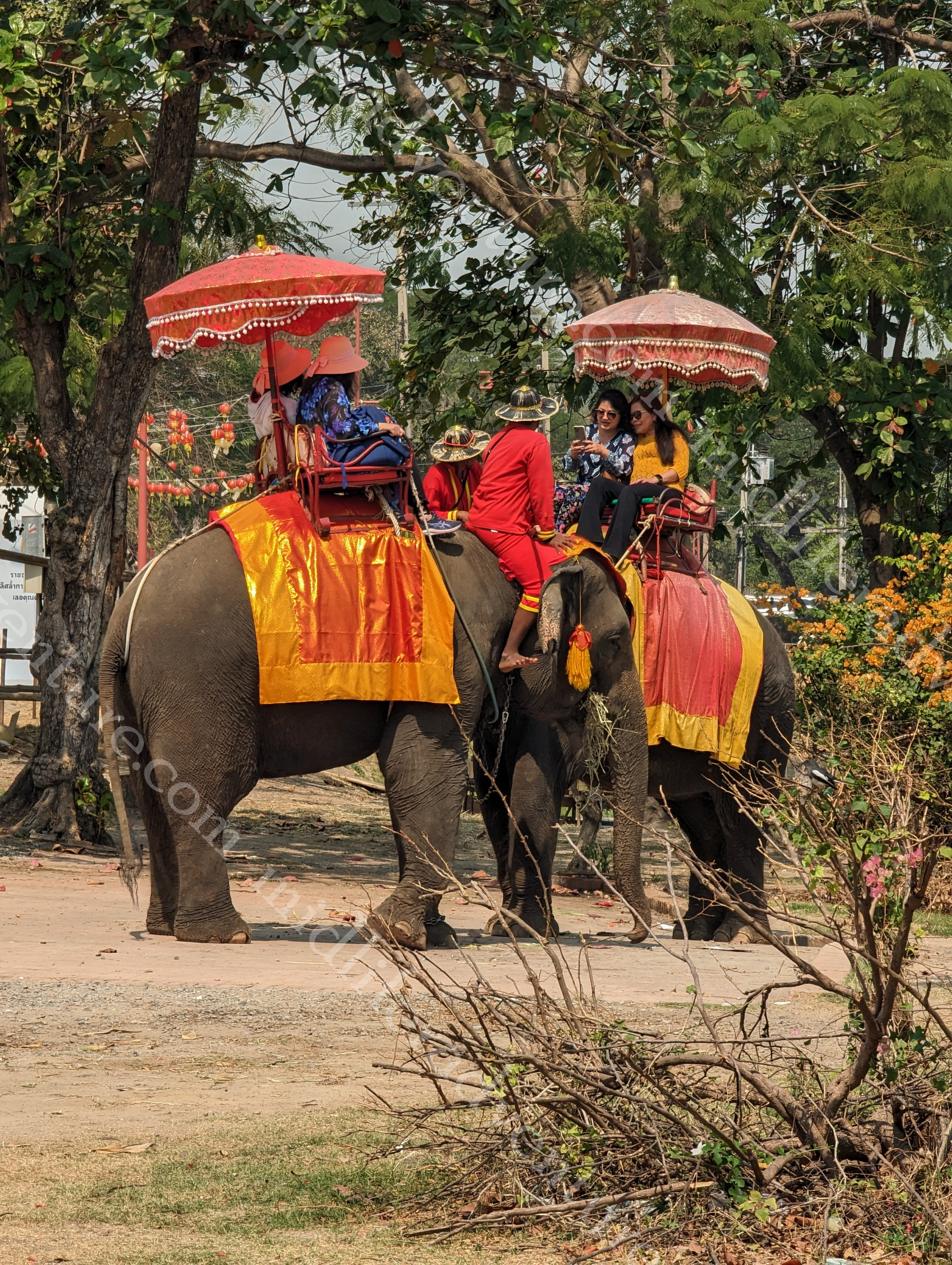

Jill’s favourite part of the day was watching a poor mahout (elephant herder) laying back on the elephant’s head while trying to capture the perfect Instagram shot for the two women riding (last photo above). I was caught fighting with a tuk tuk driver explaining why I did not a tour from him and missed the whole show, that apparently went on for ages.
Plastic is going to kill Asia
This is the first time we have seen anything this bad since India. Rubbish bins were in short supply throughout the entire town of Ayuttaya and the love of the plastic bag has created the biggest rubbish dump around. This place was a tip.
I am certain that if the appropriate receptacles were available that the Thai people would use them – but they were not. While the use of the plastic bag and takeaway meals has been ubiquitous throughout Thailand, this is the first place where litter and rubbish has been obvious.
The outer ring
Much like Cambodia, there is an inner ring and an outer ring of temples to visit. Day one we walked and ripped out about 18,000 steps, leaving us tired and weary in the 35 degree heat. So day two we hired a tuk tuk to do the outer ring.
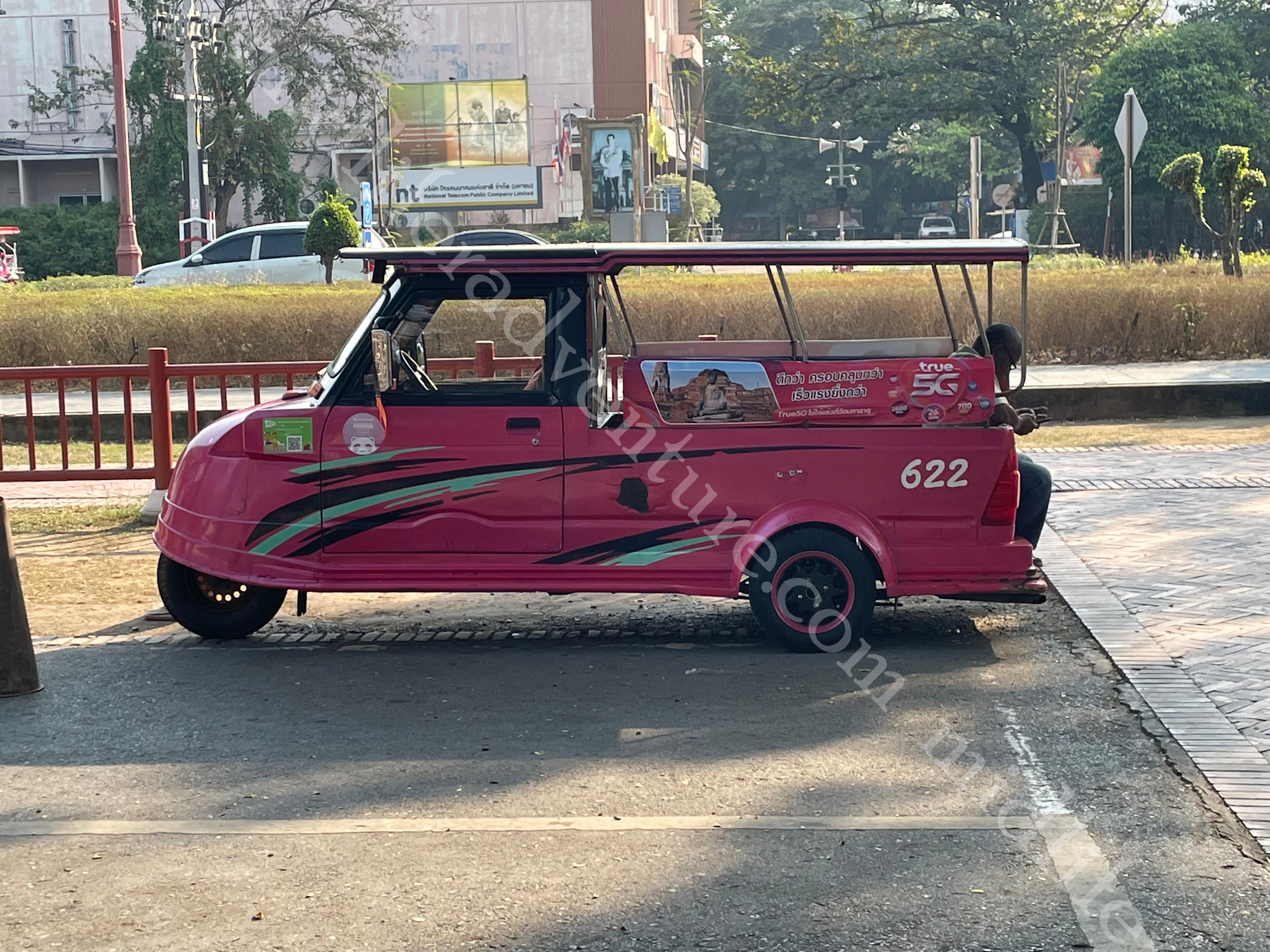
Wat Yai Chaya Mongkol
This is the site of the reclining buddha and a stupa with a set of stairs that saw me tapping out. Jill, on the other hand, seems to have taken every set of stairs as a challenge that must be climbed. Even on a smoggy morning where there will be no view, she will climb it.
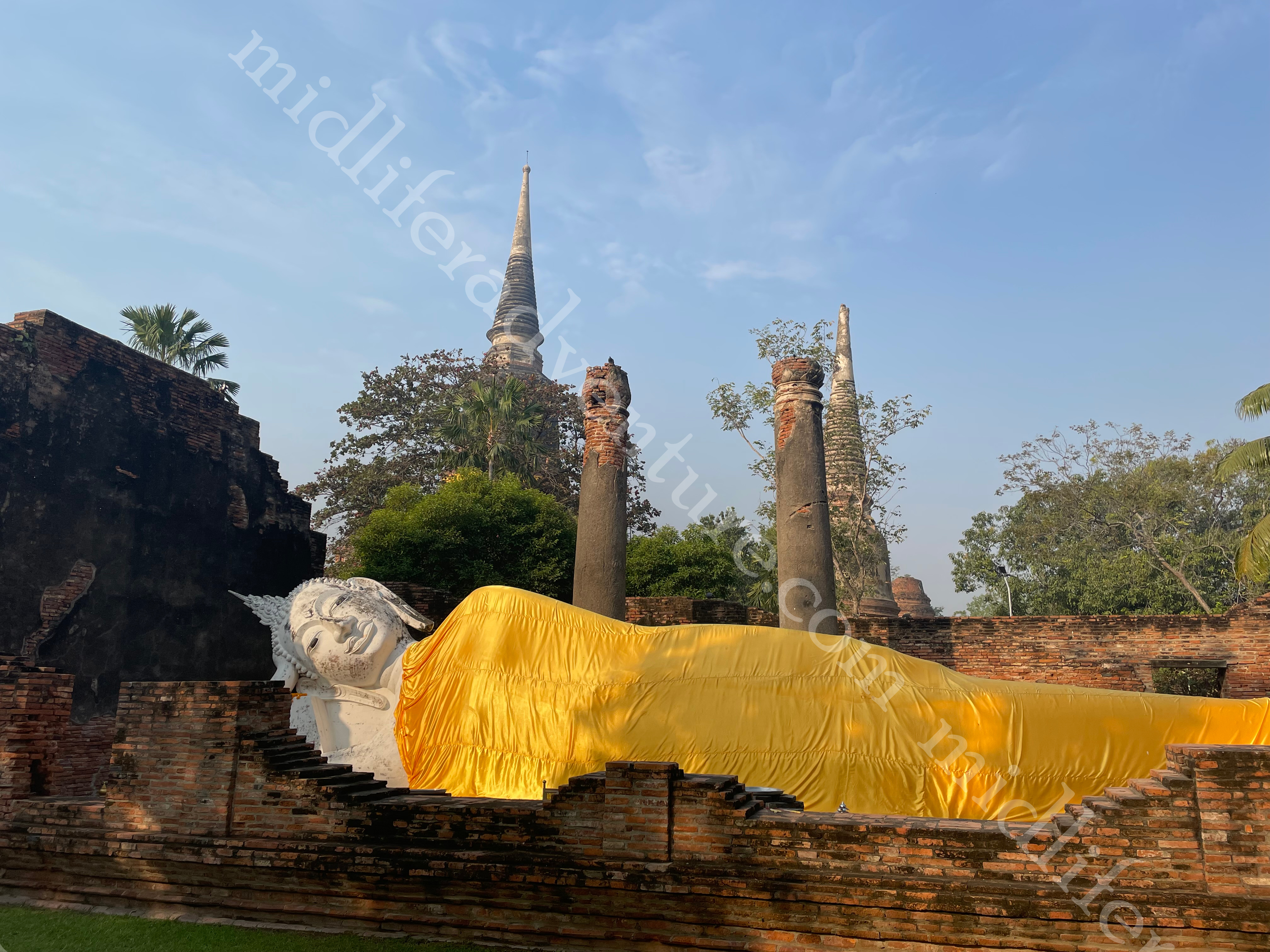
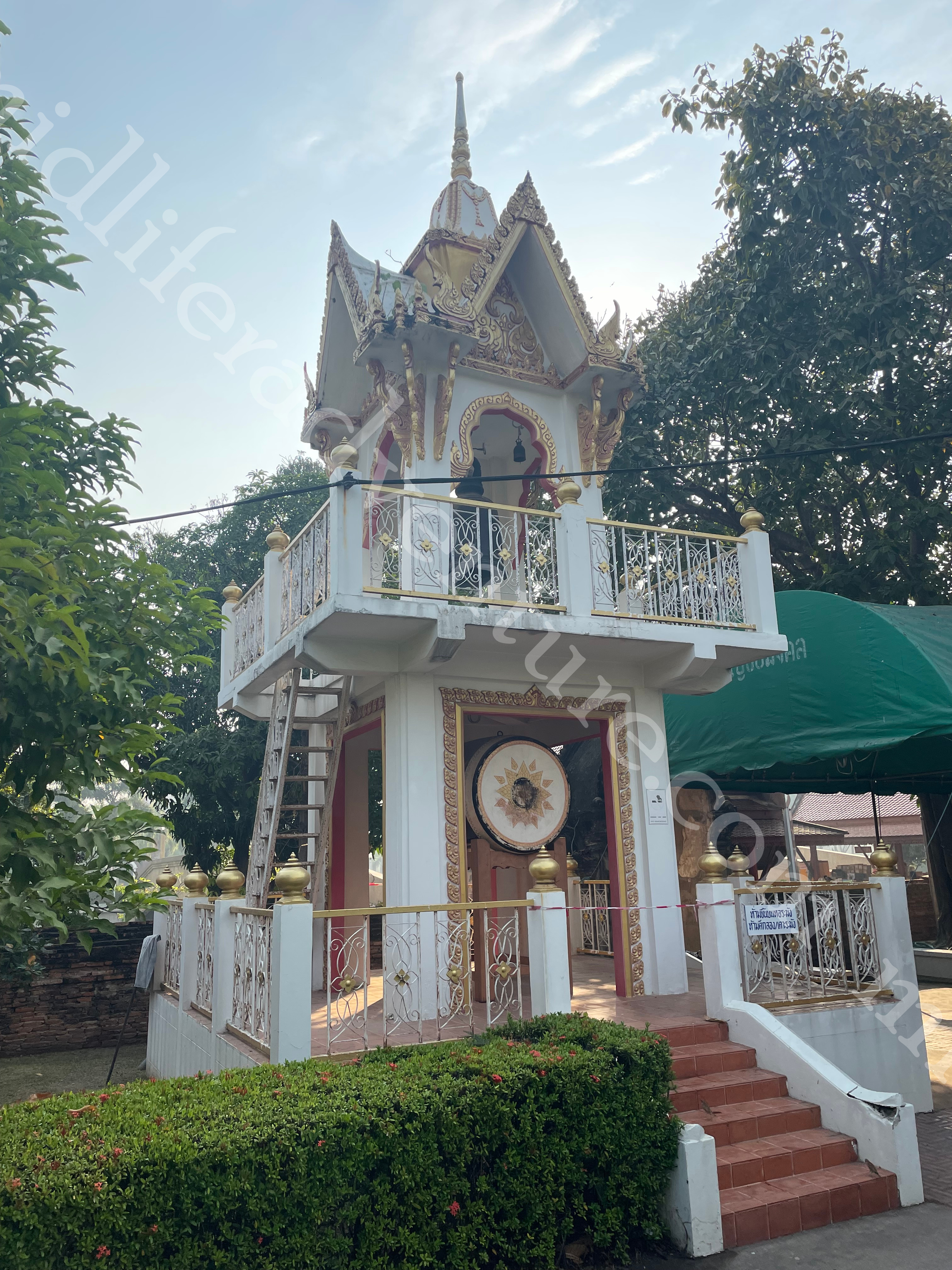
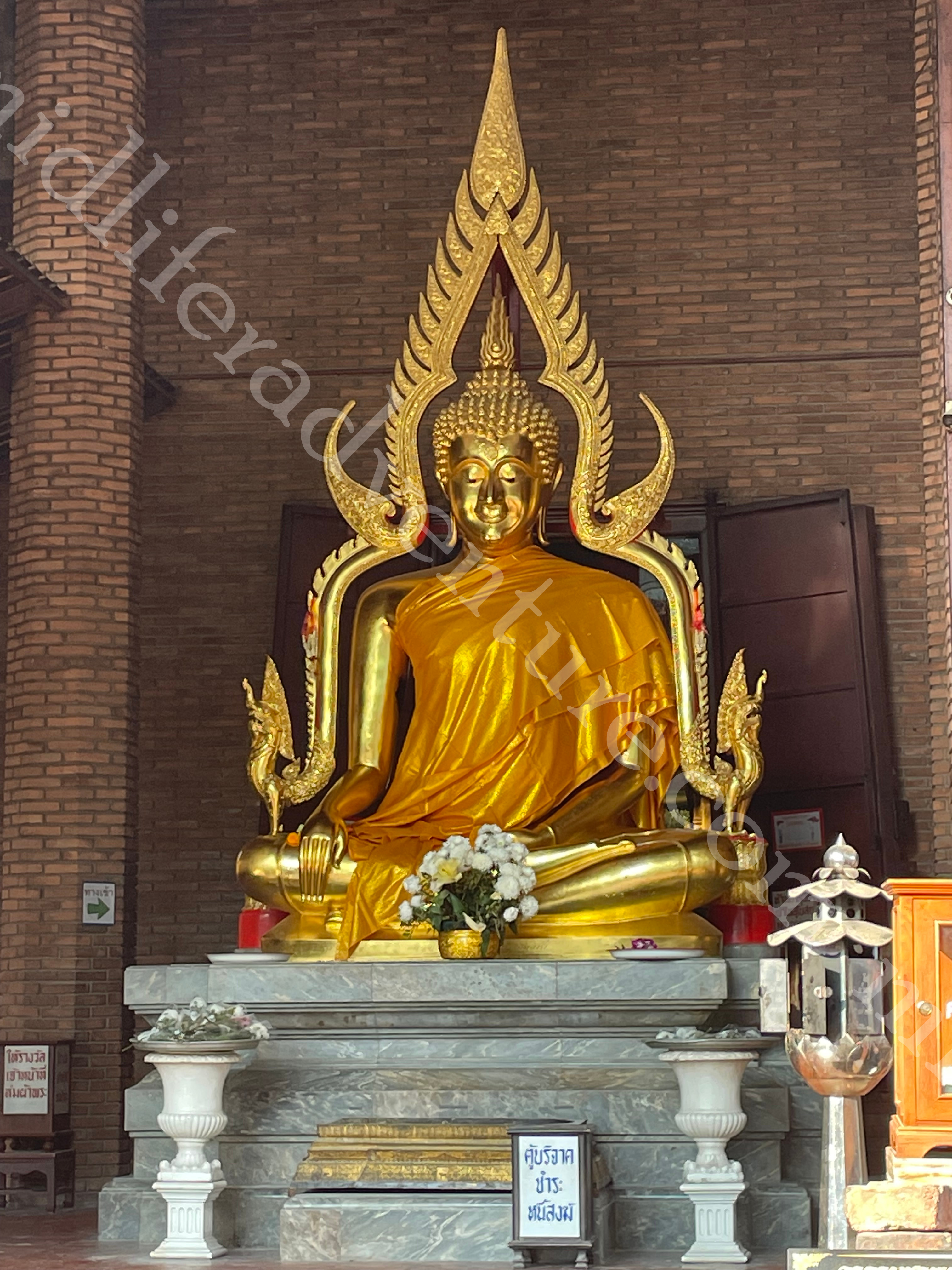
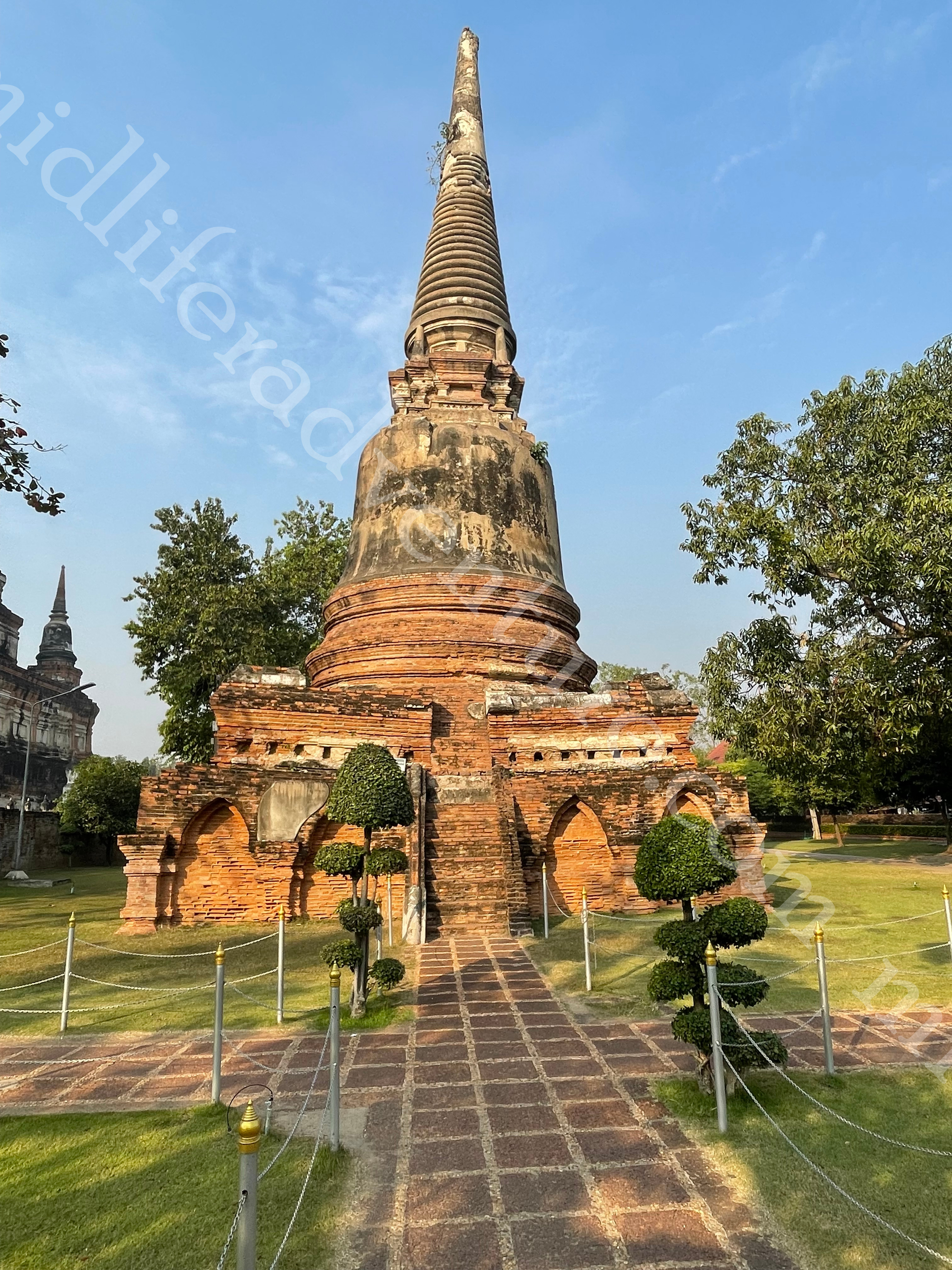
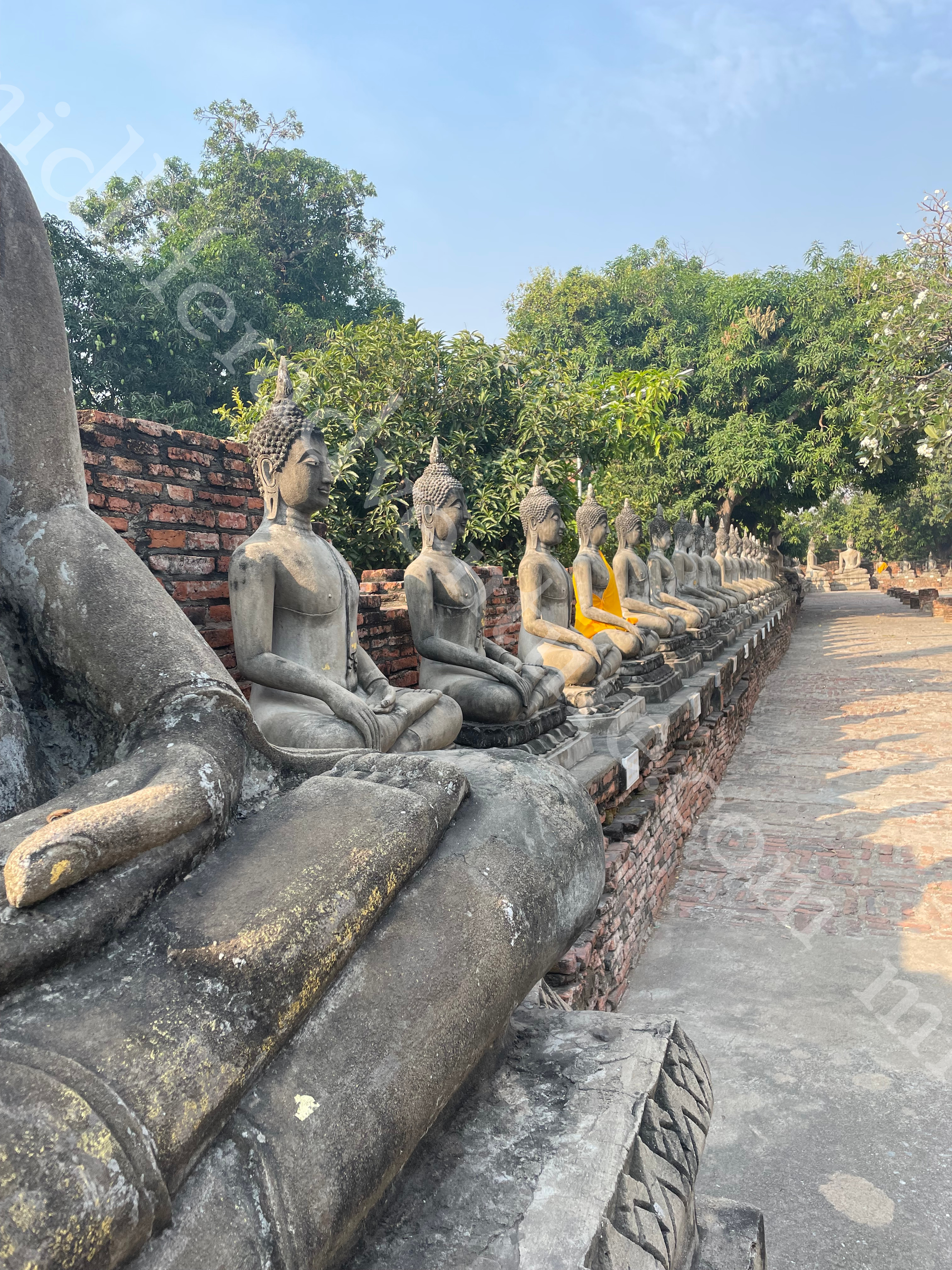
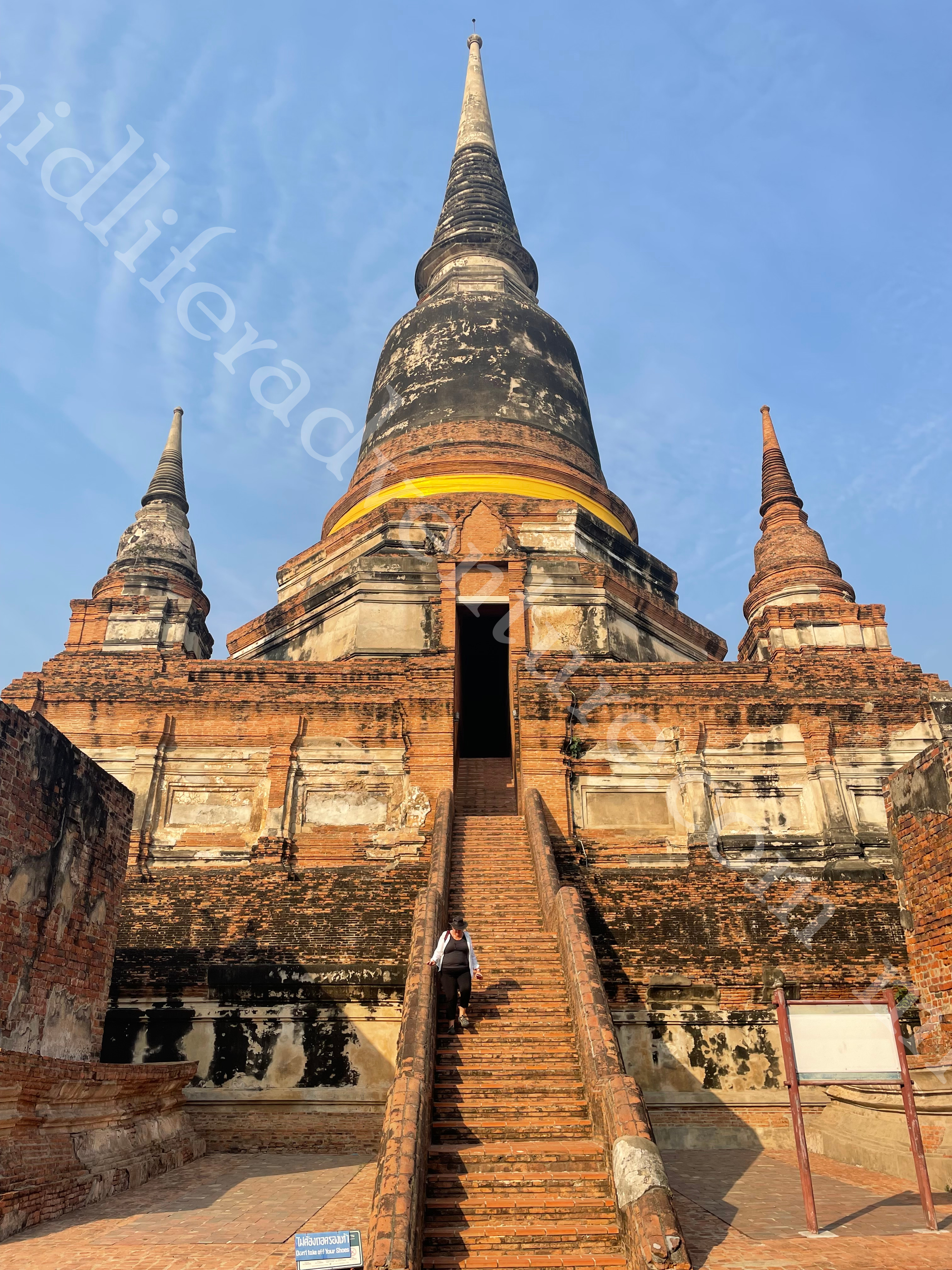
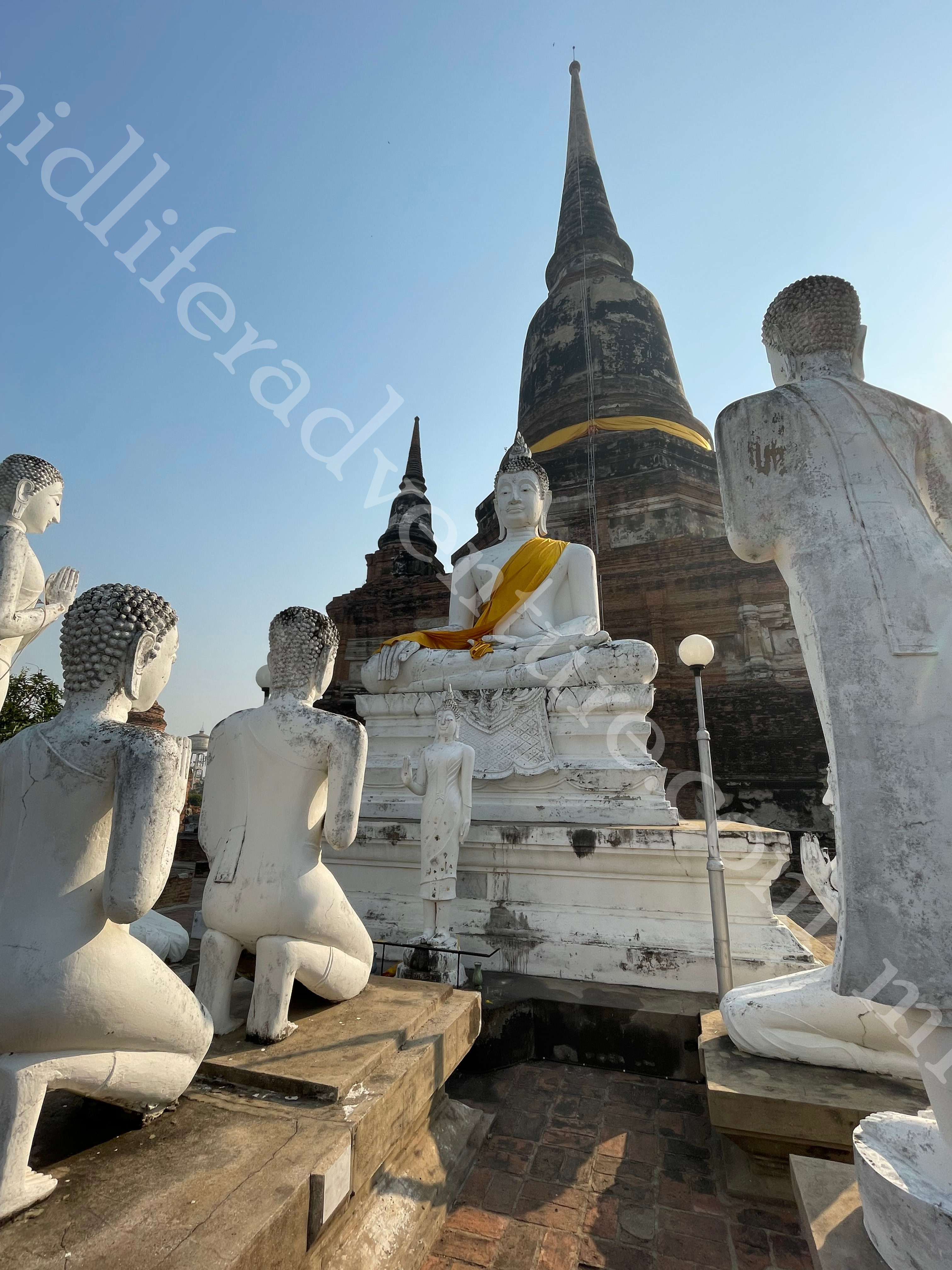
Wat Phananchoeng
The large wihan holds a 19 meter high, gilded, seated Buddha. It is a highly revered Buddha statue and is regarded as a guardian for mariners.
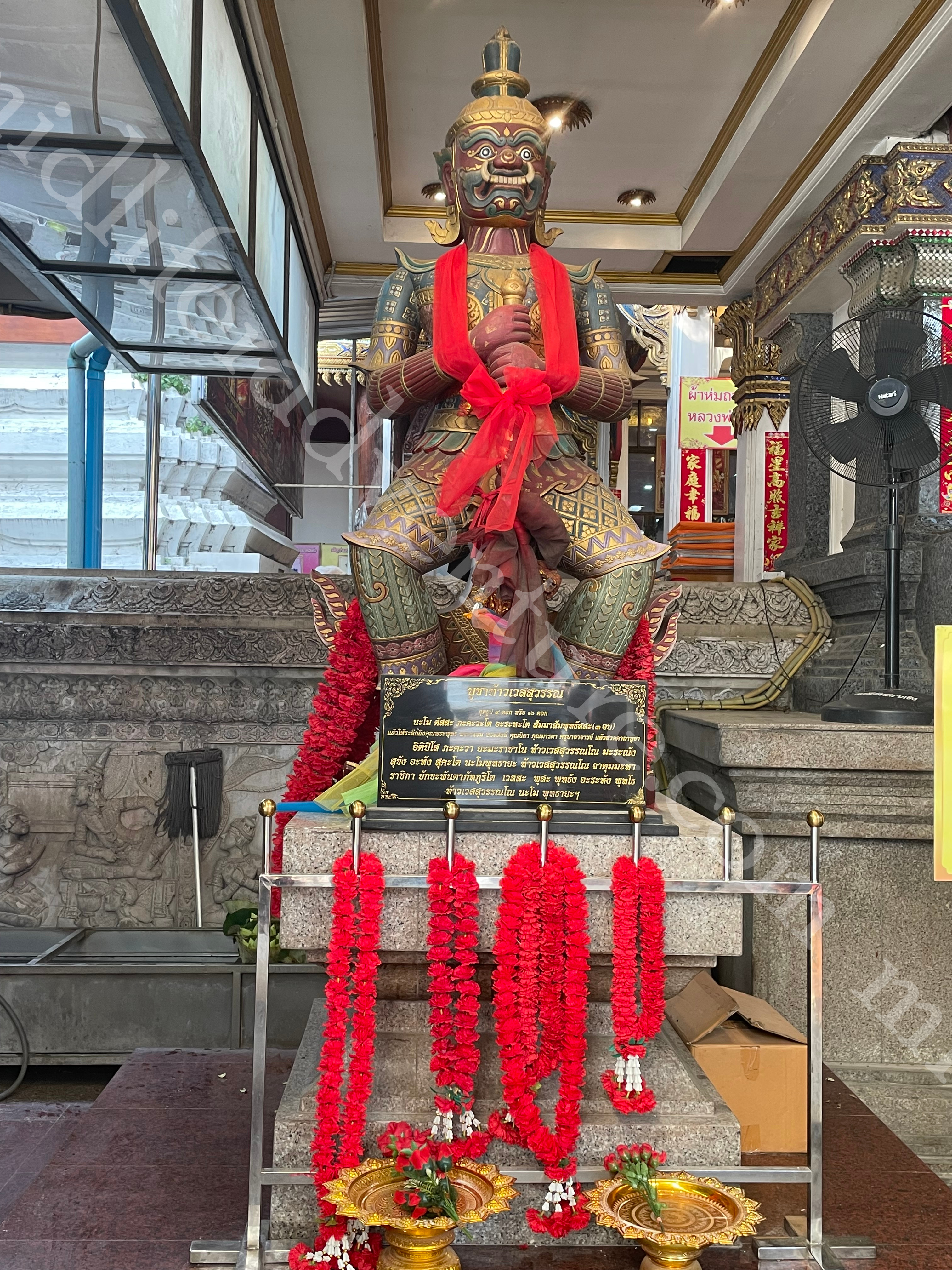
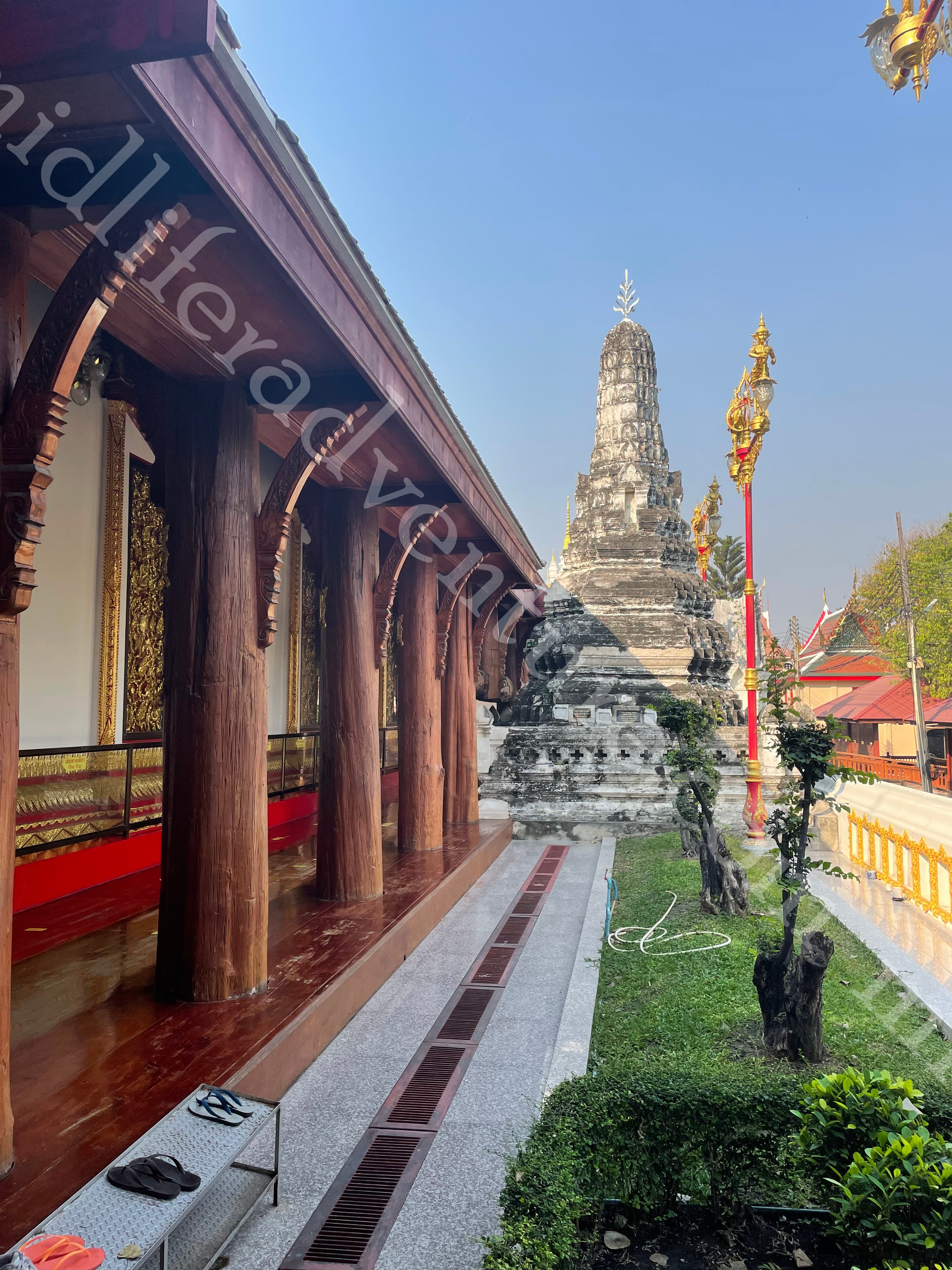
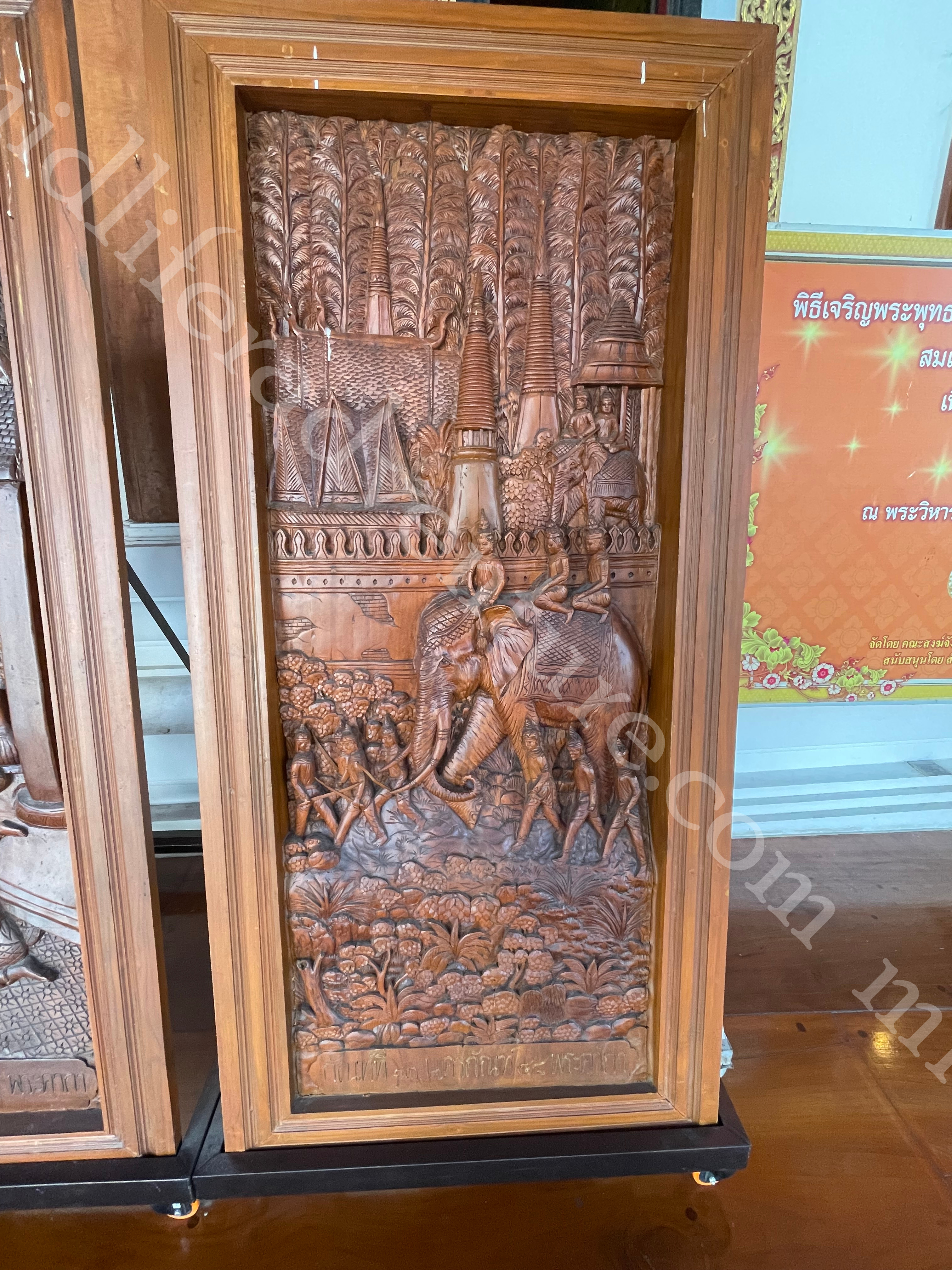
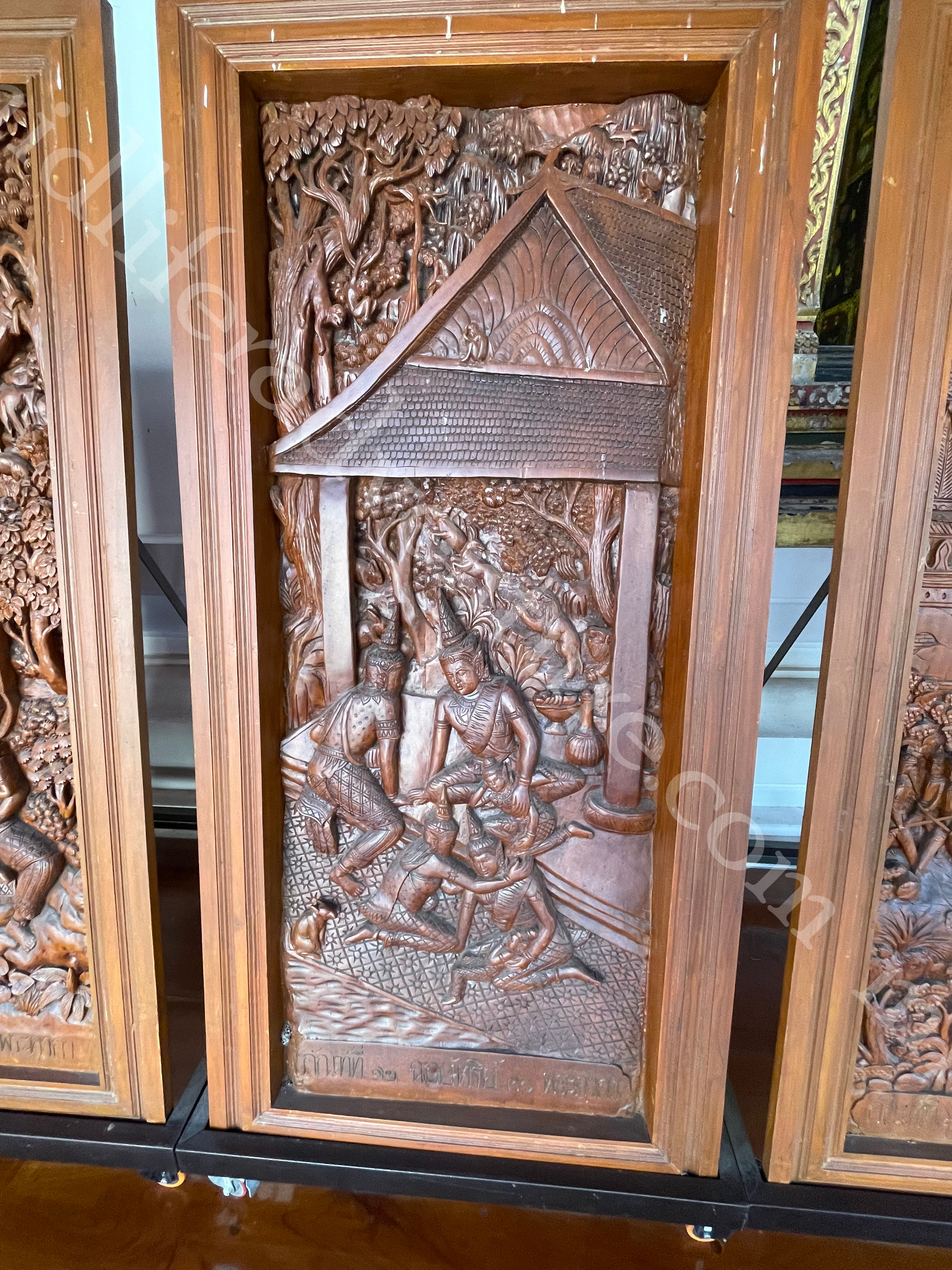
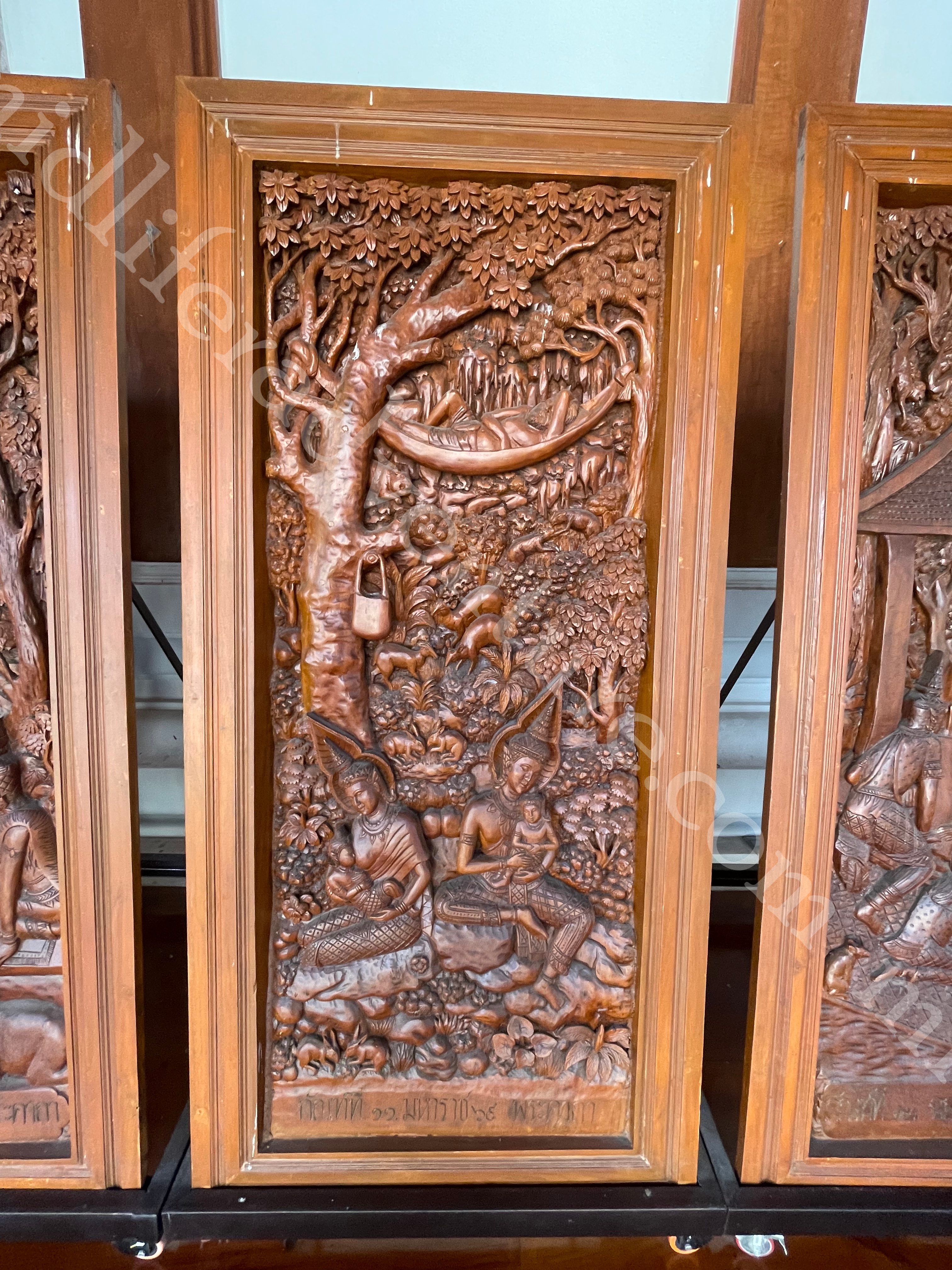
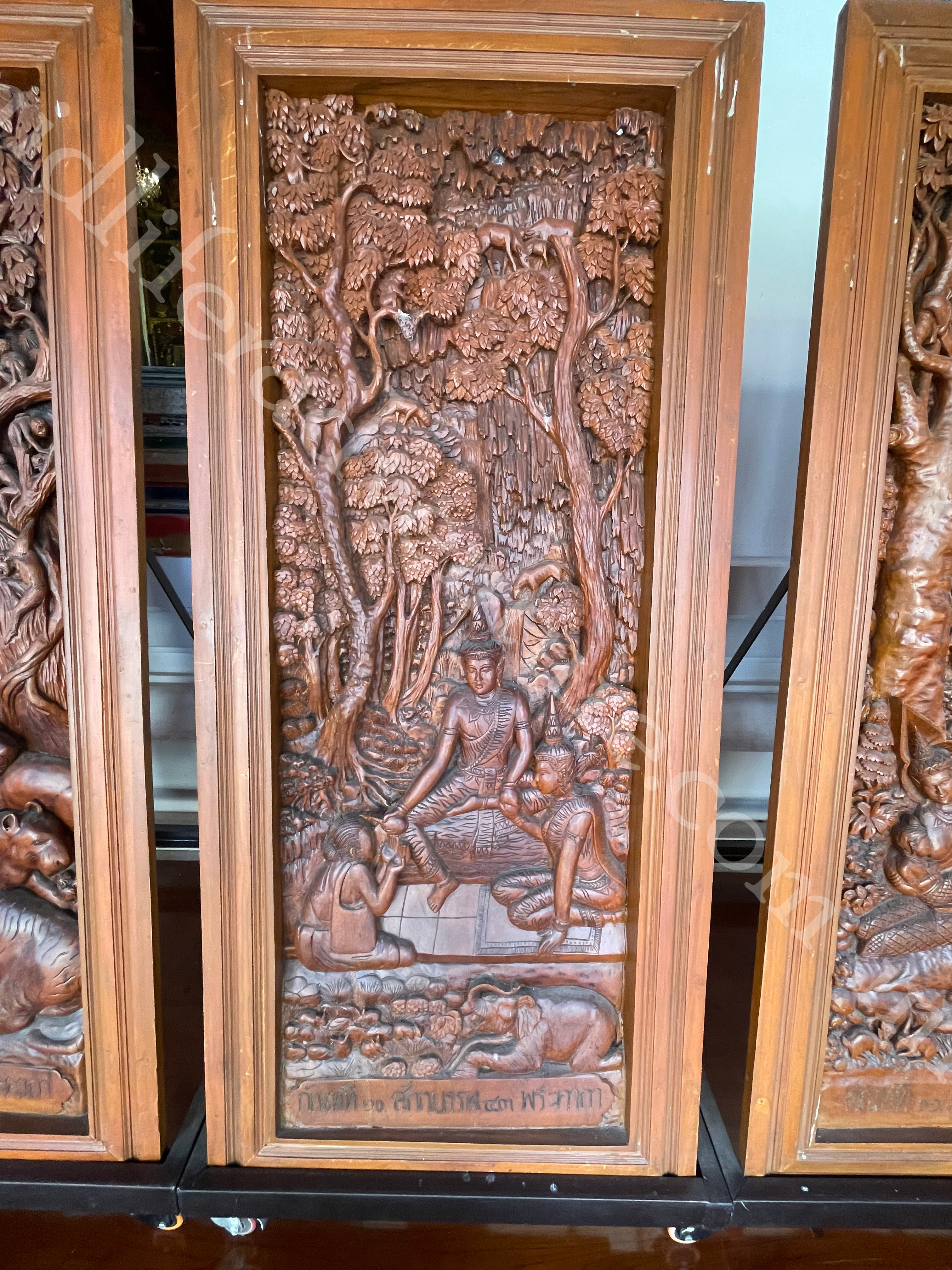
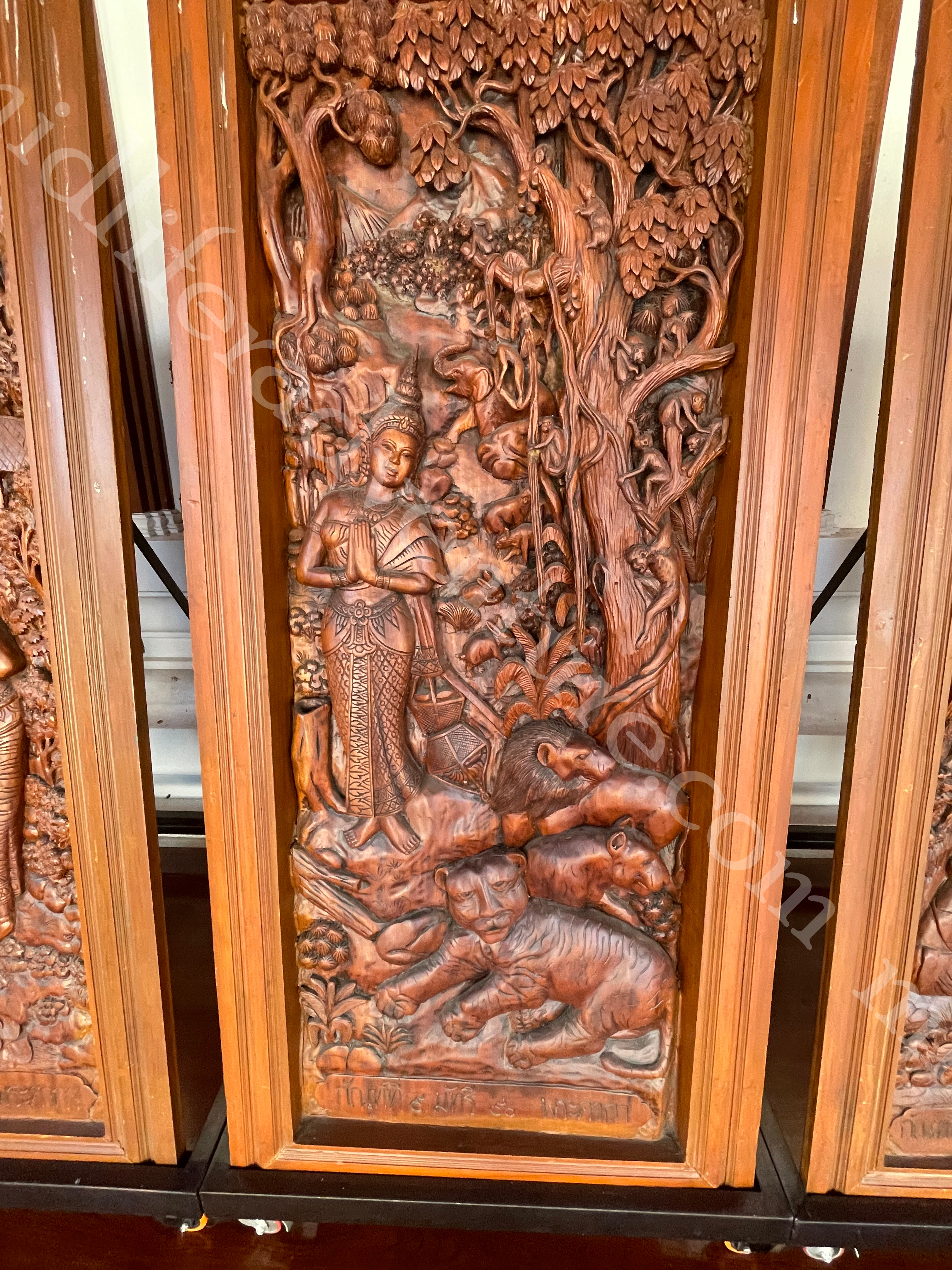
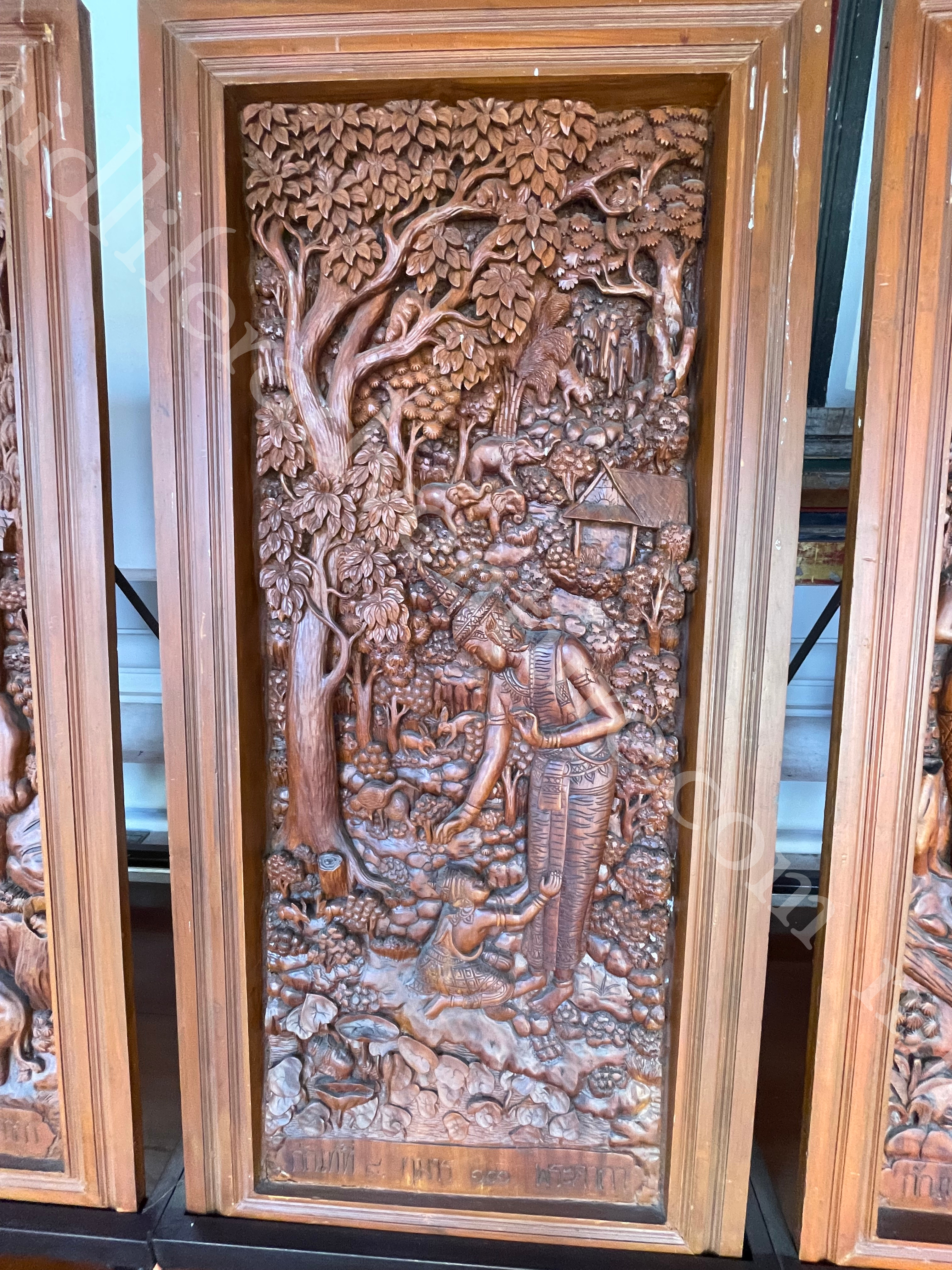
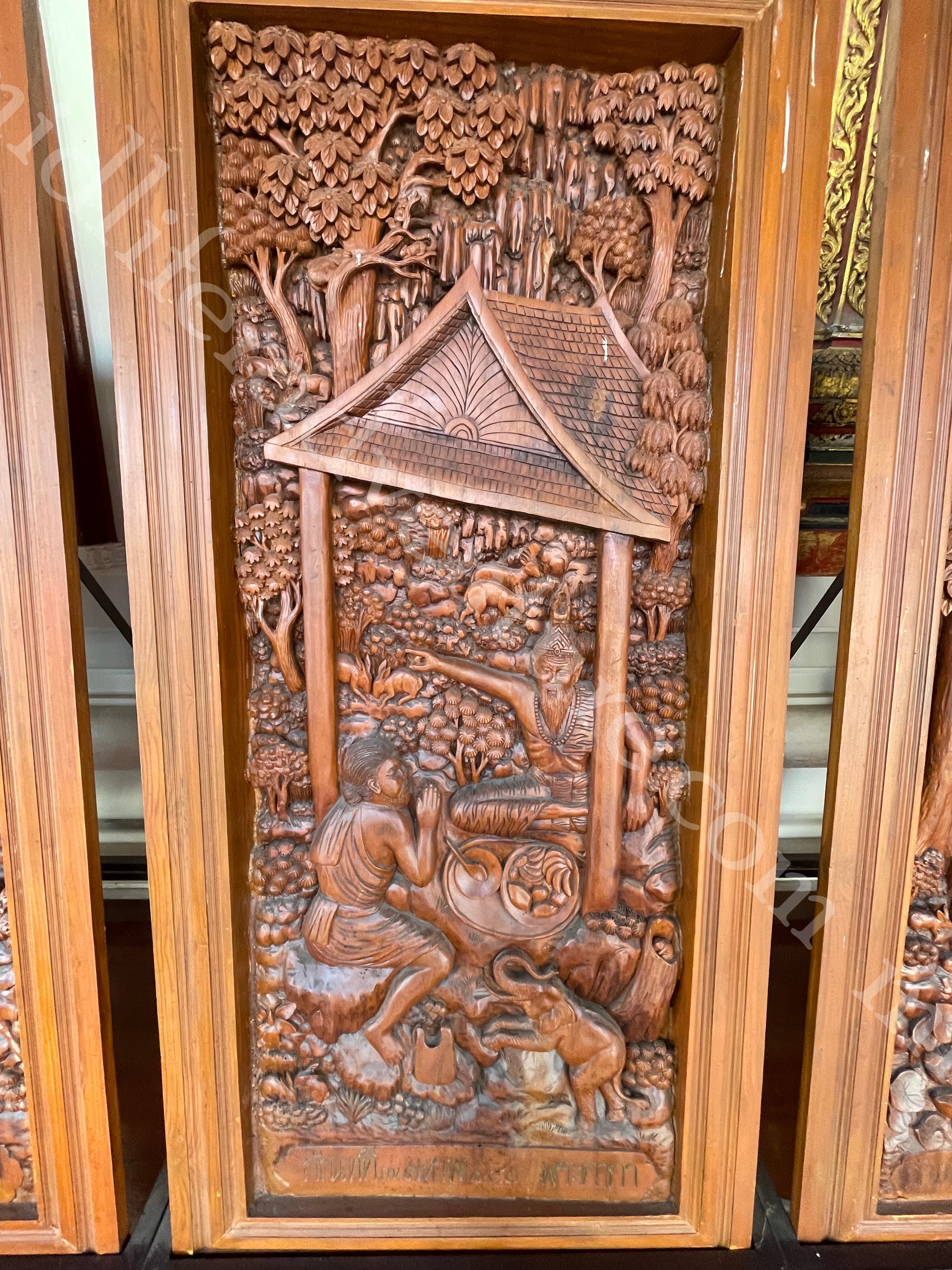
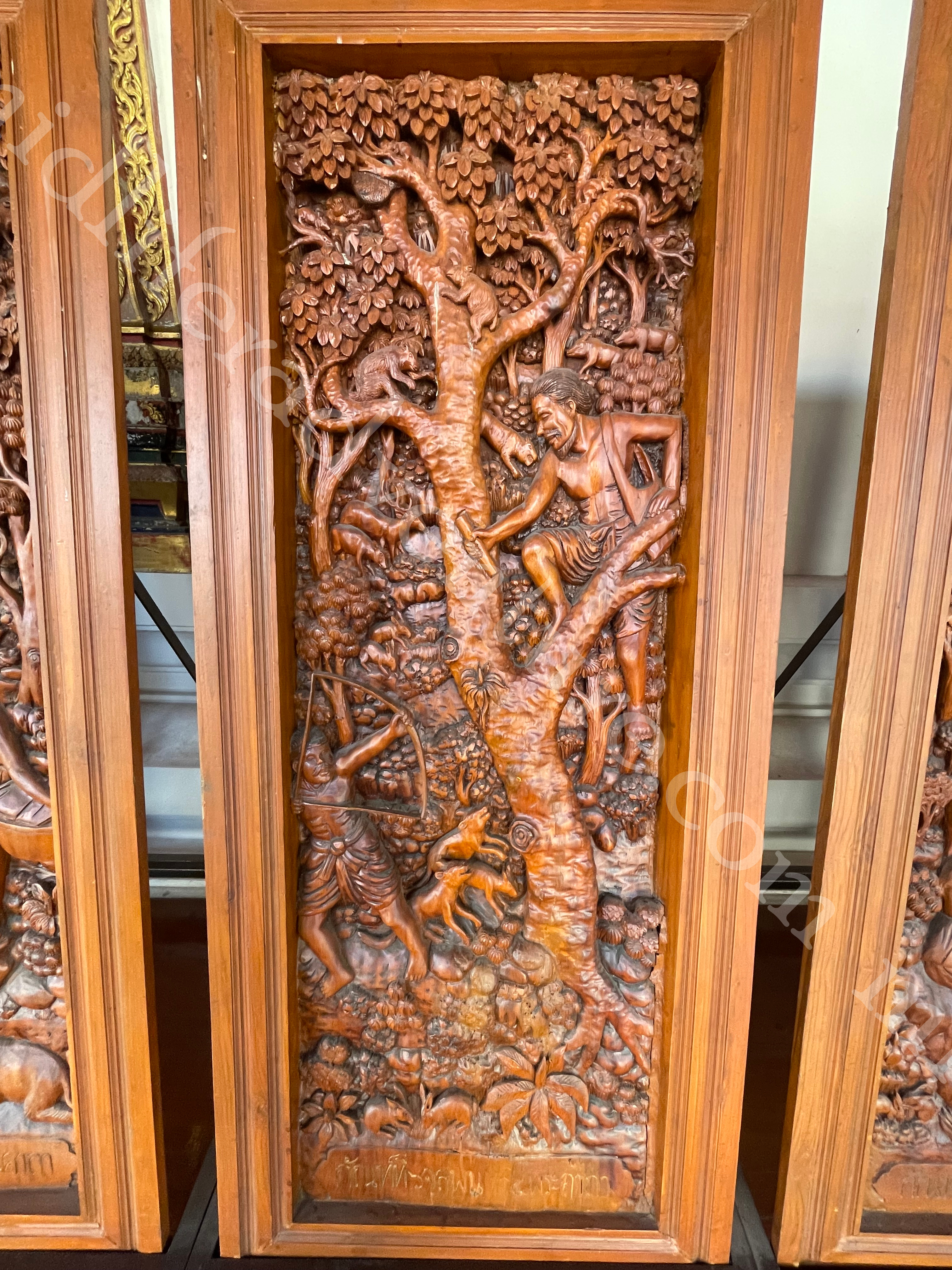
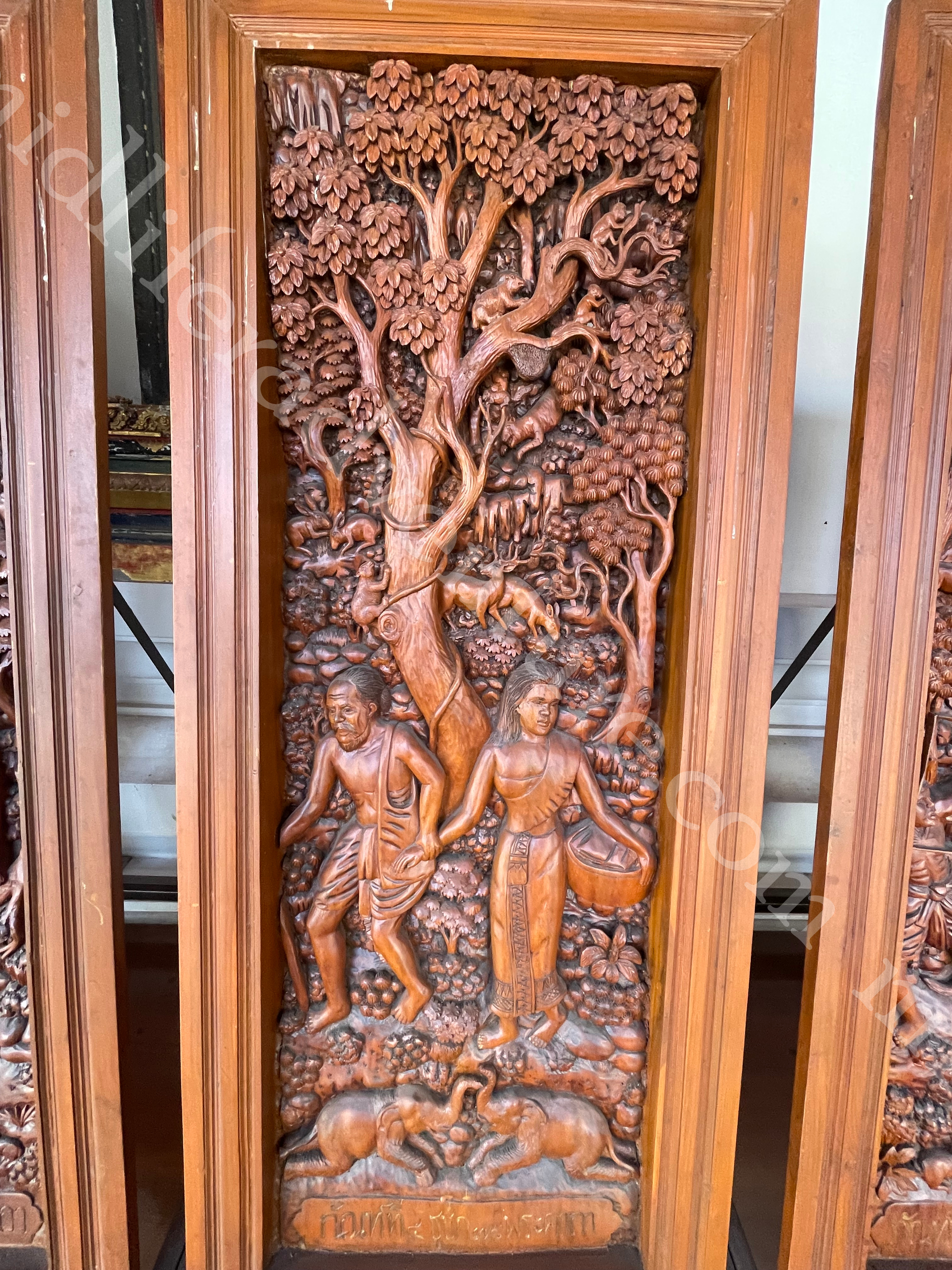

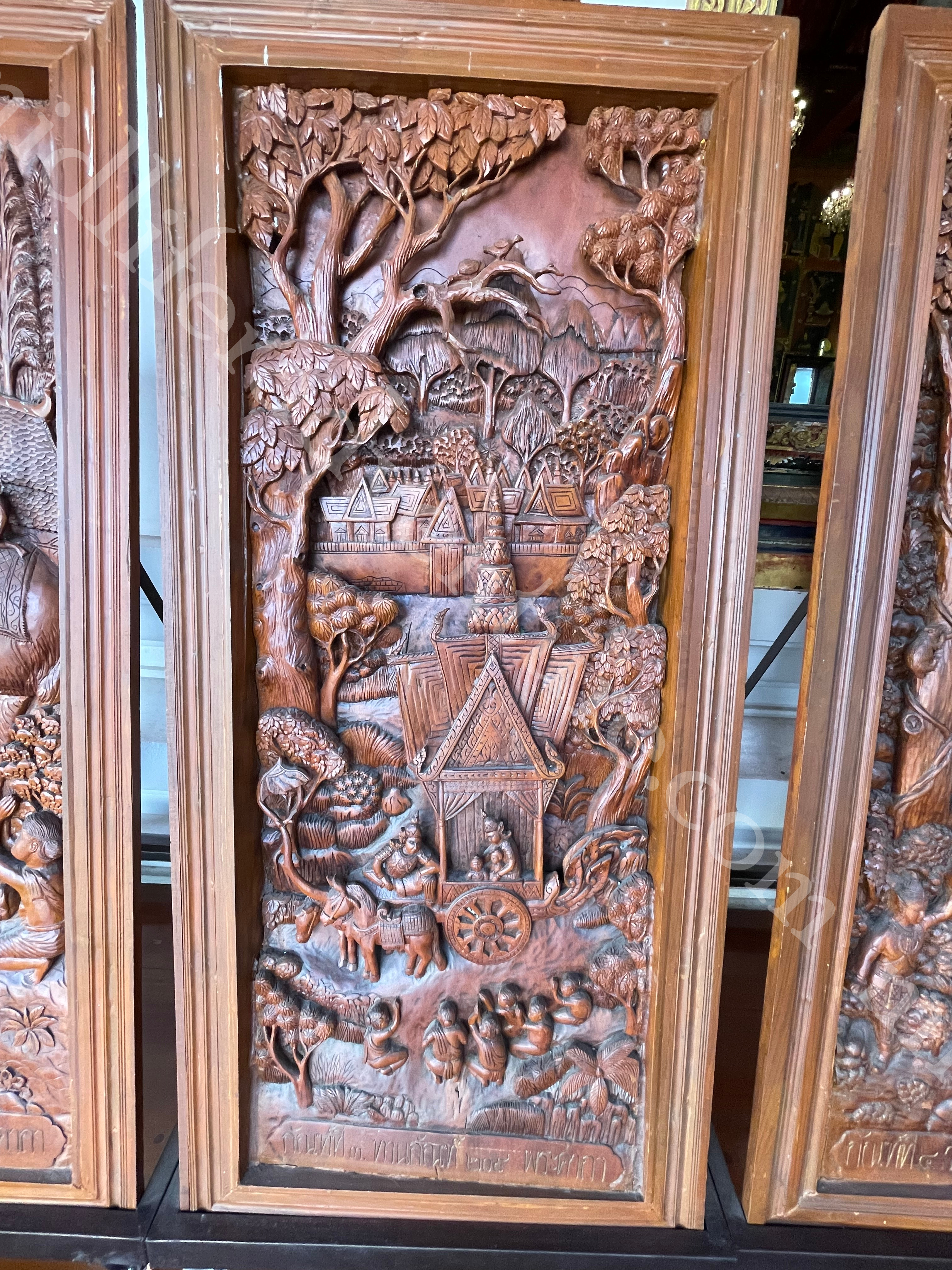
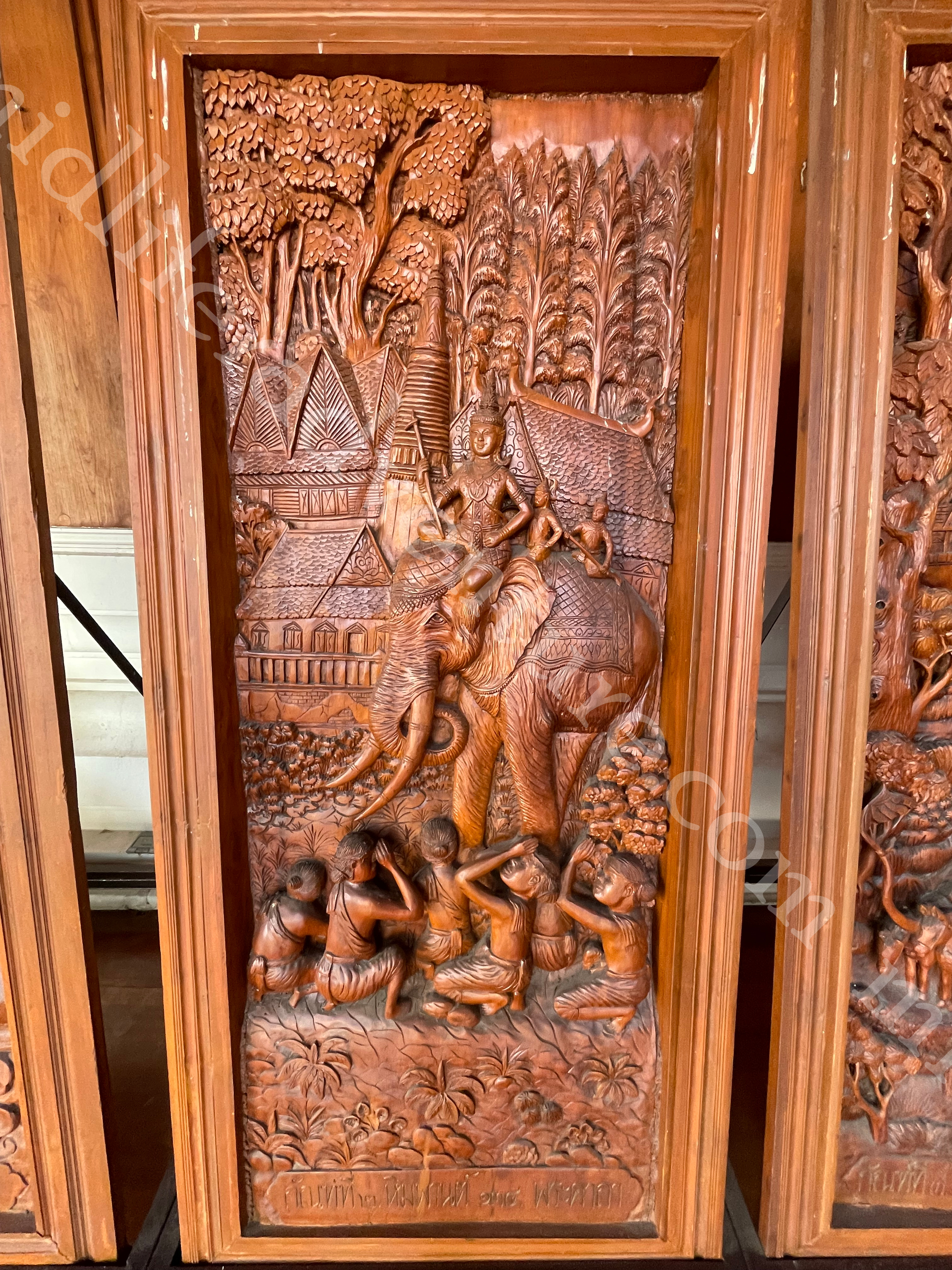
Wat Chai Watthana Ram
Built in 1630 by King Prasat Thong to honour his mother, Wat Chai Wattanaram was conceived as a replica of the Angkor temple. Interestingly the street around the temple is full of traditional Thai outfits that are available to rent and be dressed to the nines for photos and touring.

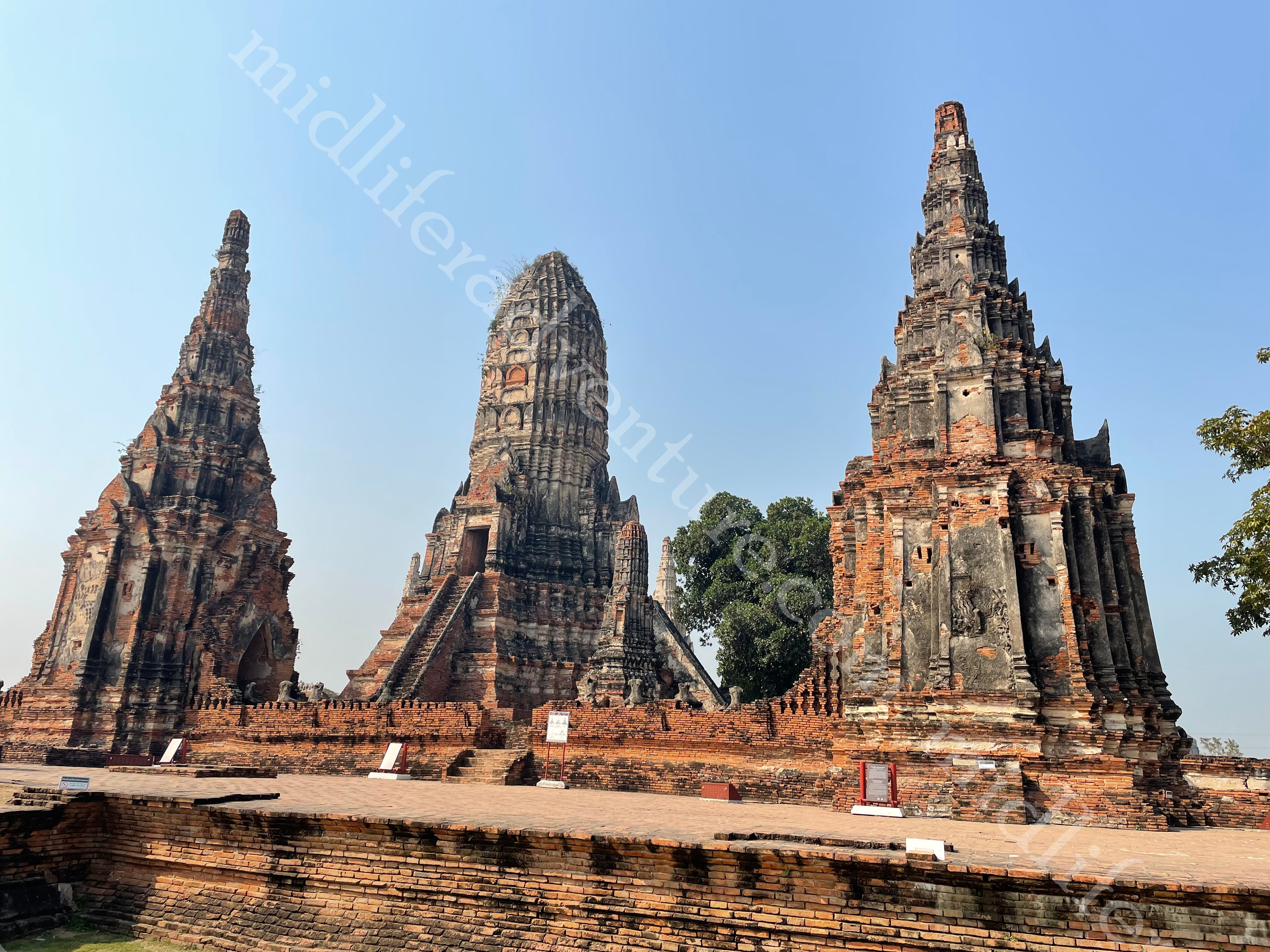

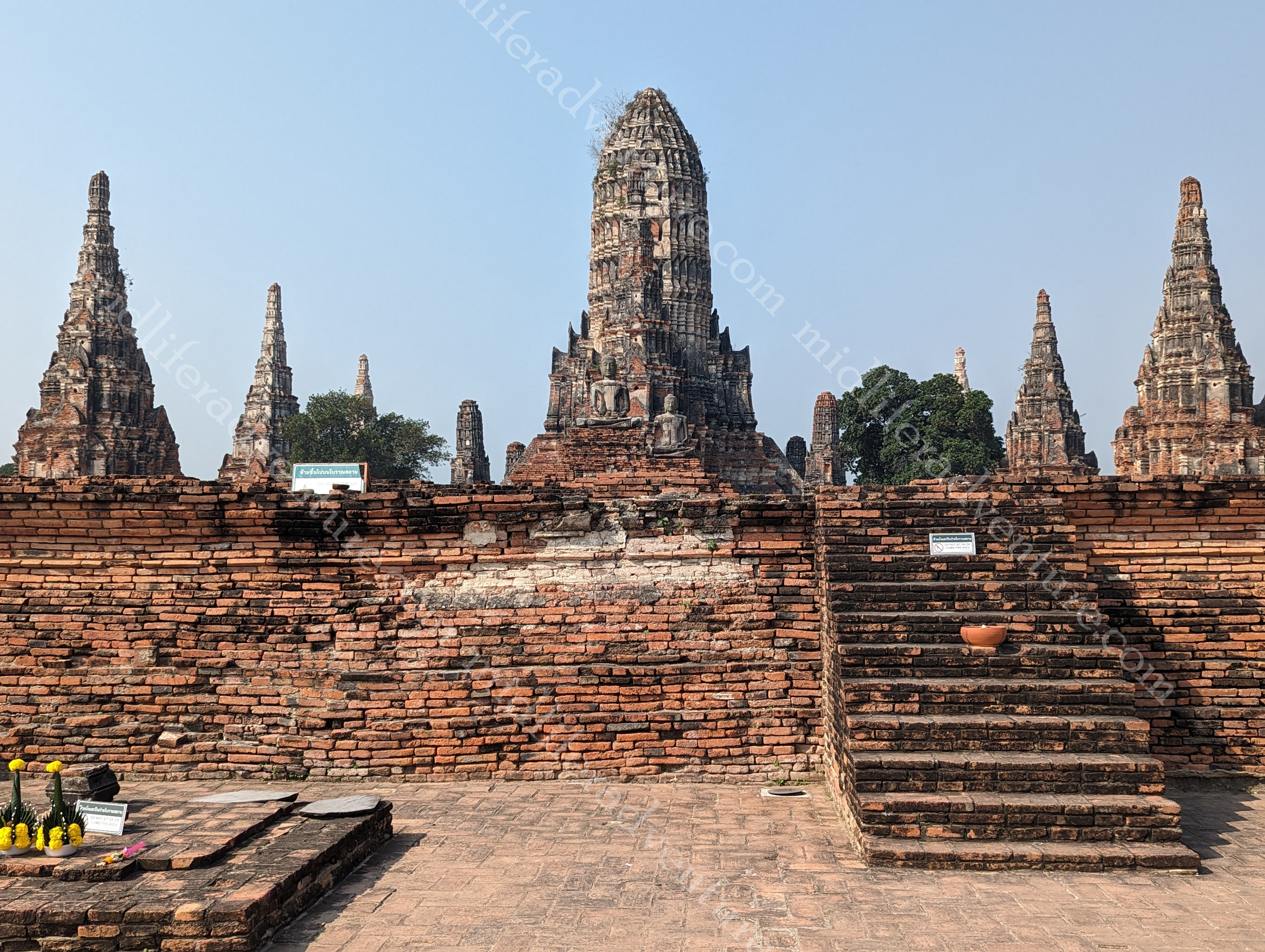
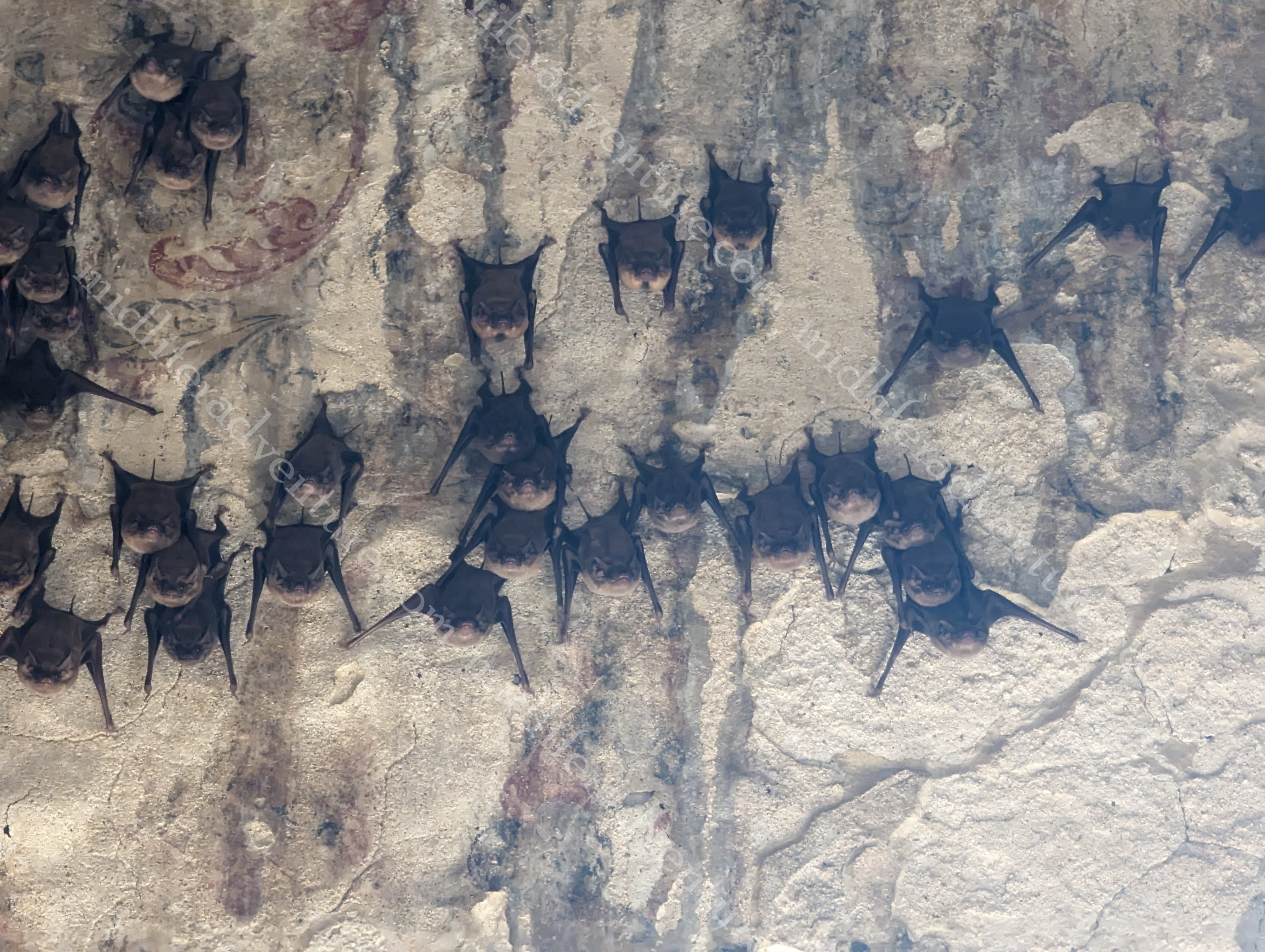
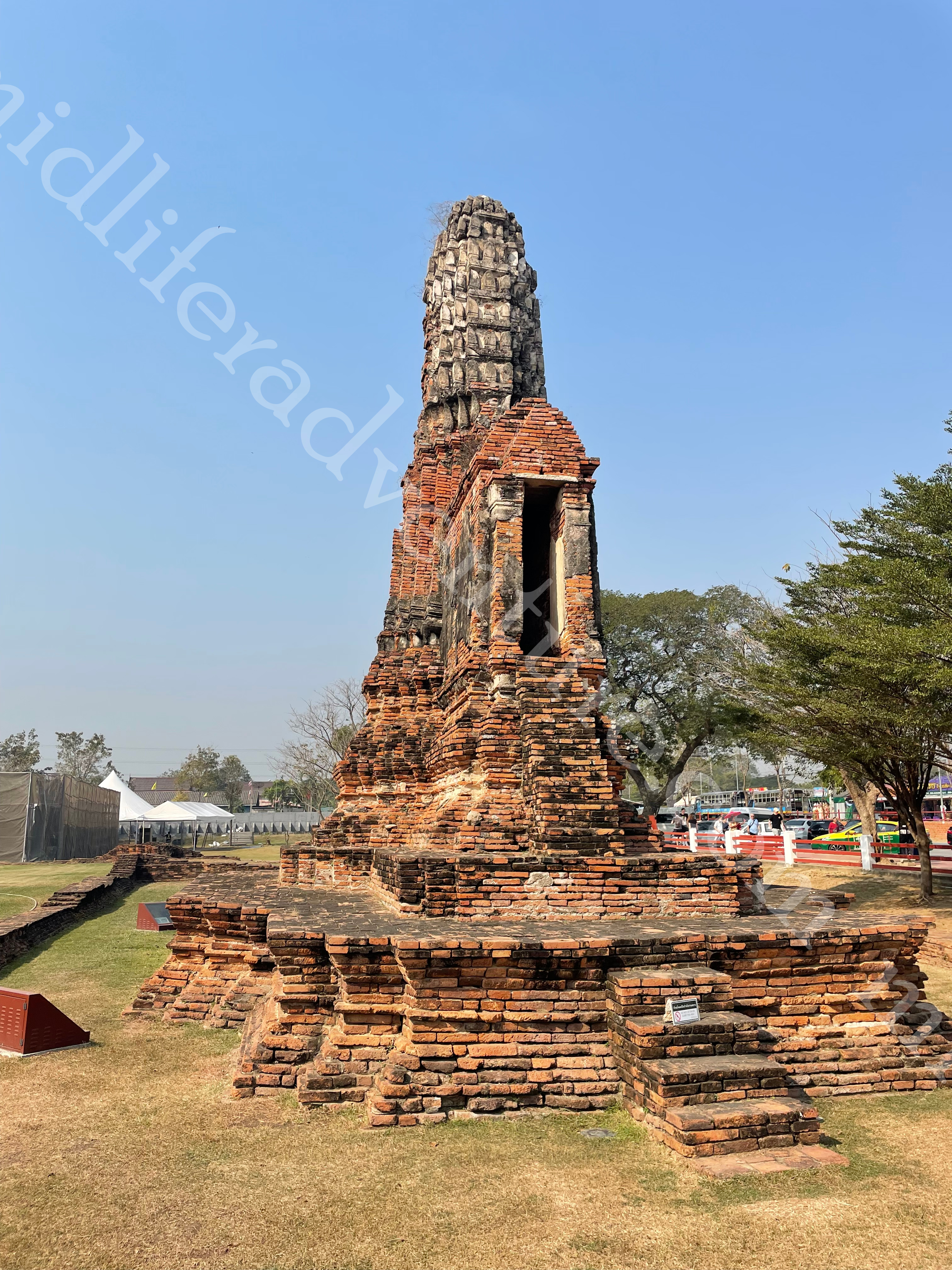
Wat Phukhaothong and King Naresuan the Great monument
King Naresuan the Great is a national hero and one of Thailand’s most
revered monarchs as he liberated the country from the Burmese. His incredibly impressive tribute statue can be found a couple of kilometres to the north of the city along with another temple with an impossibly long staircase (which of course – Jill climbed).
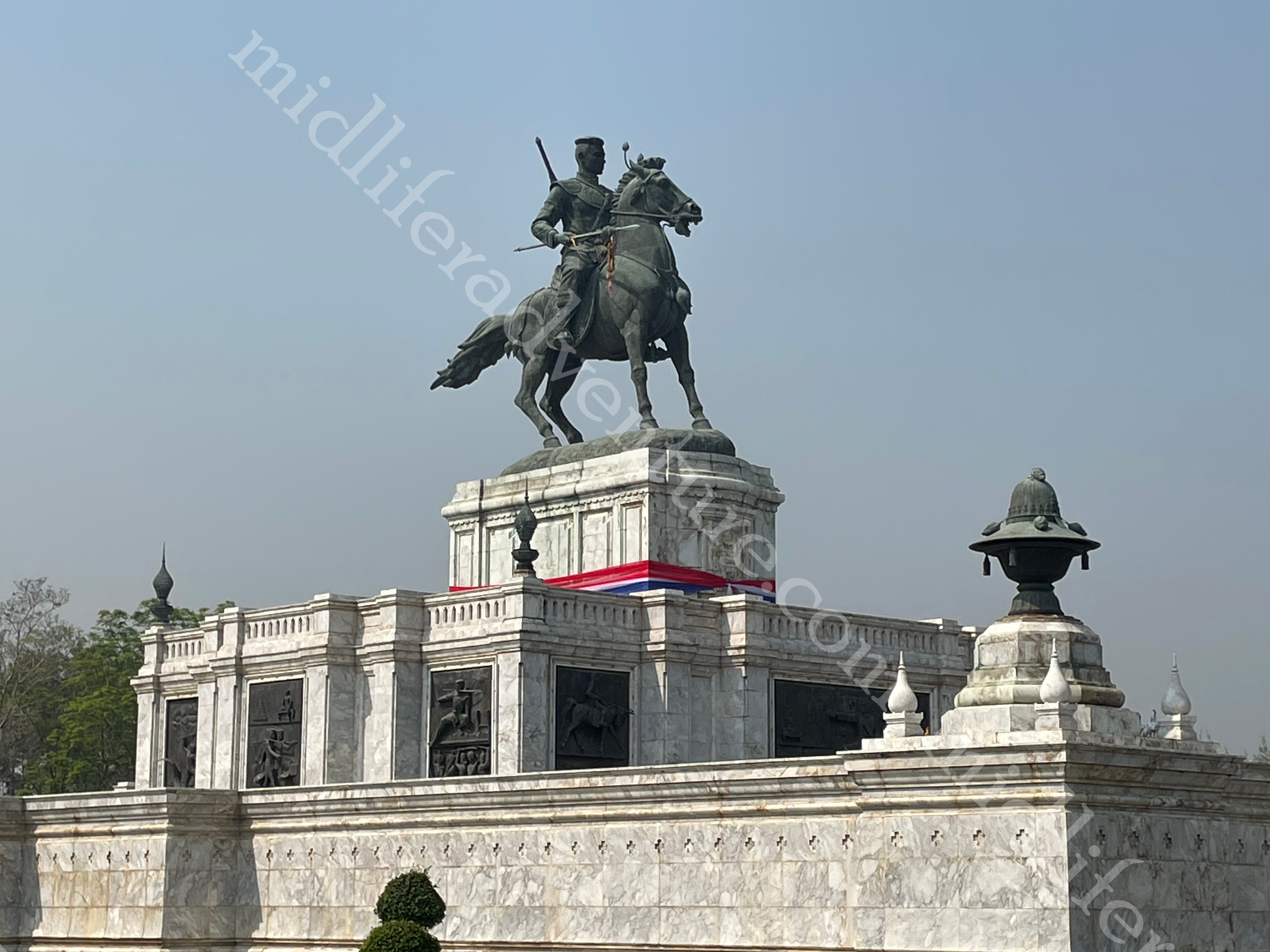
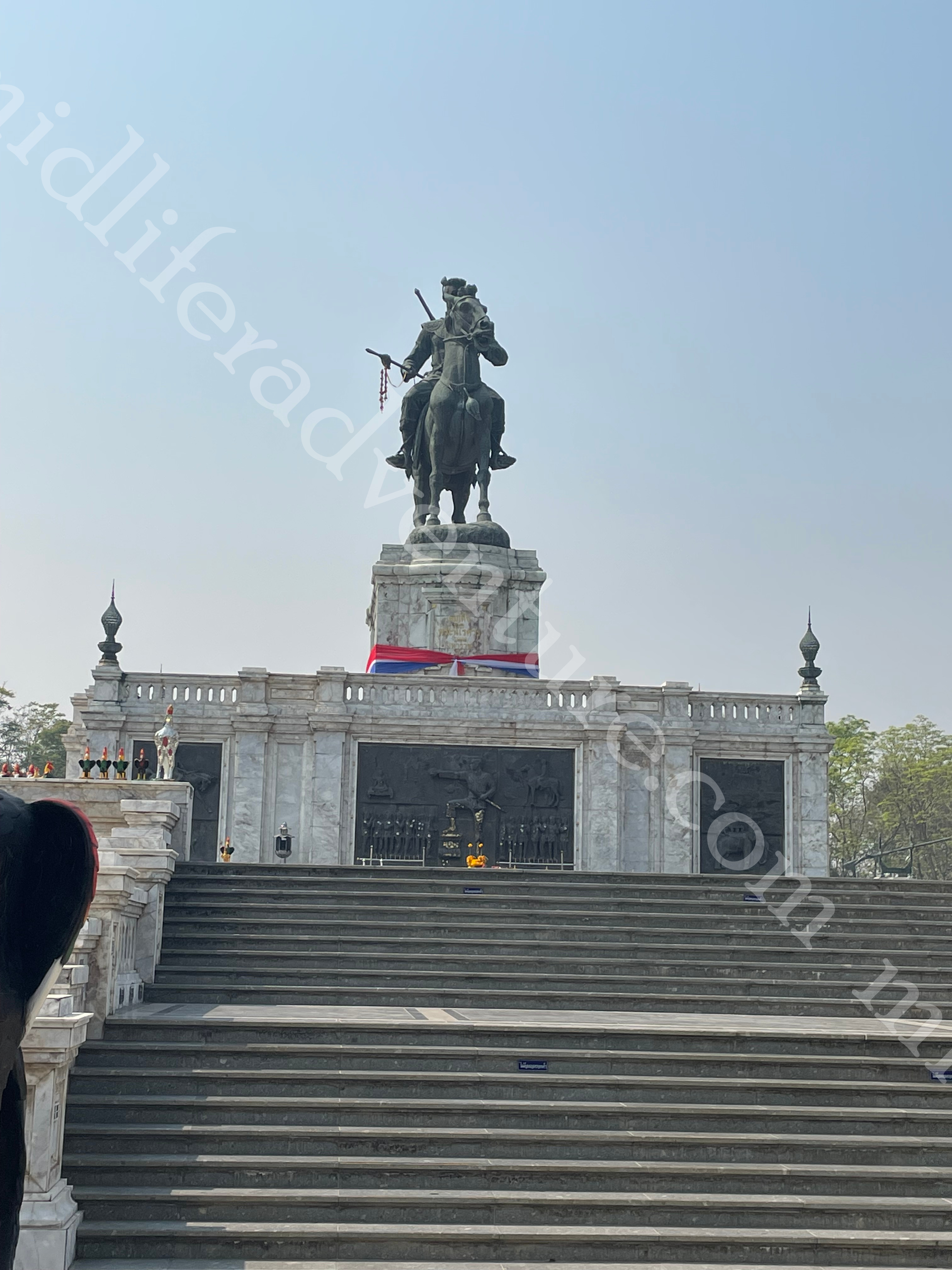
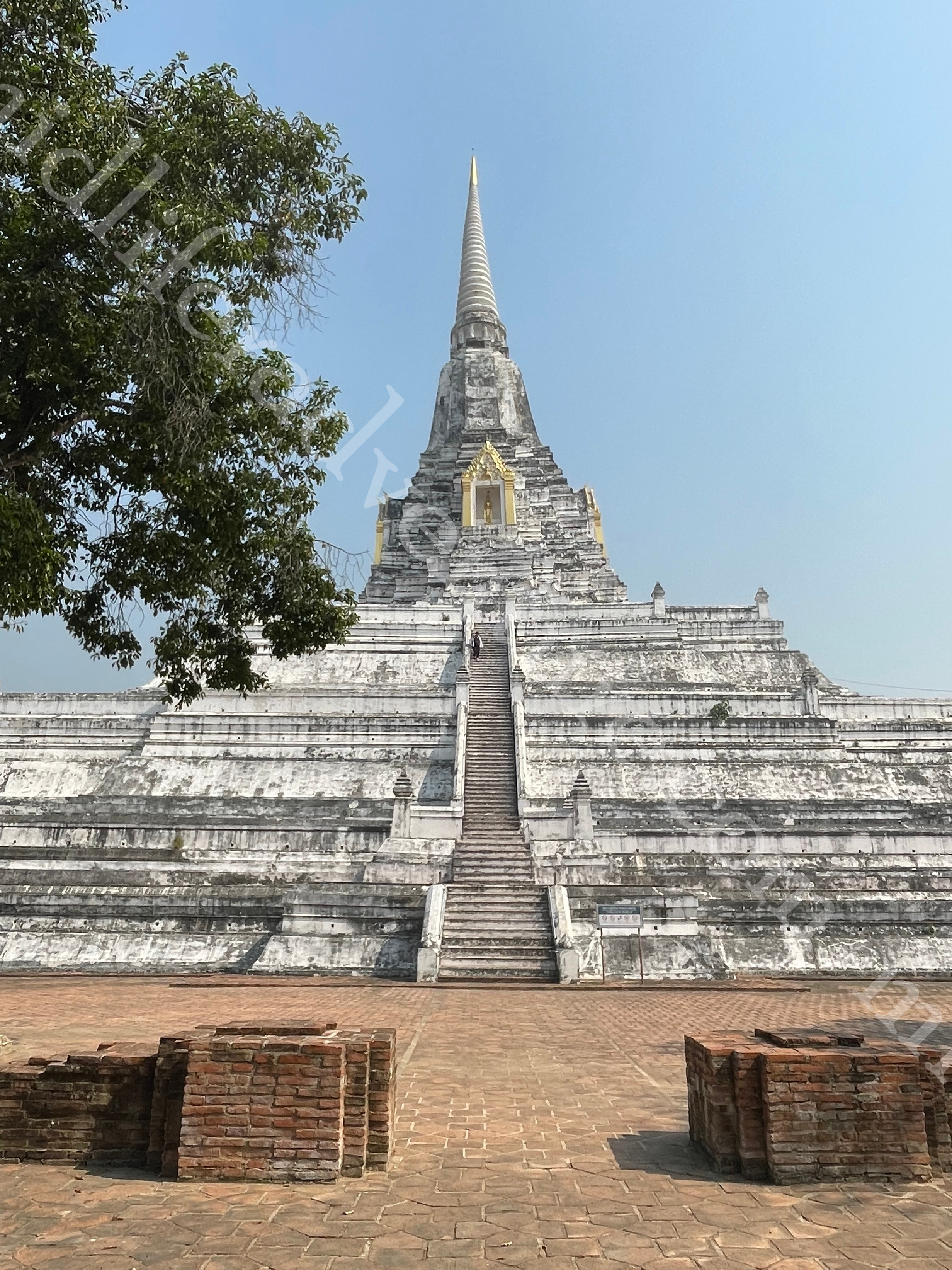

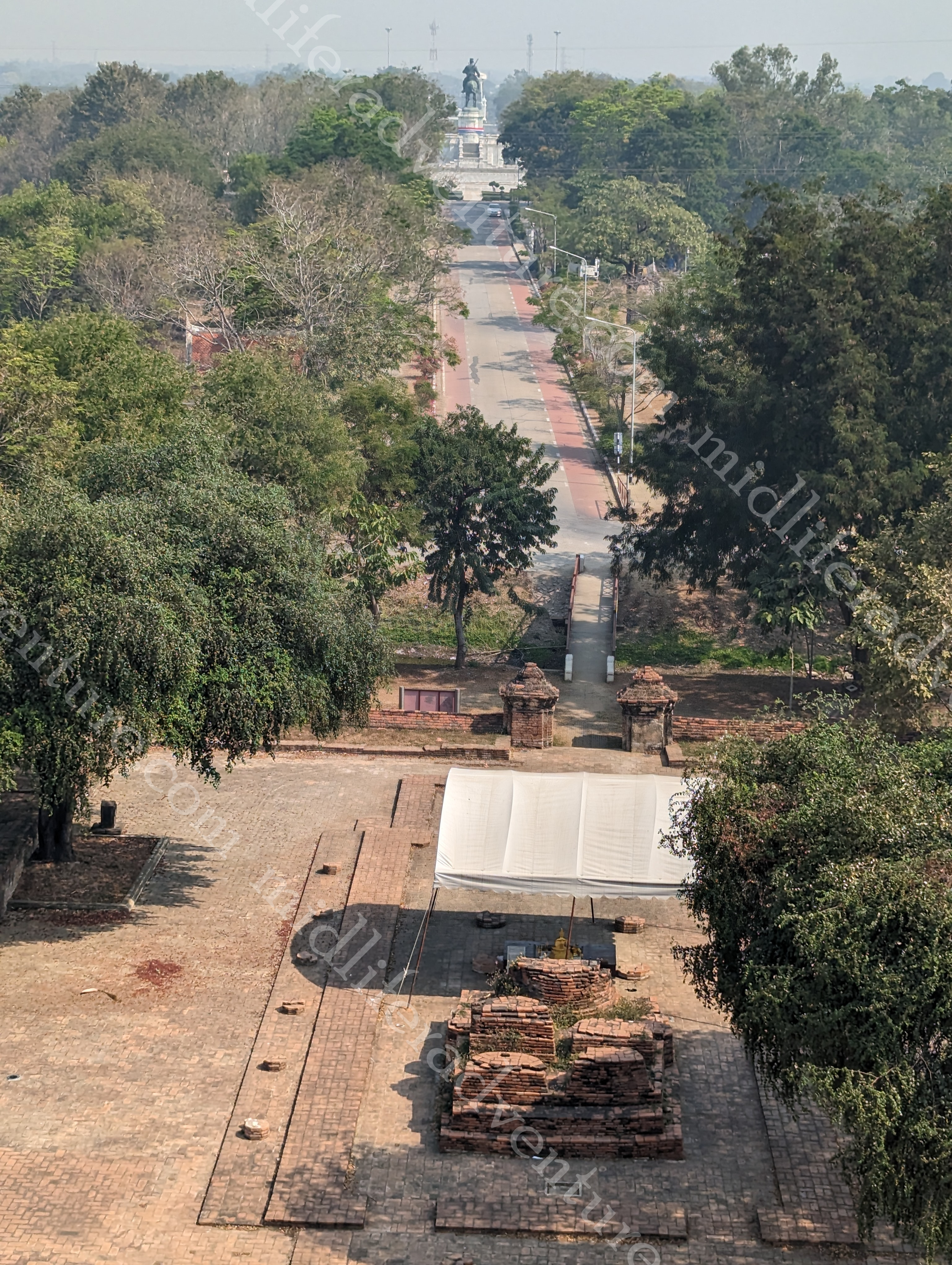
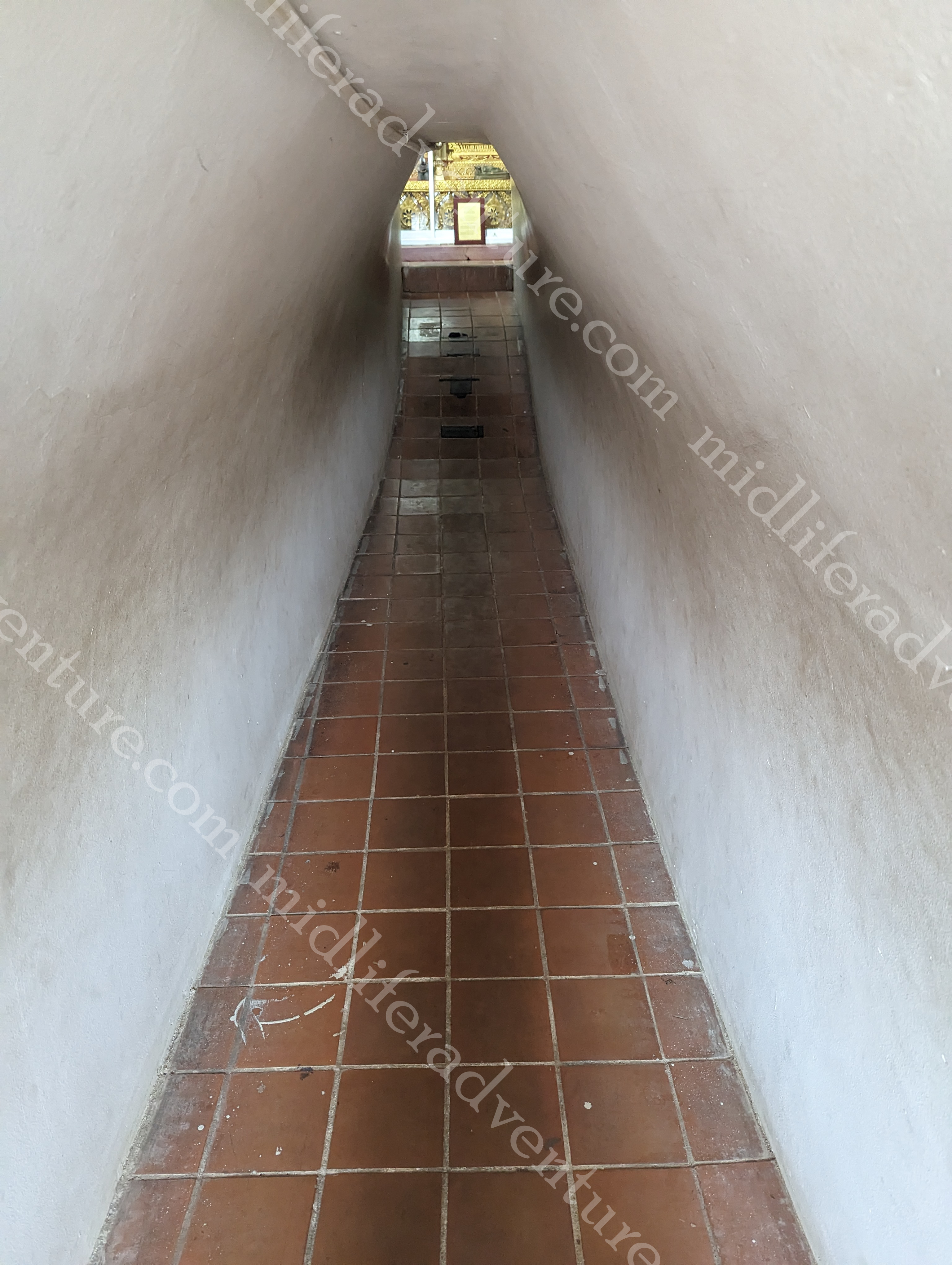
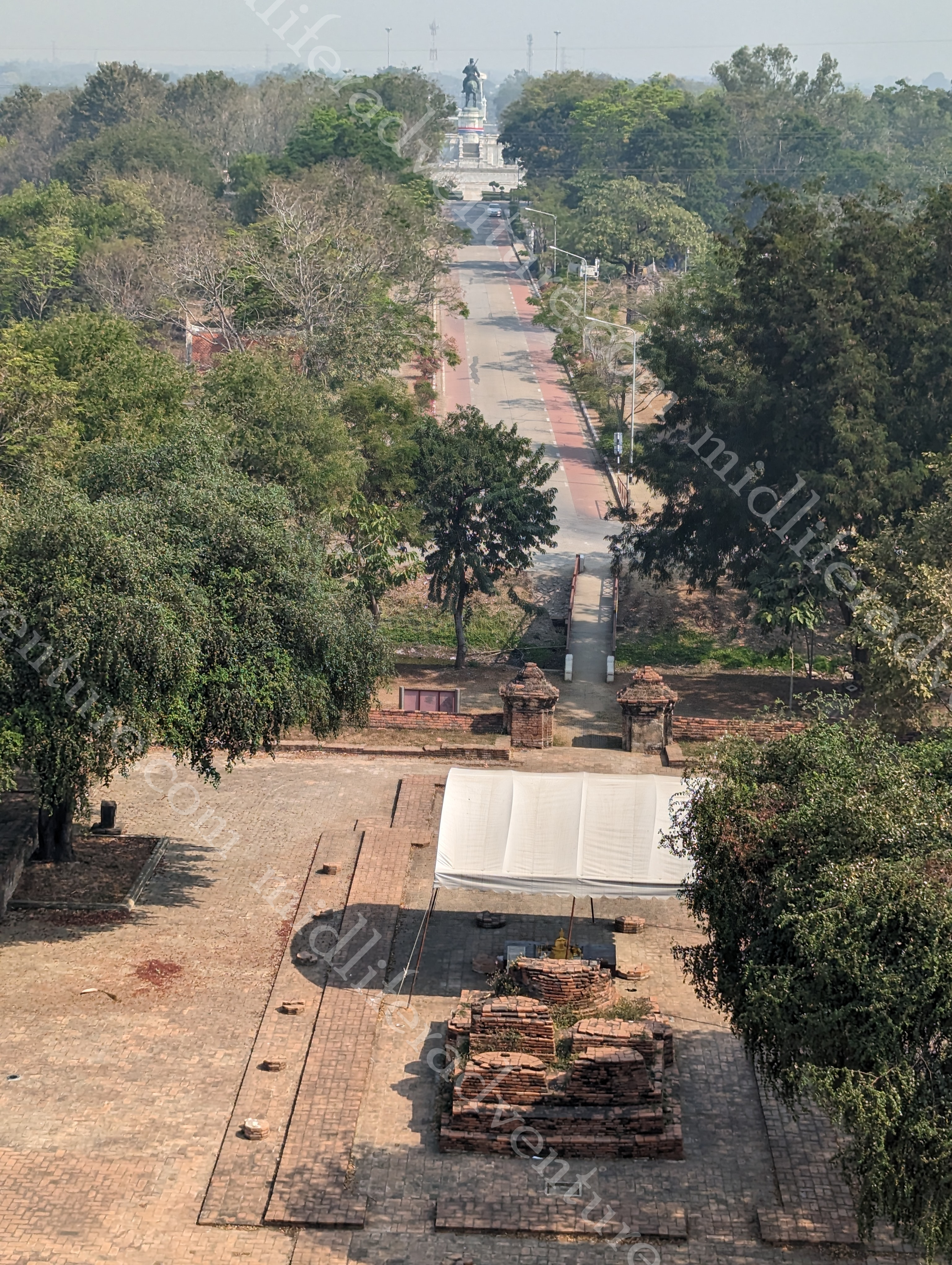
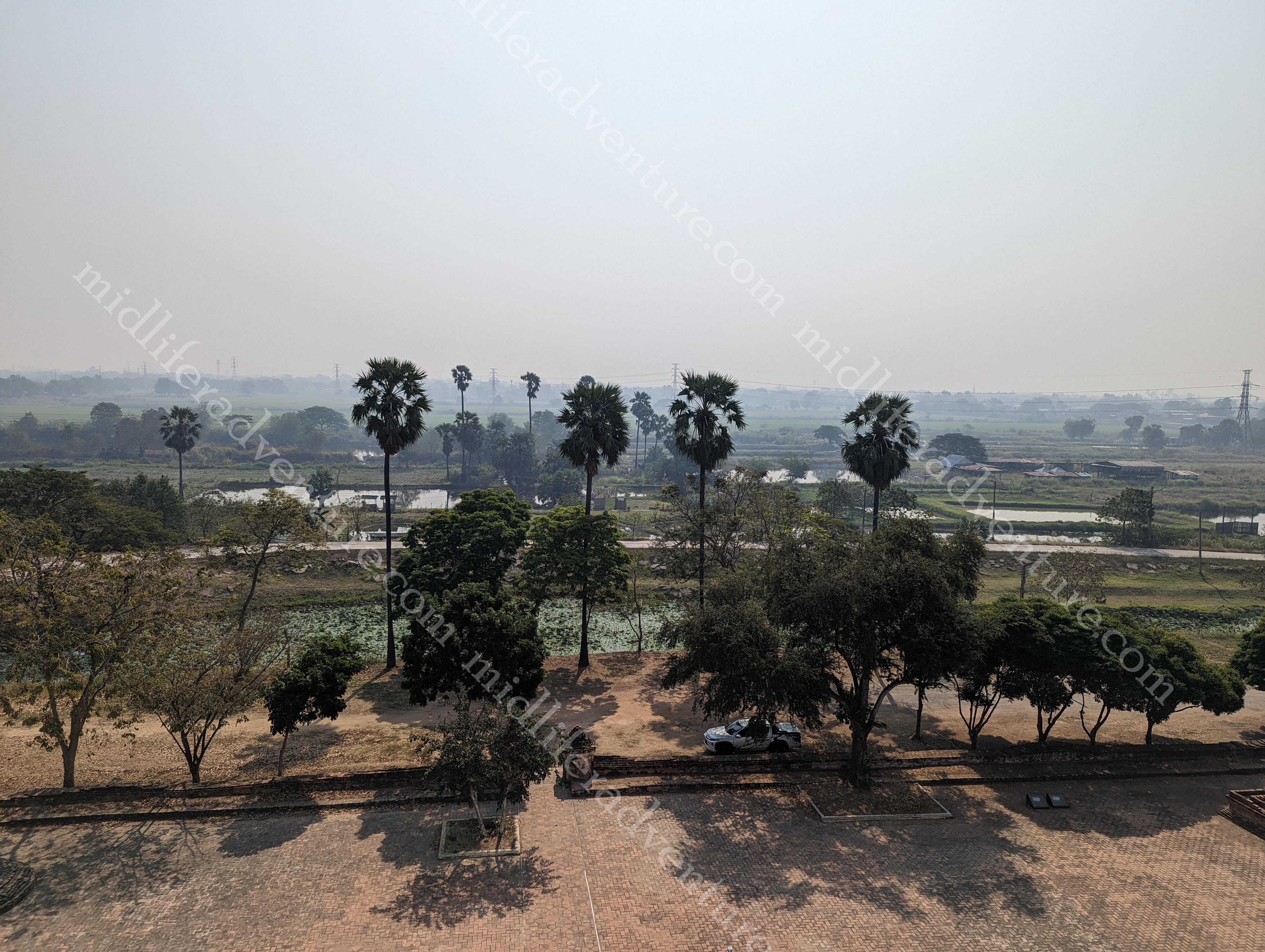
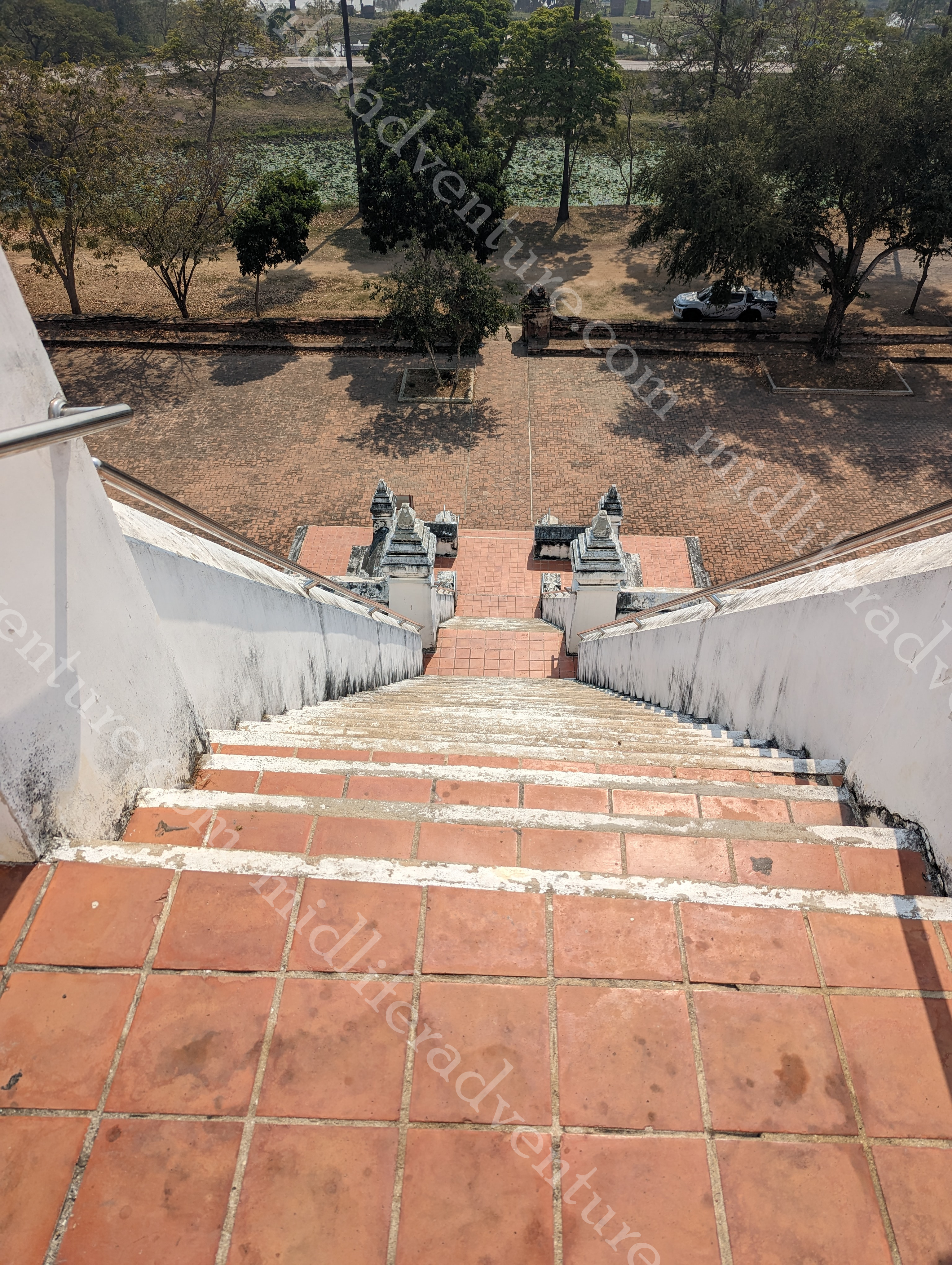
Wat Thammikarat
This is the last of the temples that we visited. It is located in front of the ancient palace and after a fair day trekking about in 37 degree heat we decided that we were done.
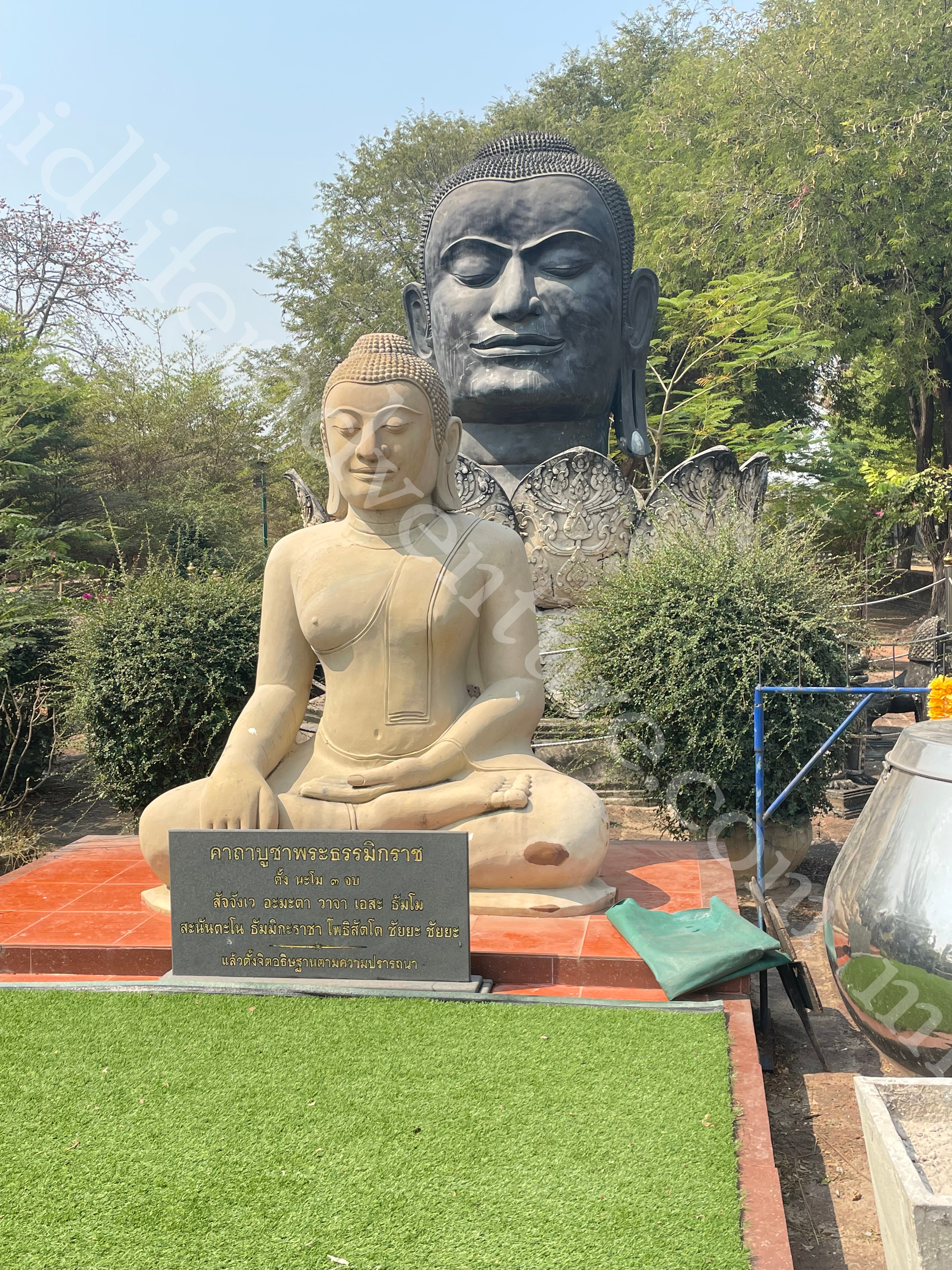
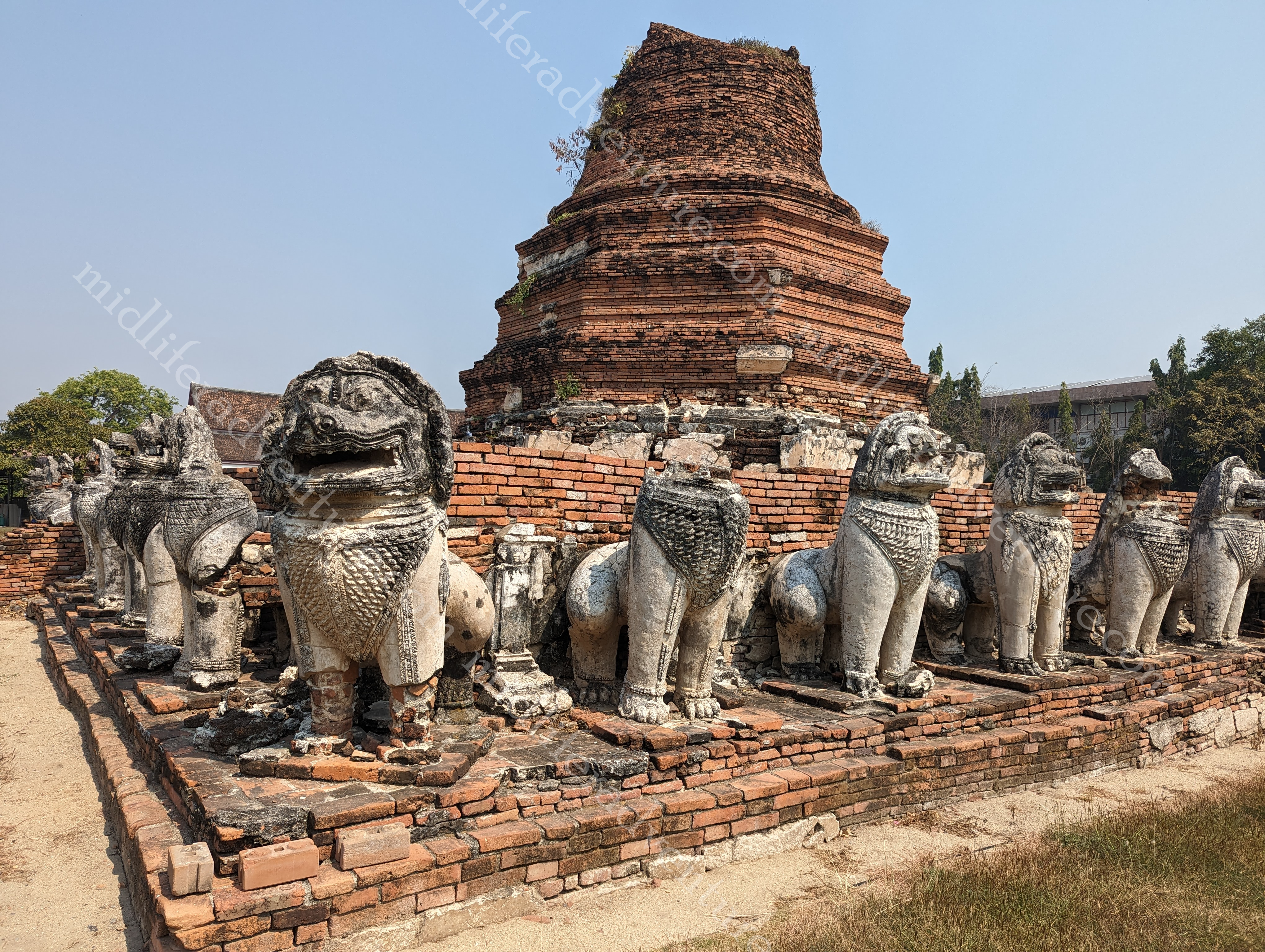

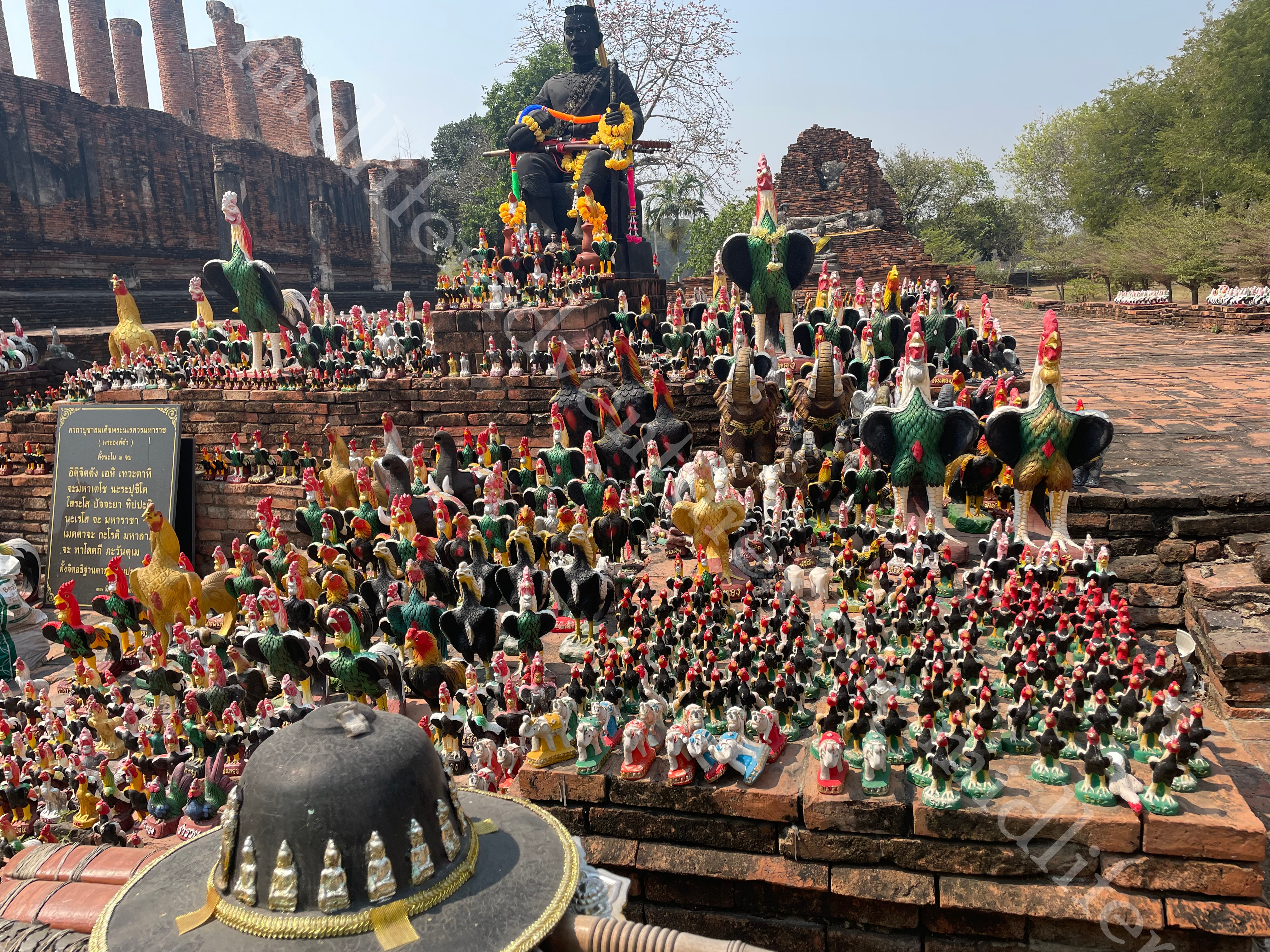
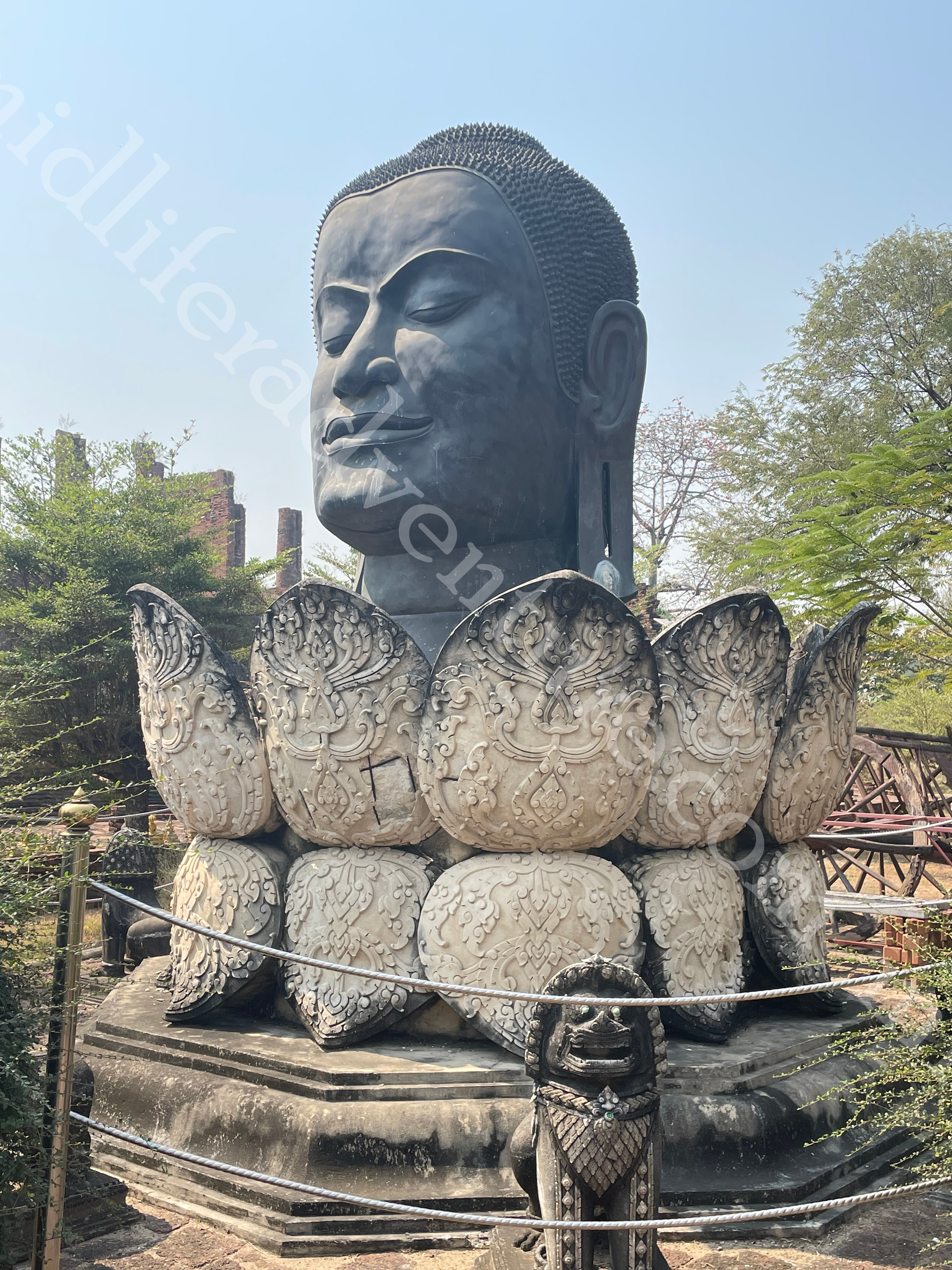
Water Monitors
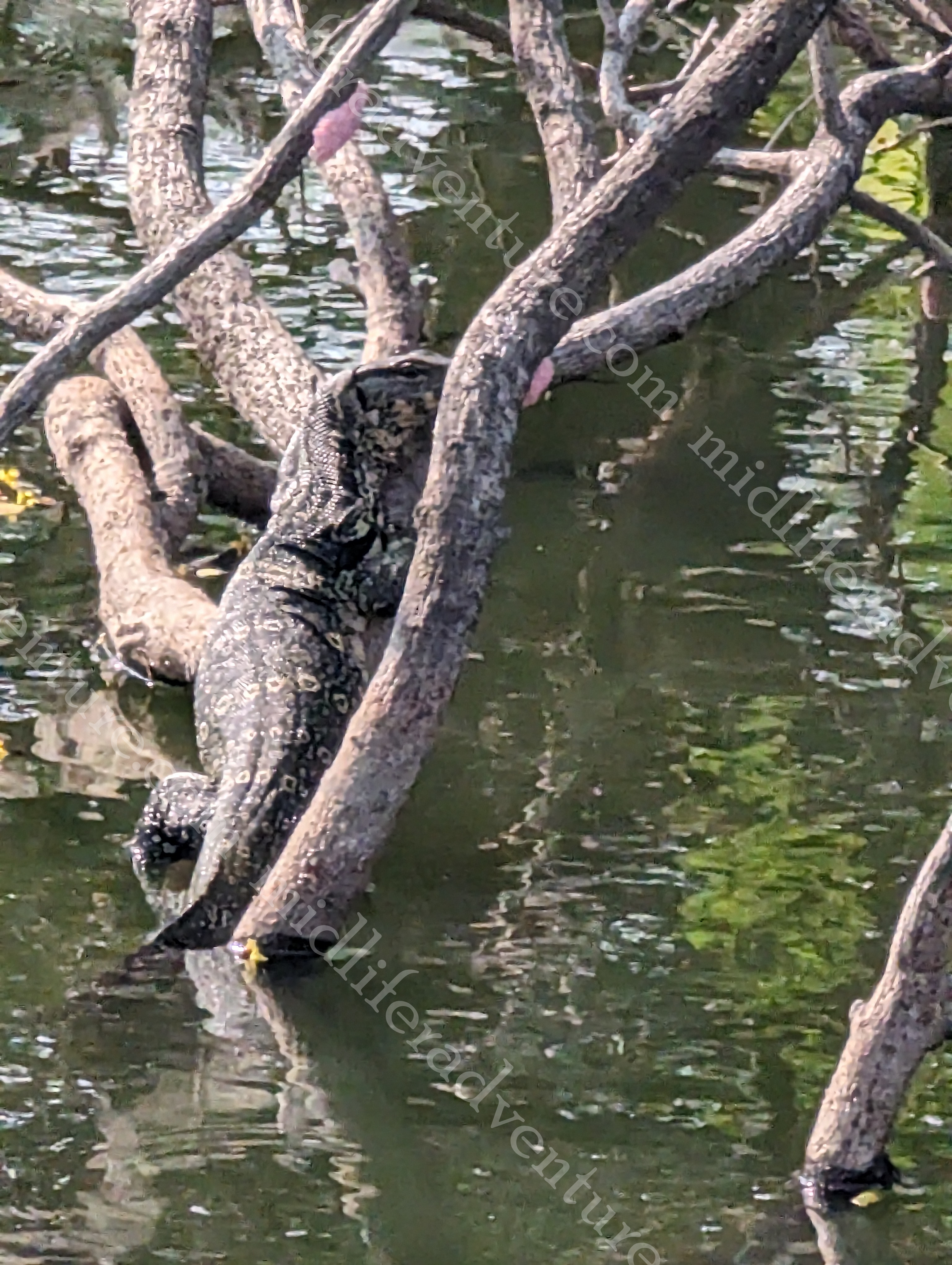
The water monitor (Varanus salvator) is a large lizard native to South and Southeast Asia. While walking along the waterfront we saw some small water monitors (about 50cm long) swimming through the water and resting on the branches of fallen trees. As we walked on further we saw some more examples that obviously had a ready access to a diet of human rubbish and had grown significantly bigger.
The ones we saw were huge. The Thai national parks website tells me that adults rarely exceed 1.5 – 2 m in length, but the largest specimen on record, from Sri Lanka, measured 3.21 m. The ones we saw today were every bit of 2m.
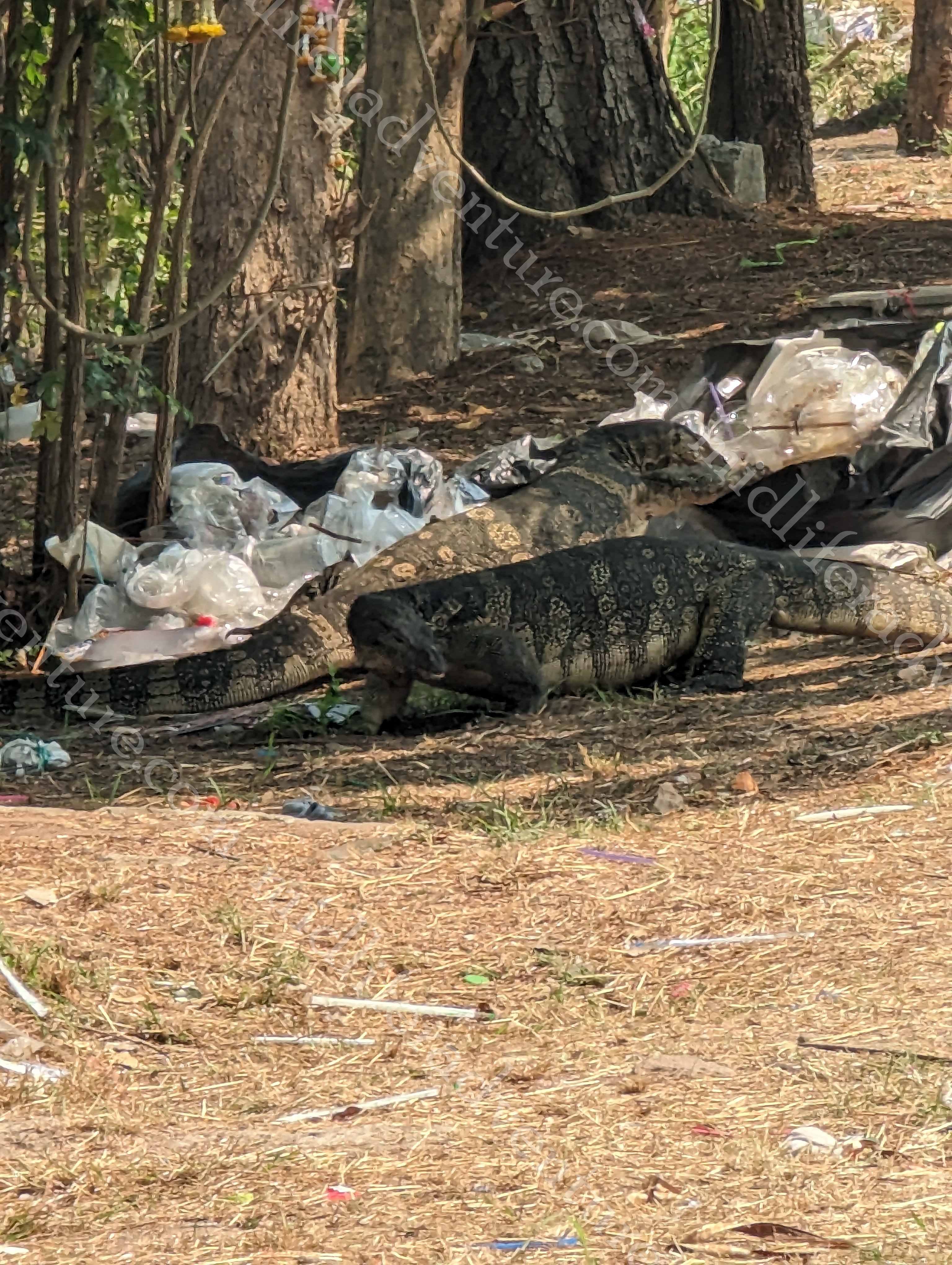
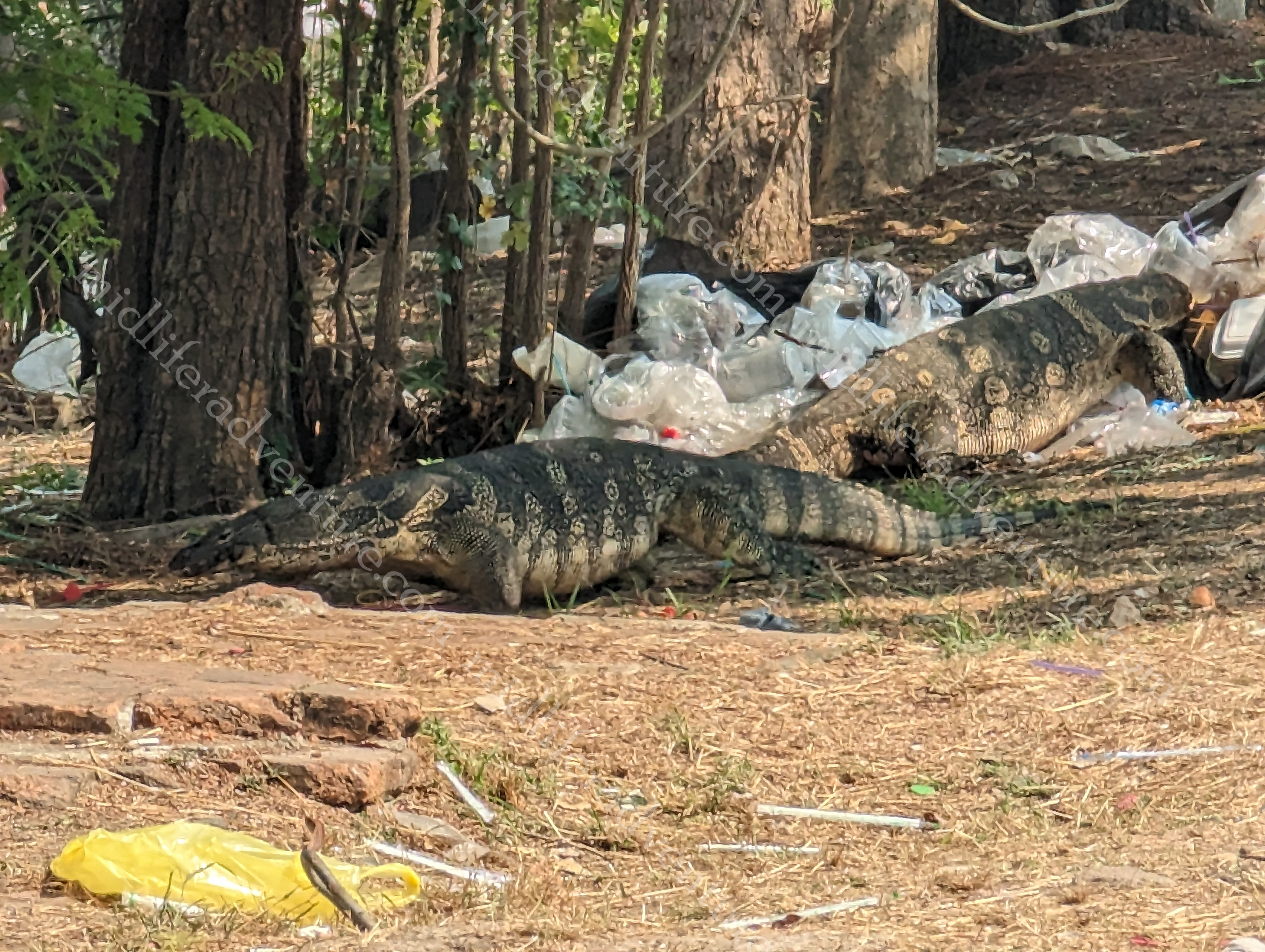
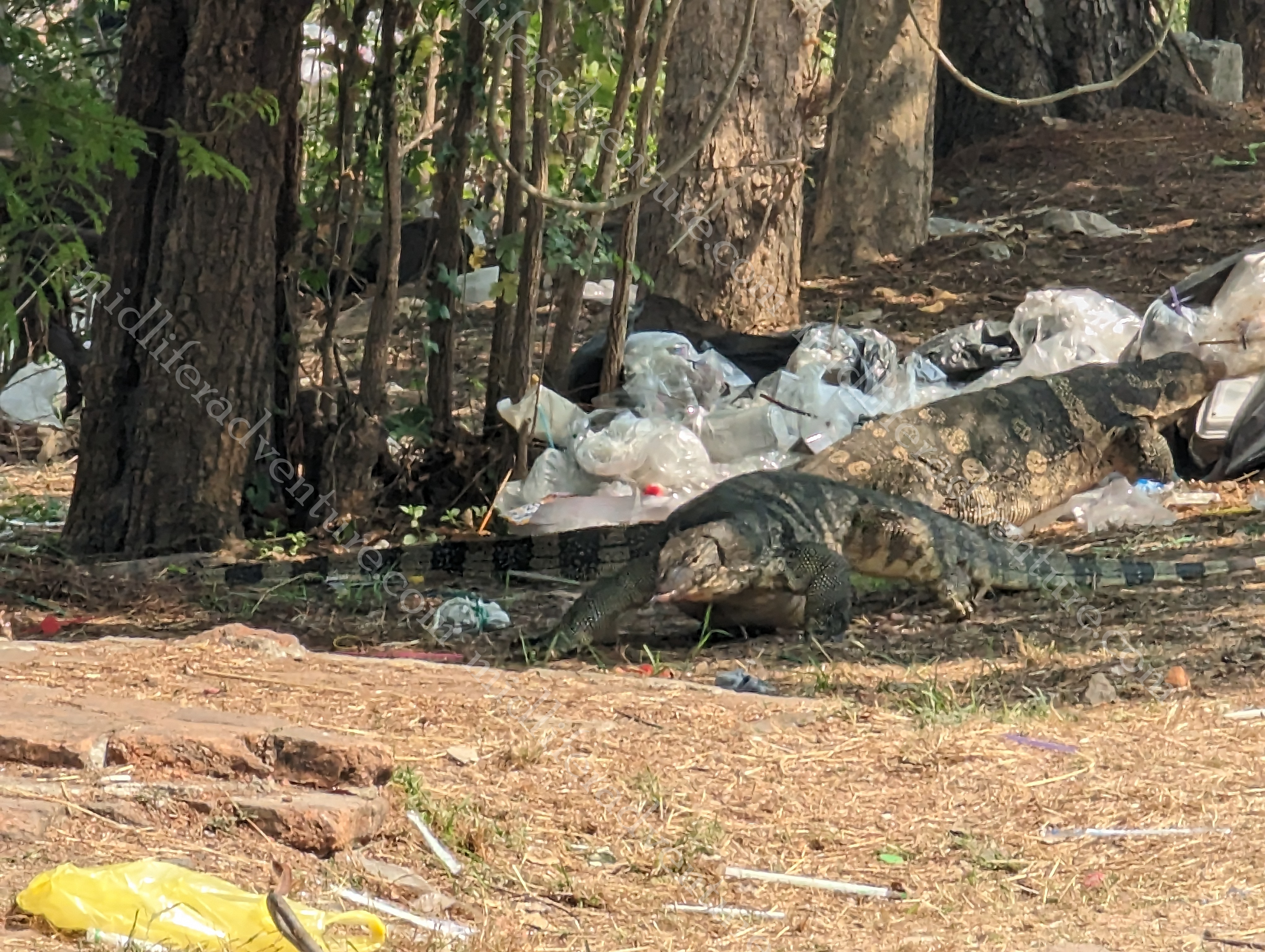
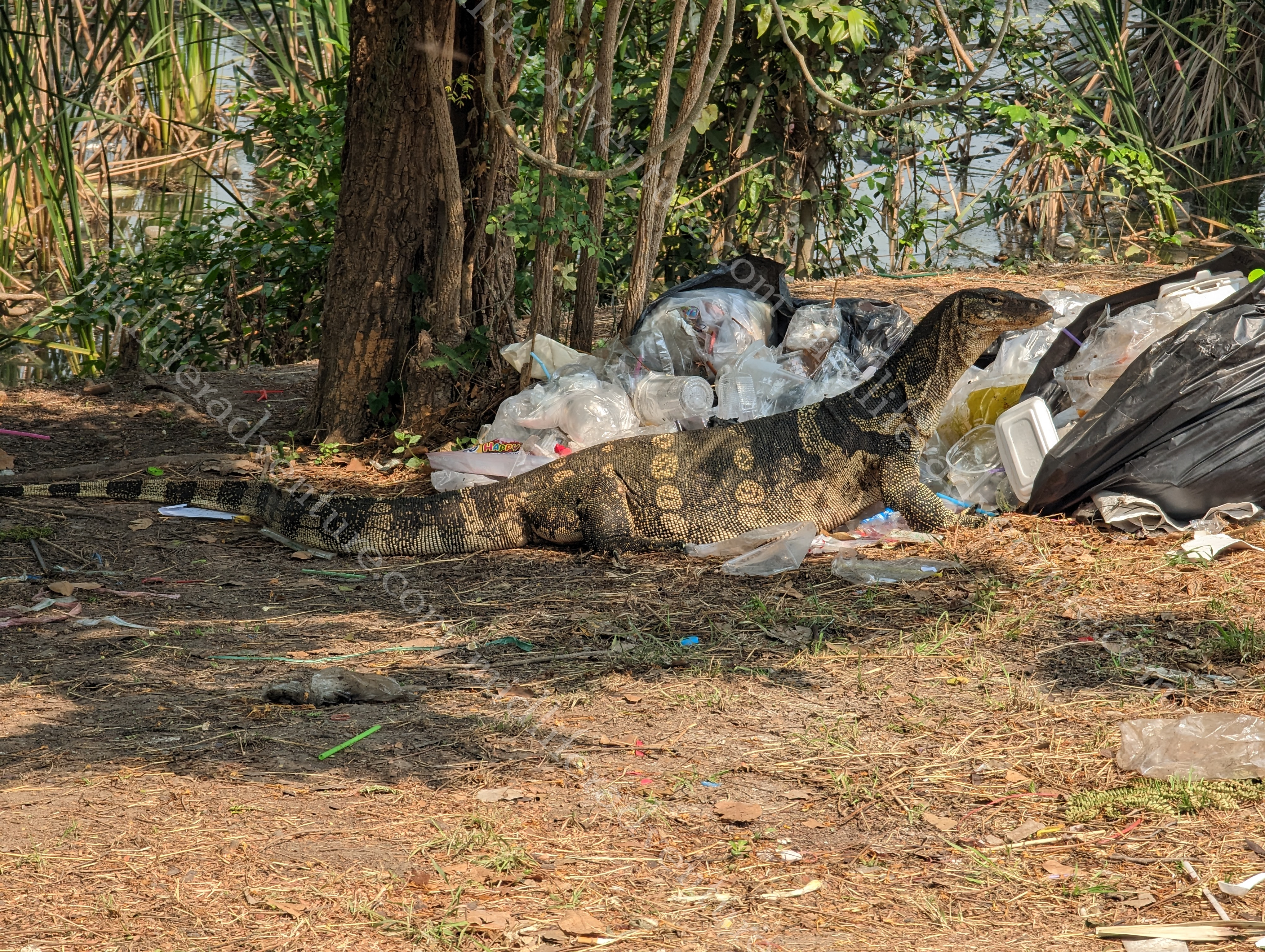
The injustice of the Roti
Roti is a typical SE Asian dessert that I have mentioned many times already. Served typically with banana, condensed milk or chocolate. It can be found at street vendors almost everywhere.

In Cambodia, they were very cheap but we hadn’t got the taste yet so we only had the one. In Chiang Mai we had another one, in Chiang Rai, well Jill has discovered a taste for them. We could get them from almost any vendor for 20 baht ($1). When we moved to Sukhothai the price had halved to 10 baht (50c) and they became a staple on our menu on the walk home. We have landed in Ayutthaya and the price is a ridiculous 50 baht ($2.50) and Jill is pouting furiously at the 500% markup and is boycotting their purchase.
